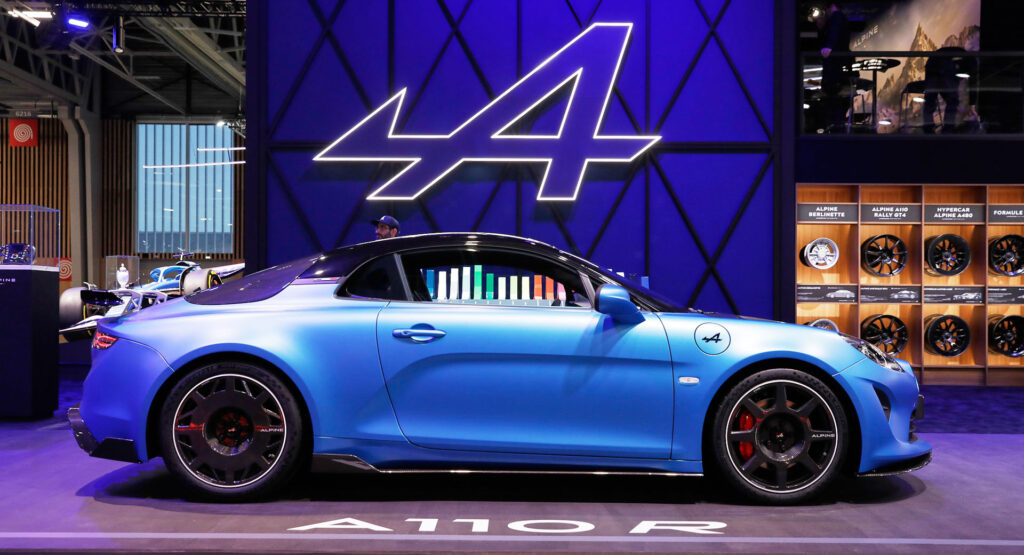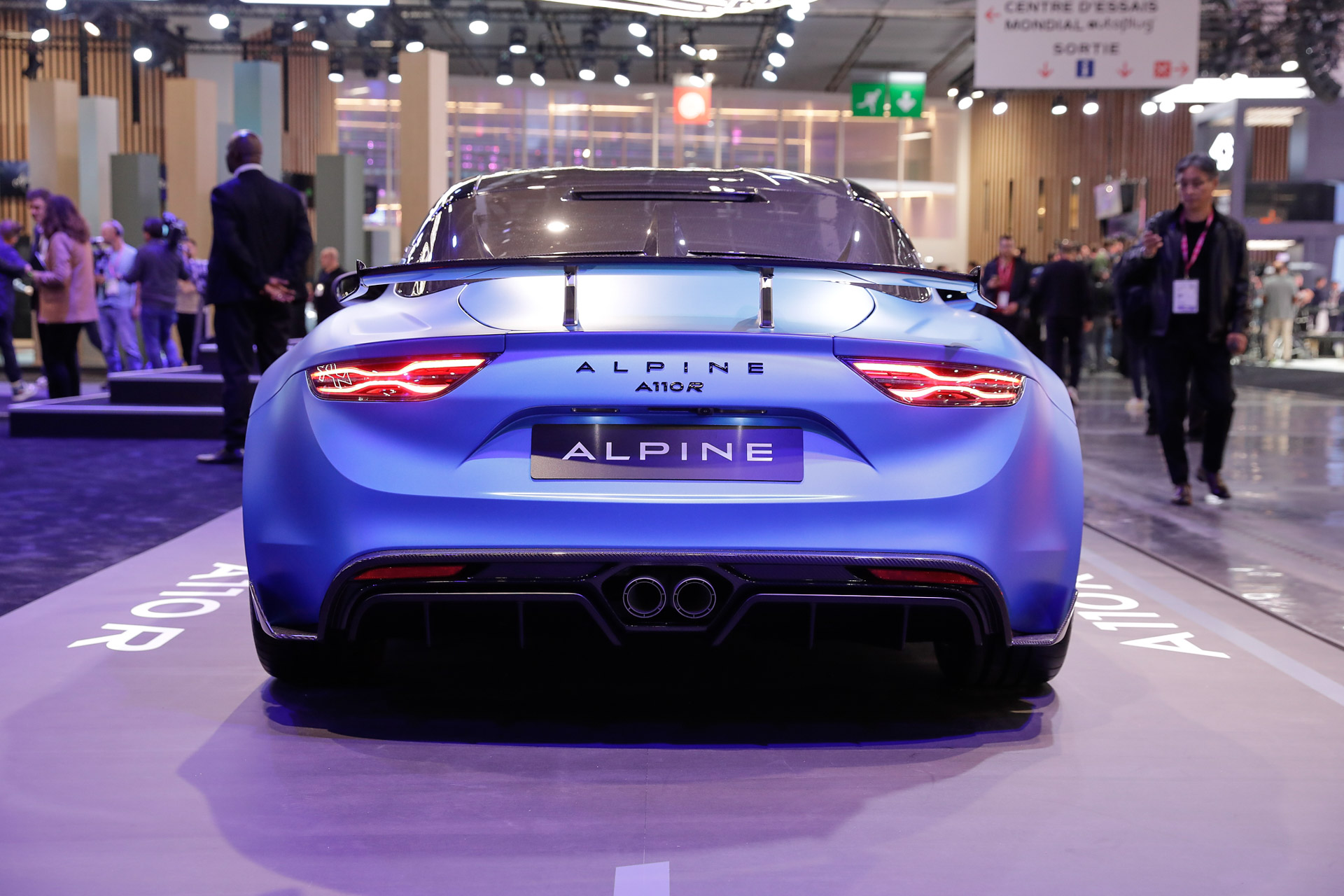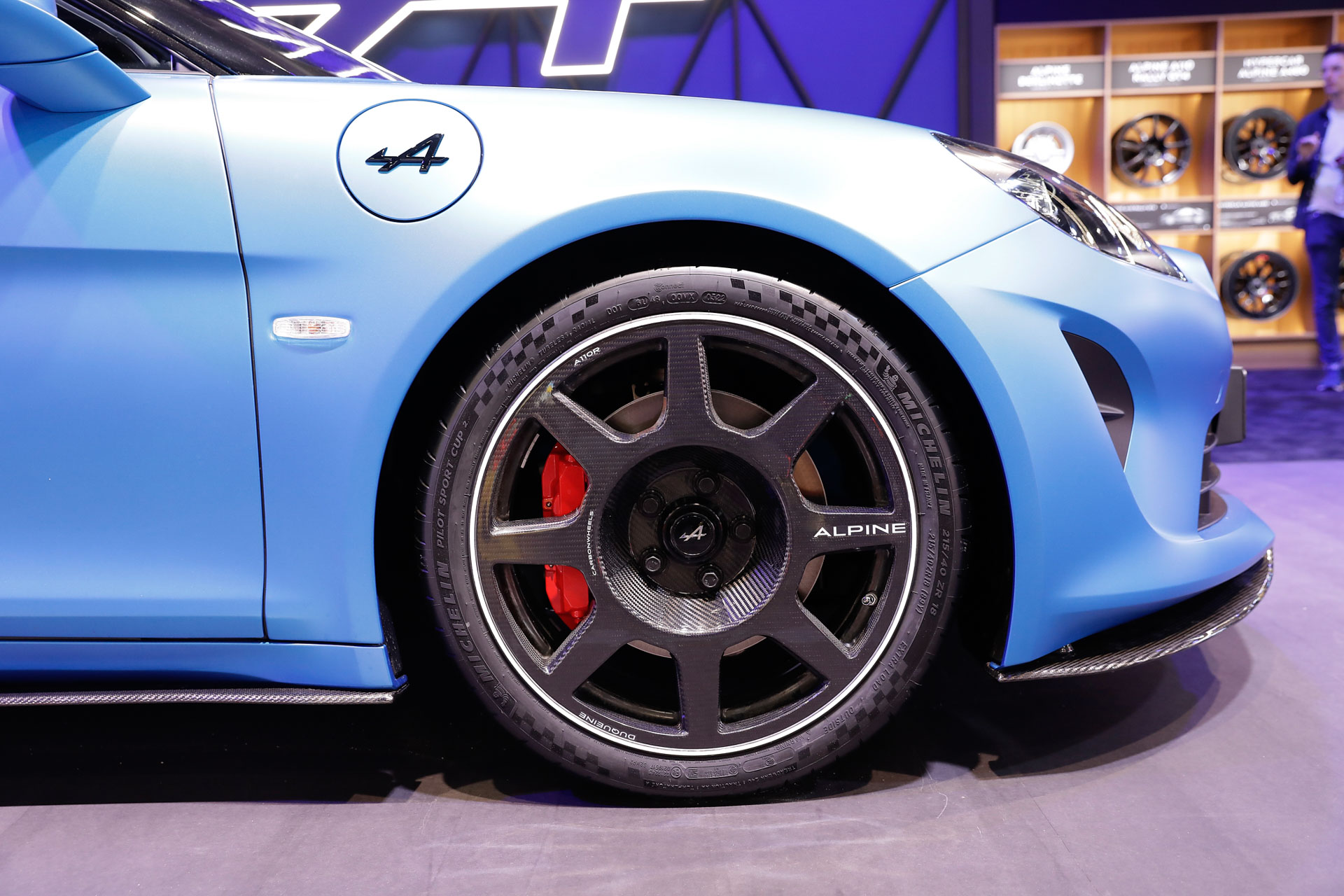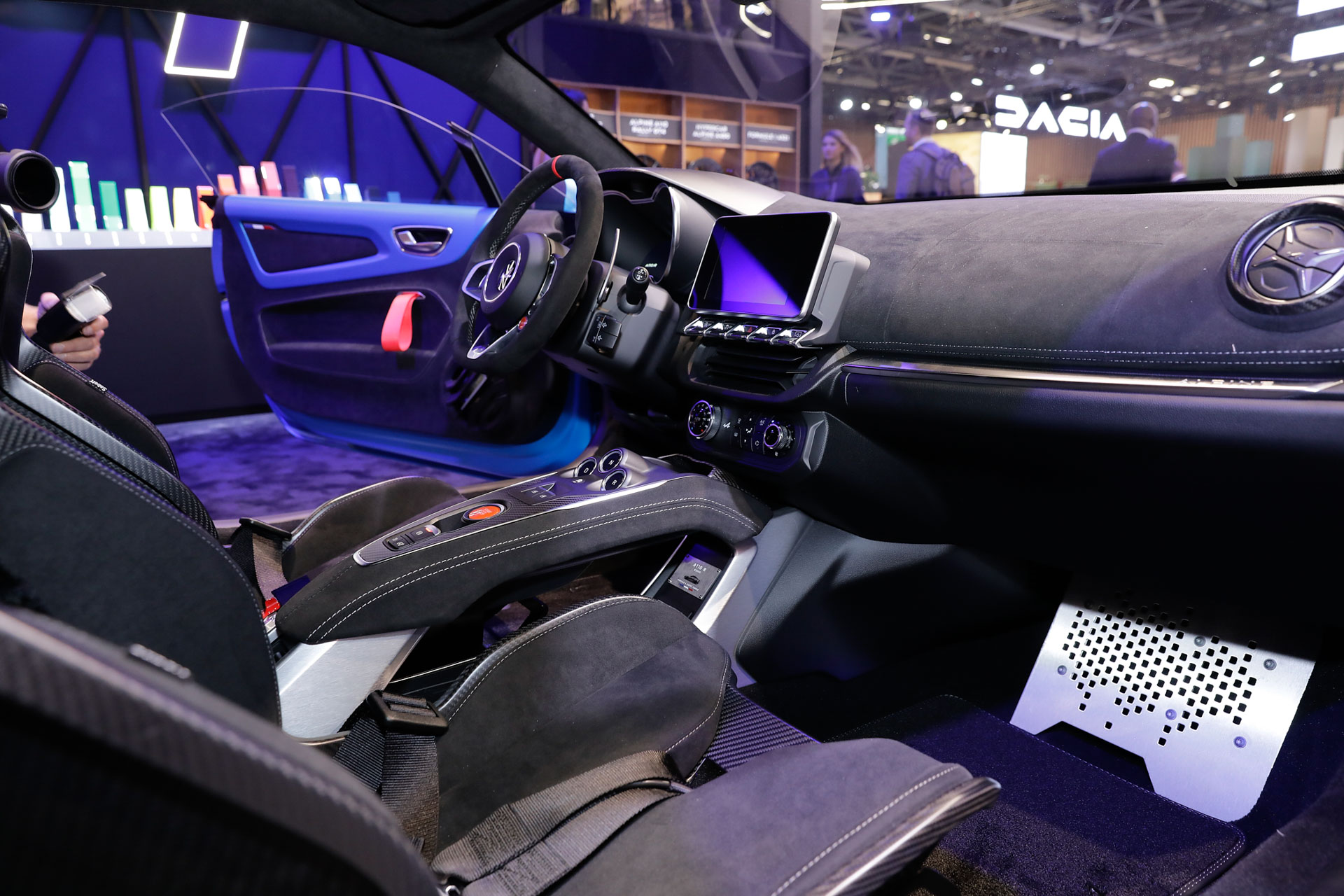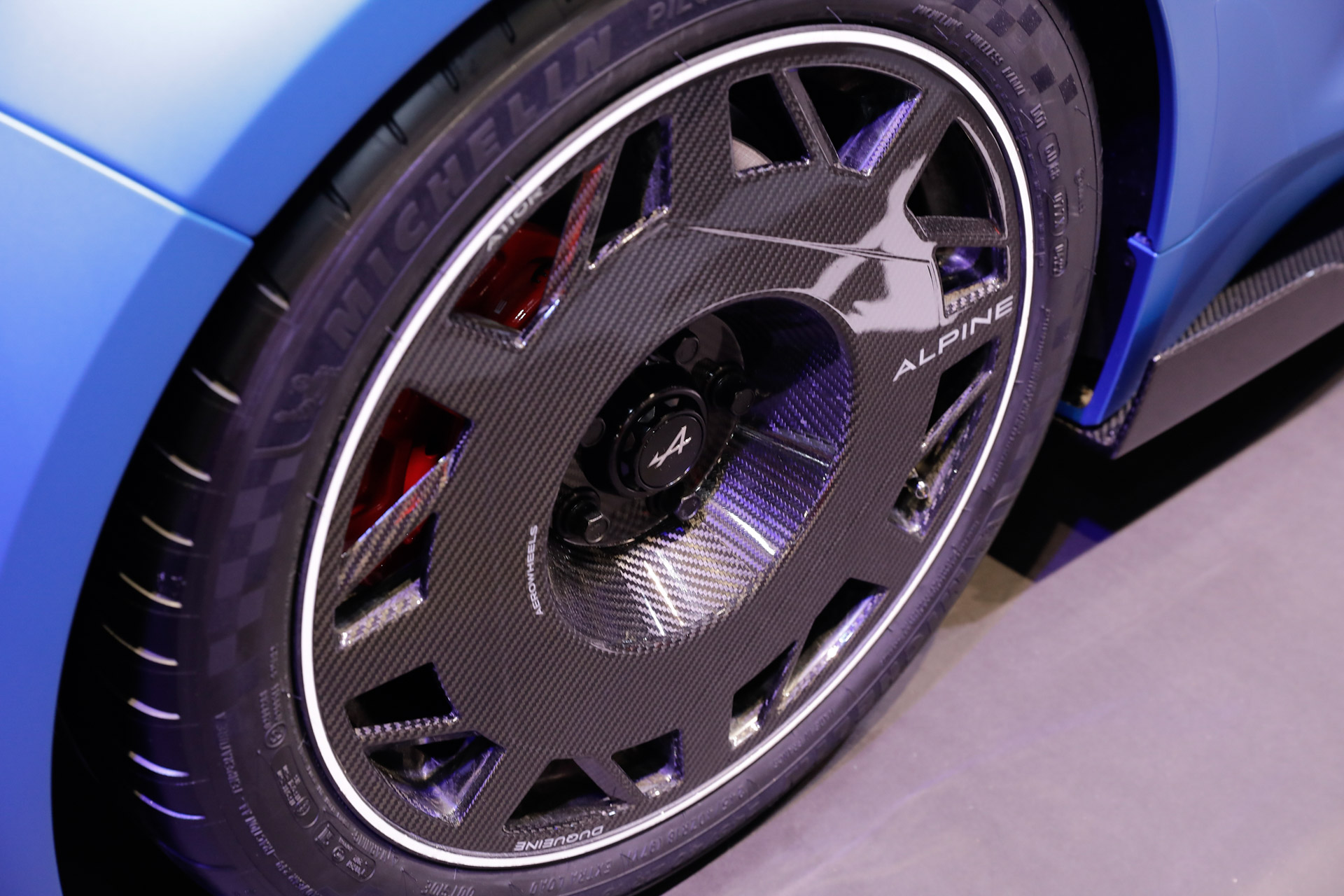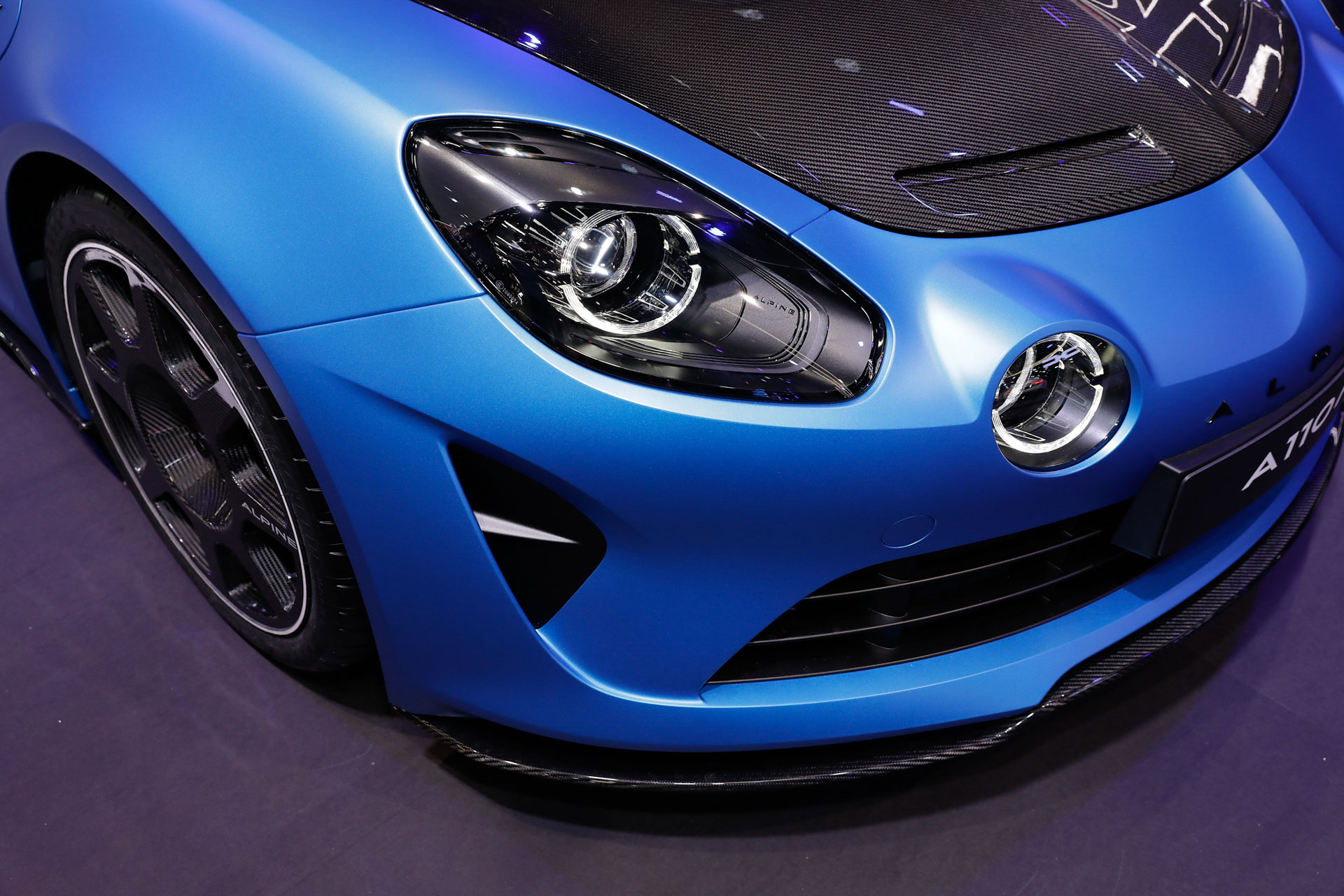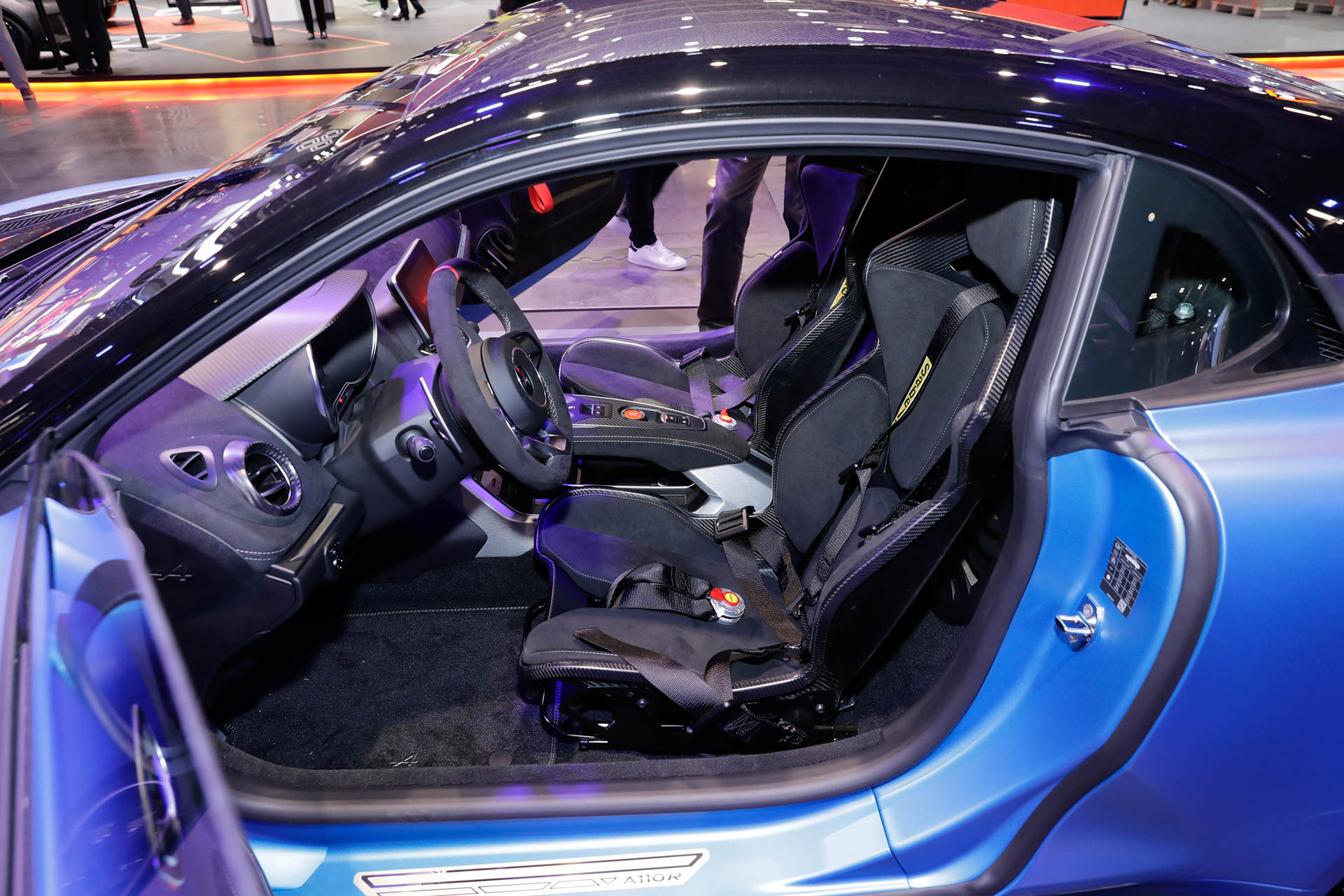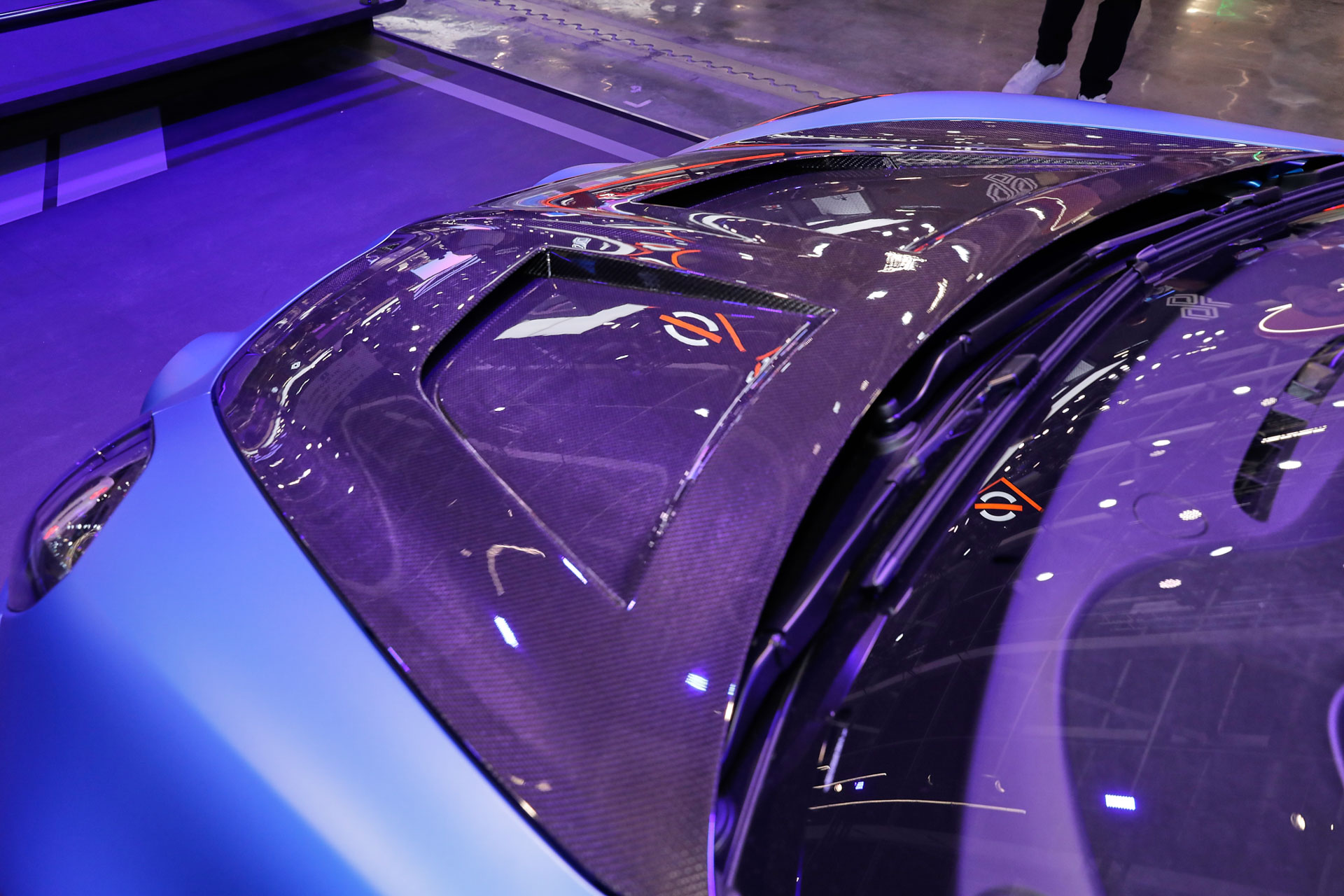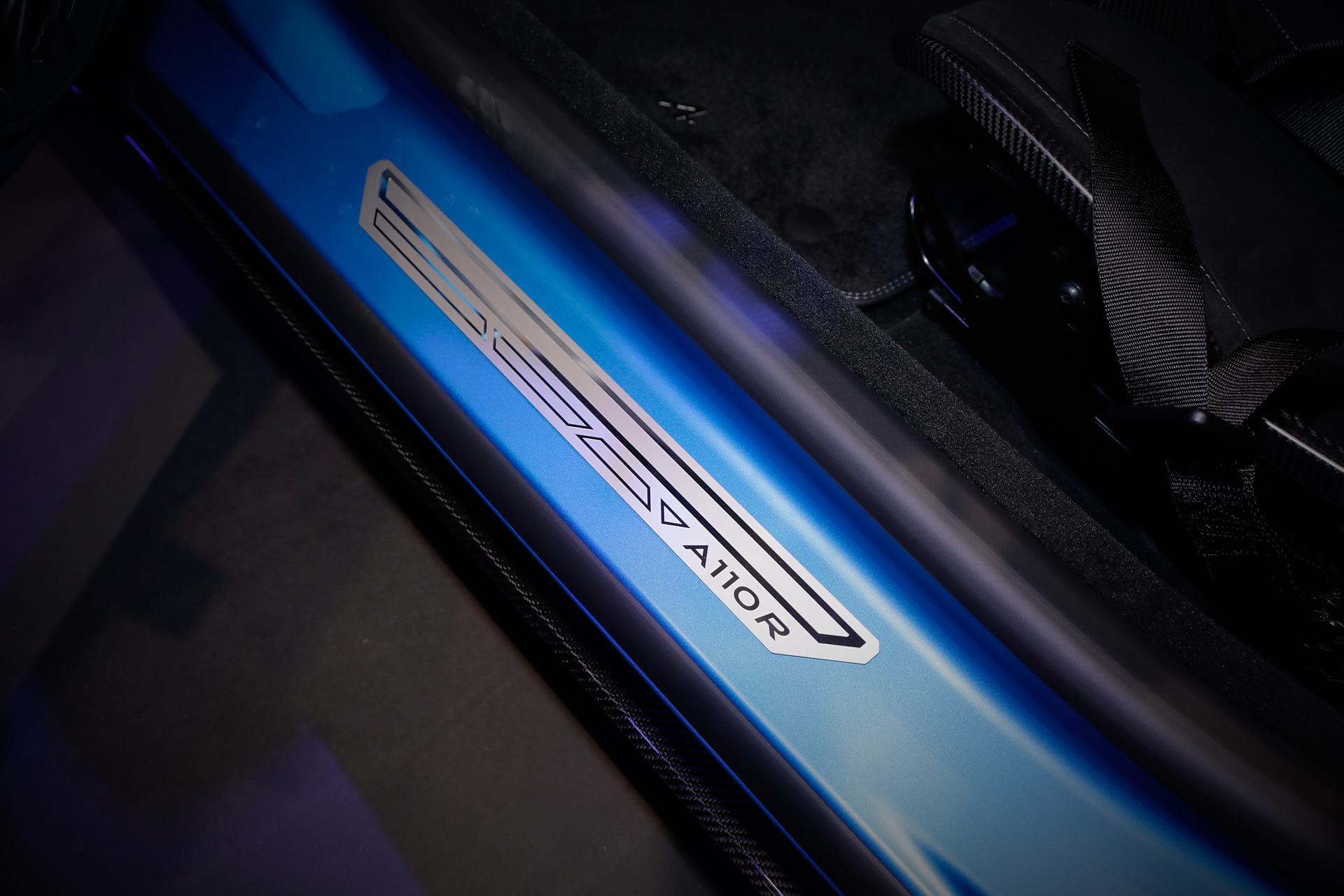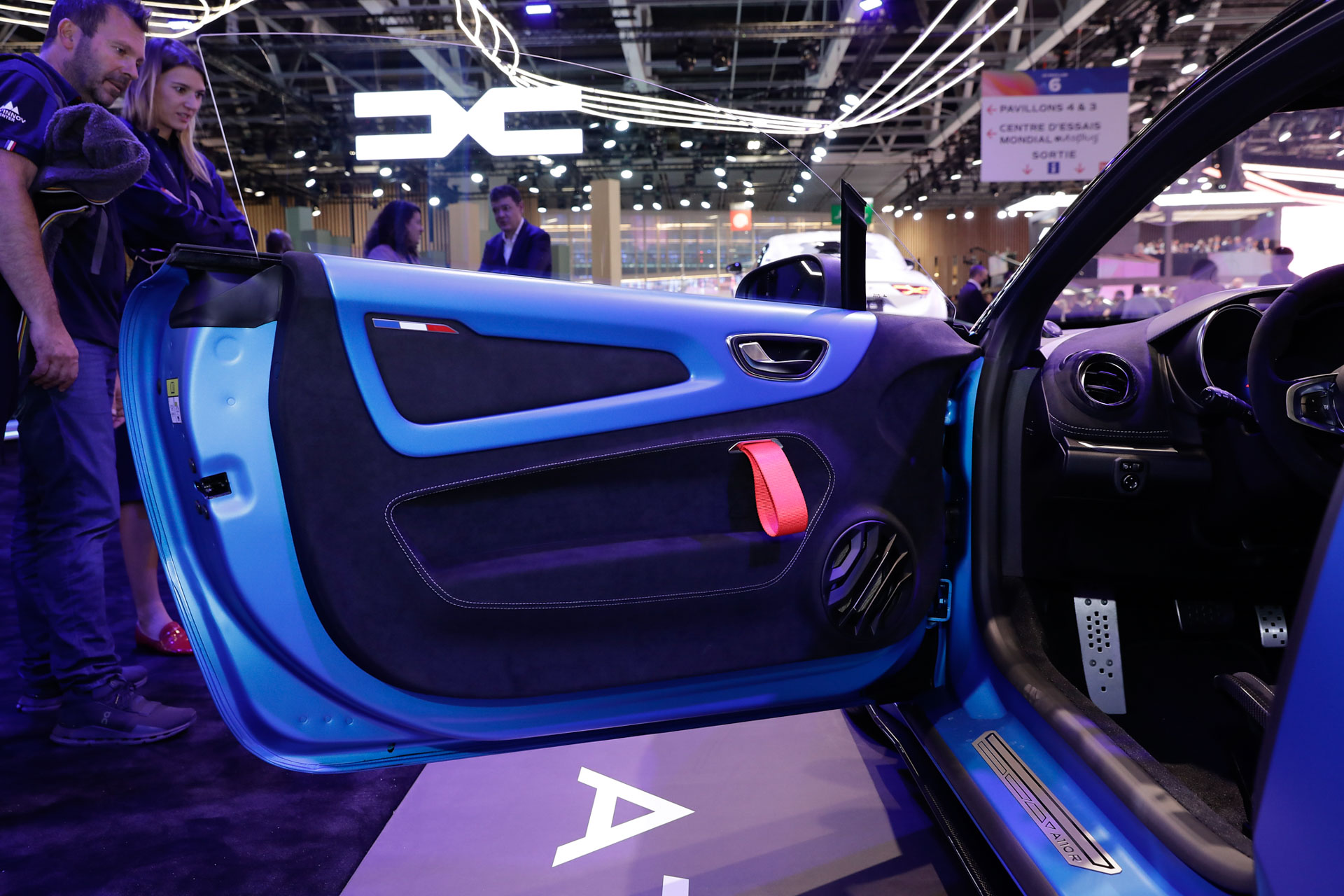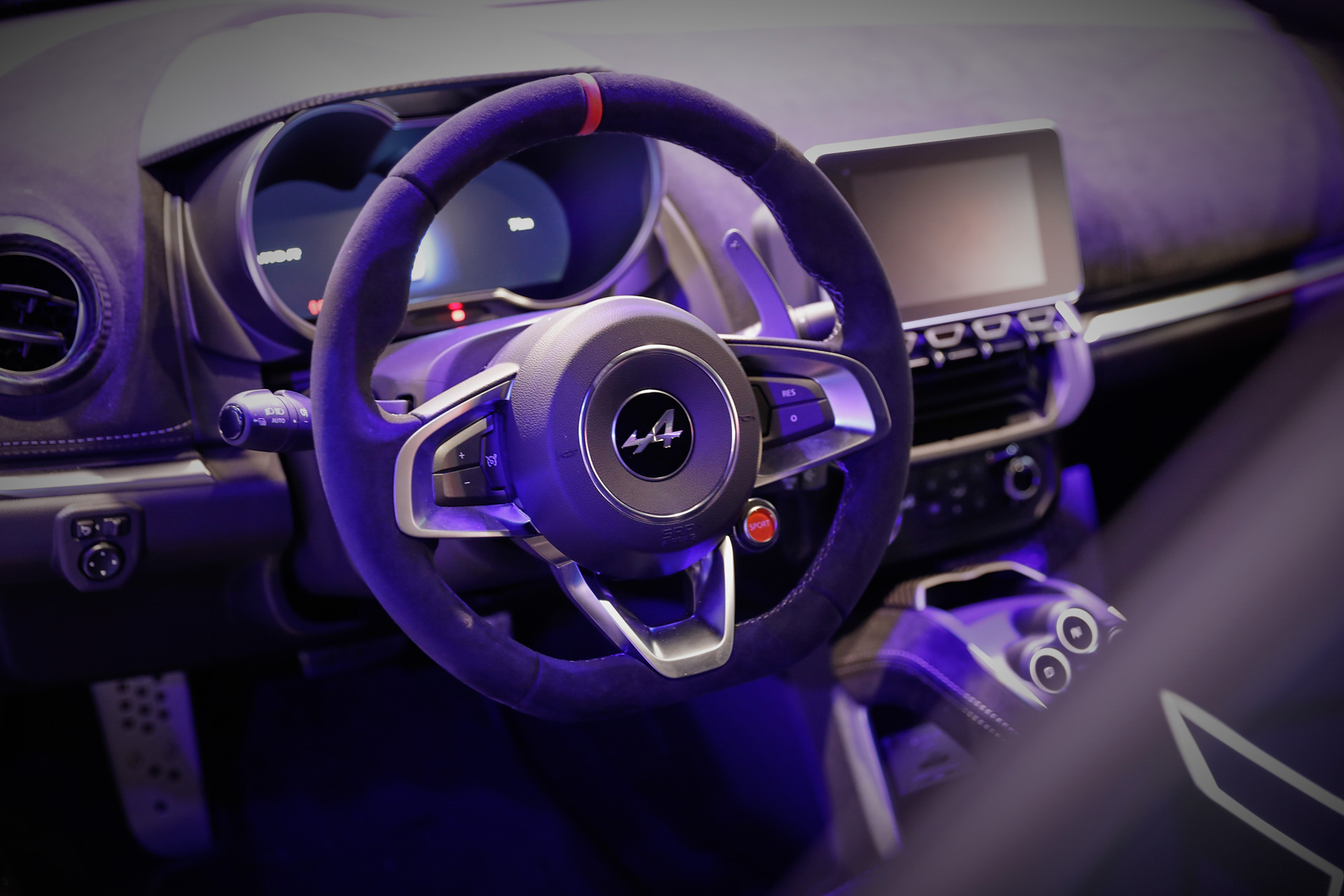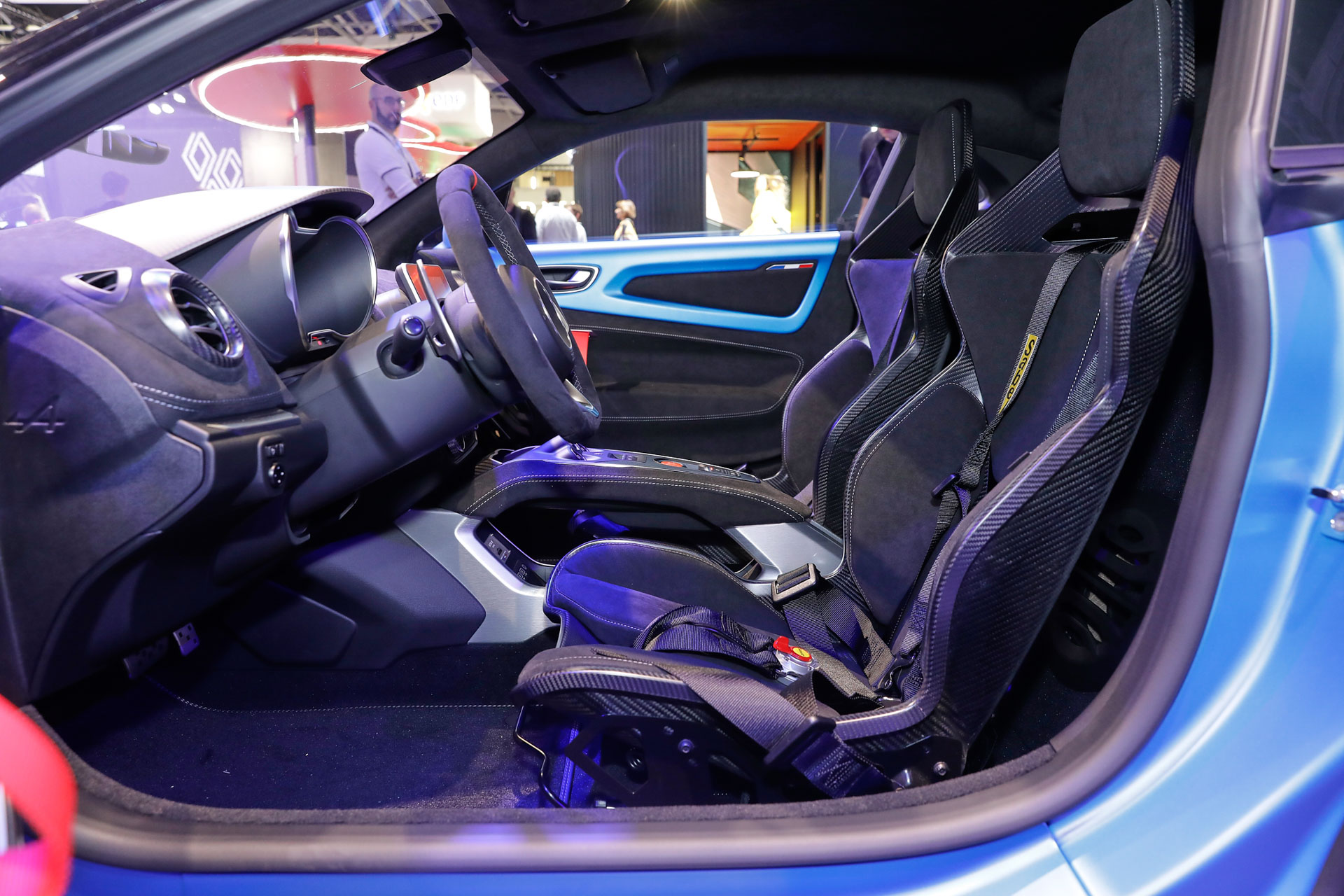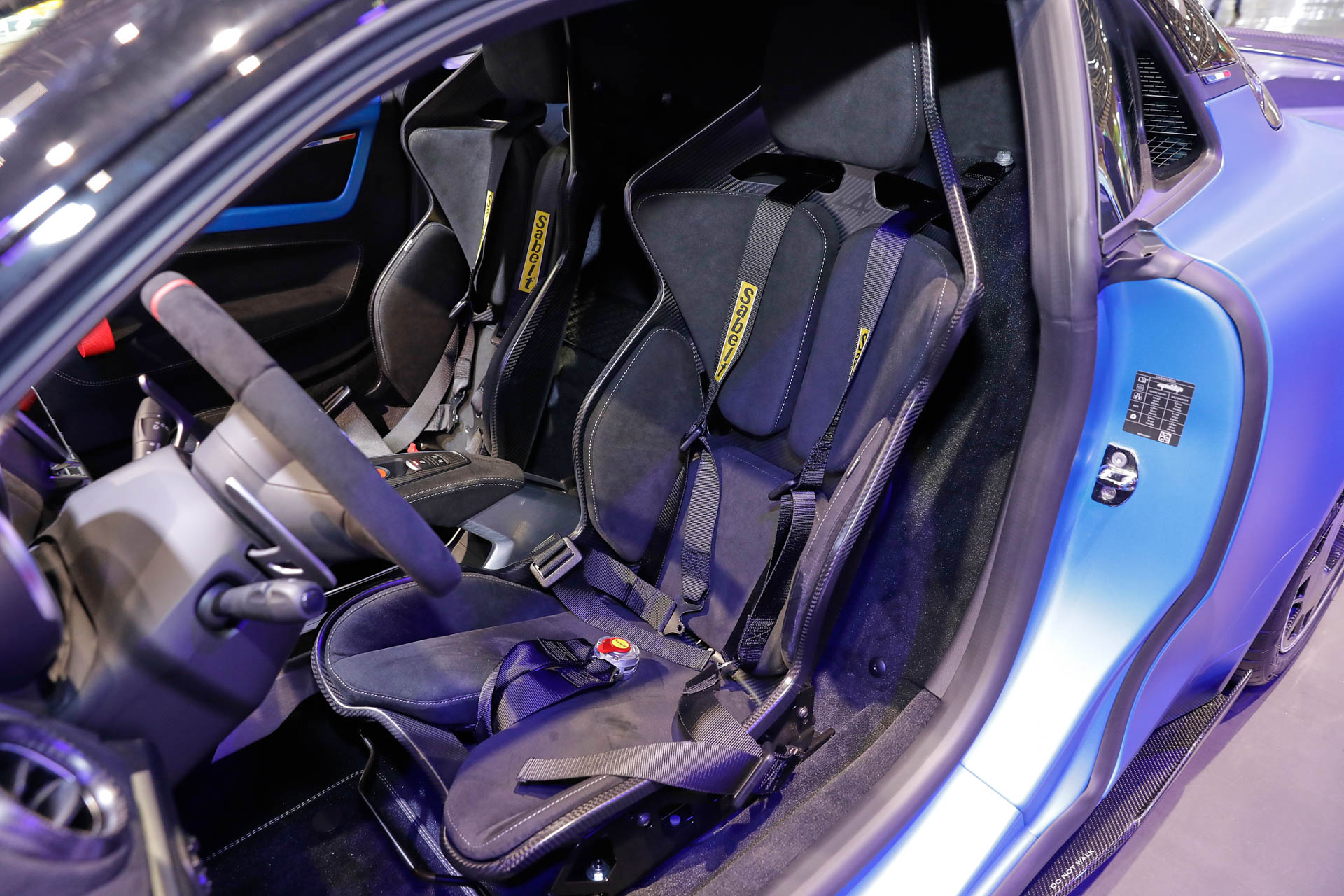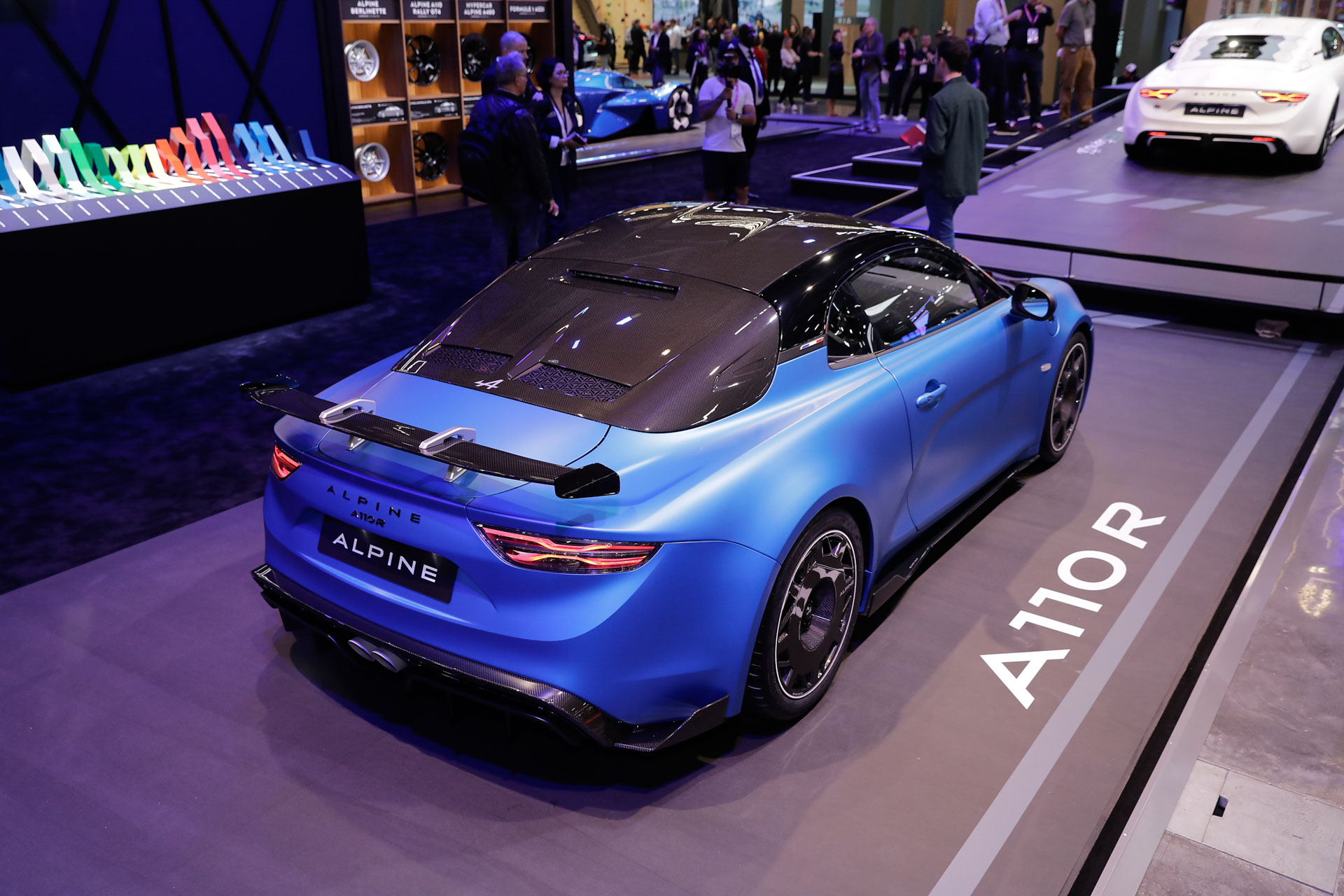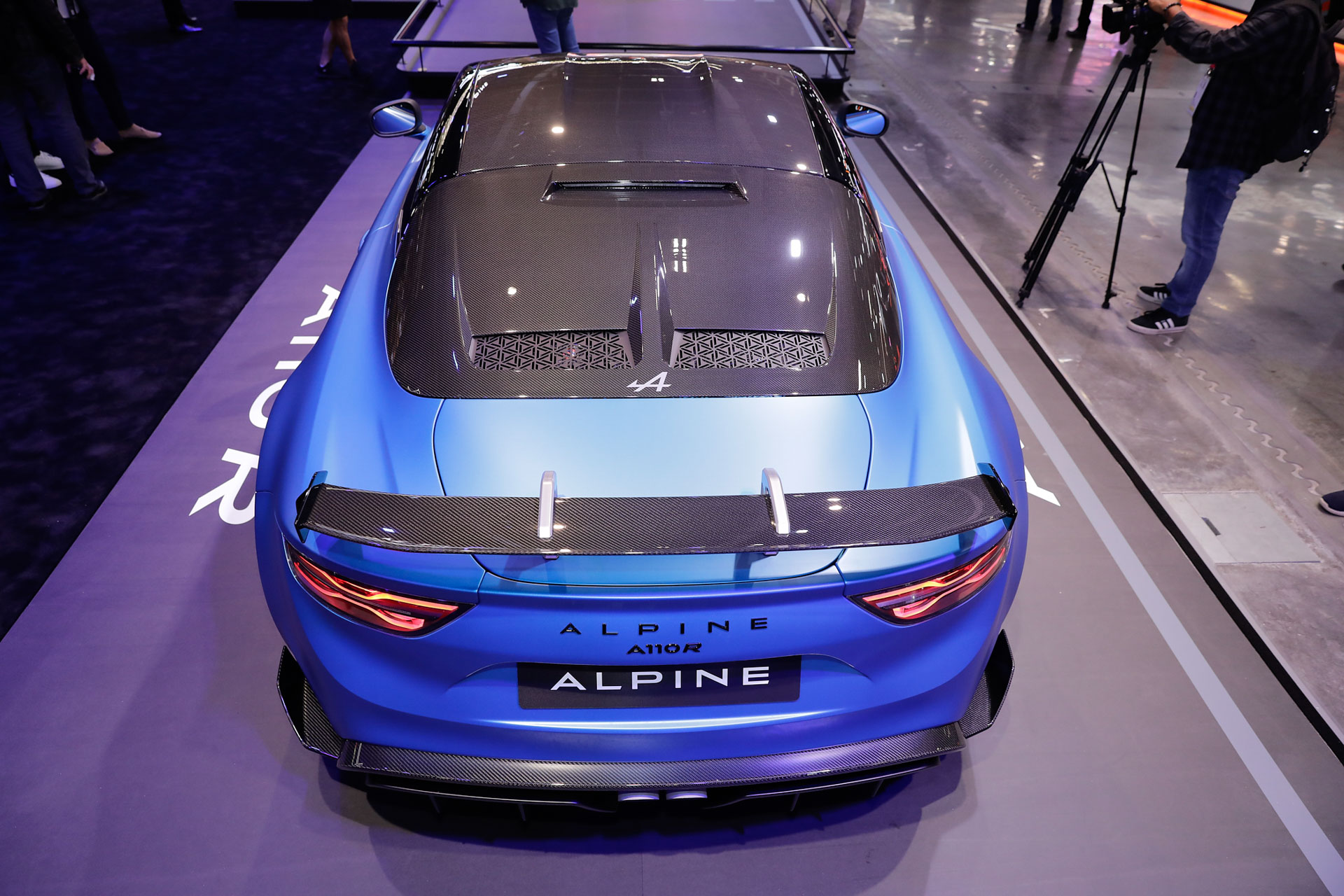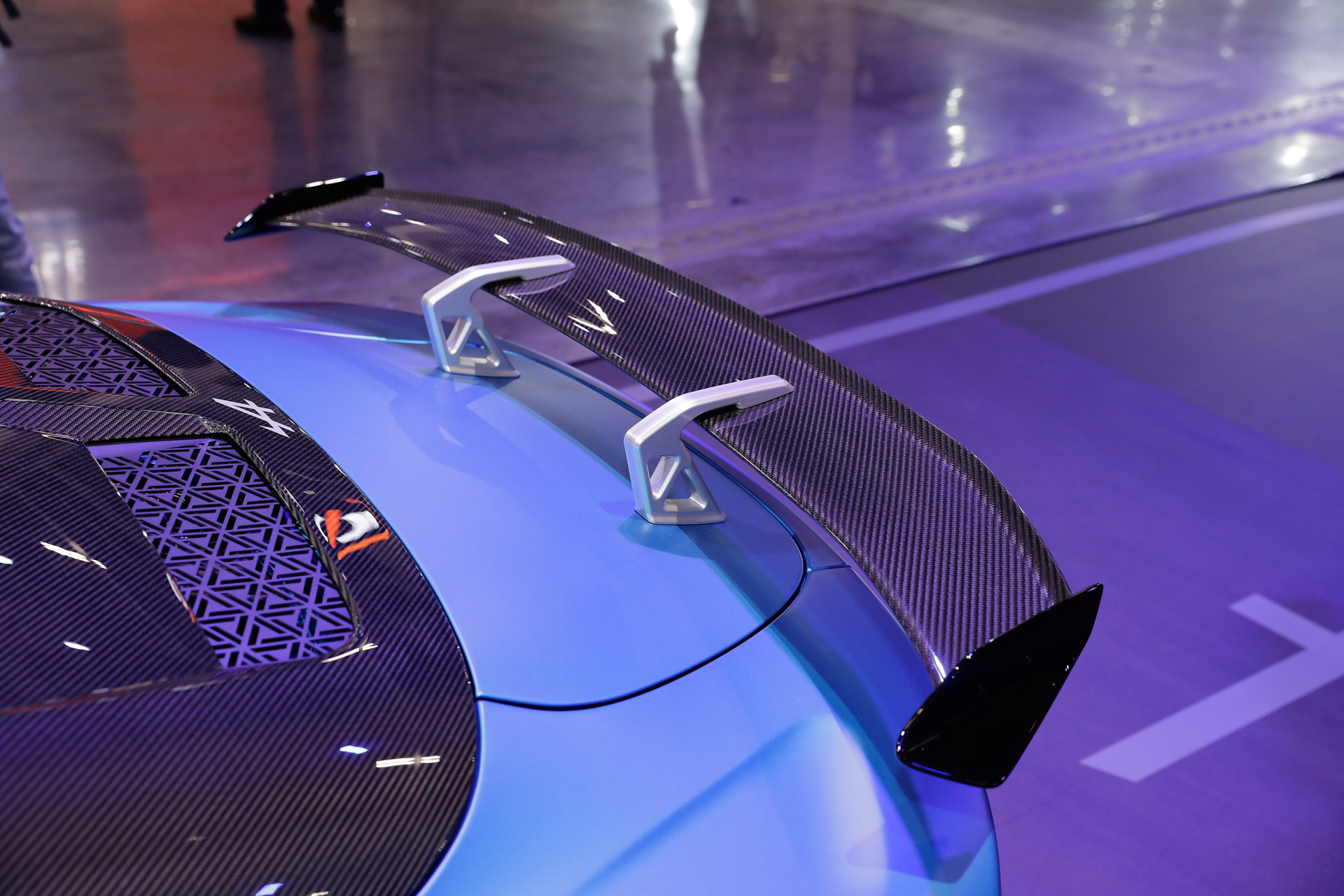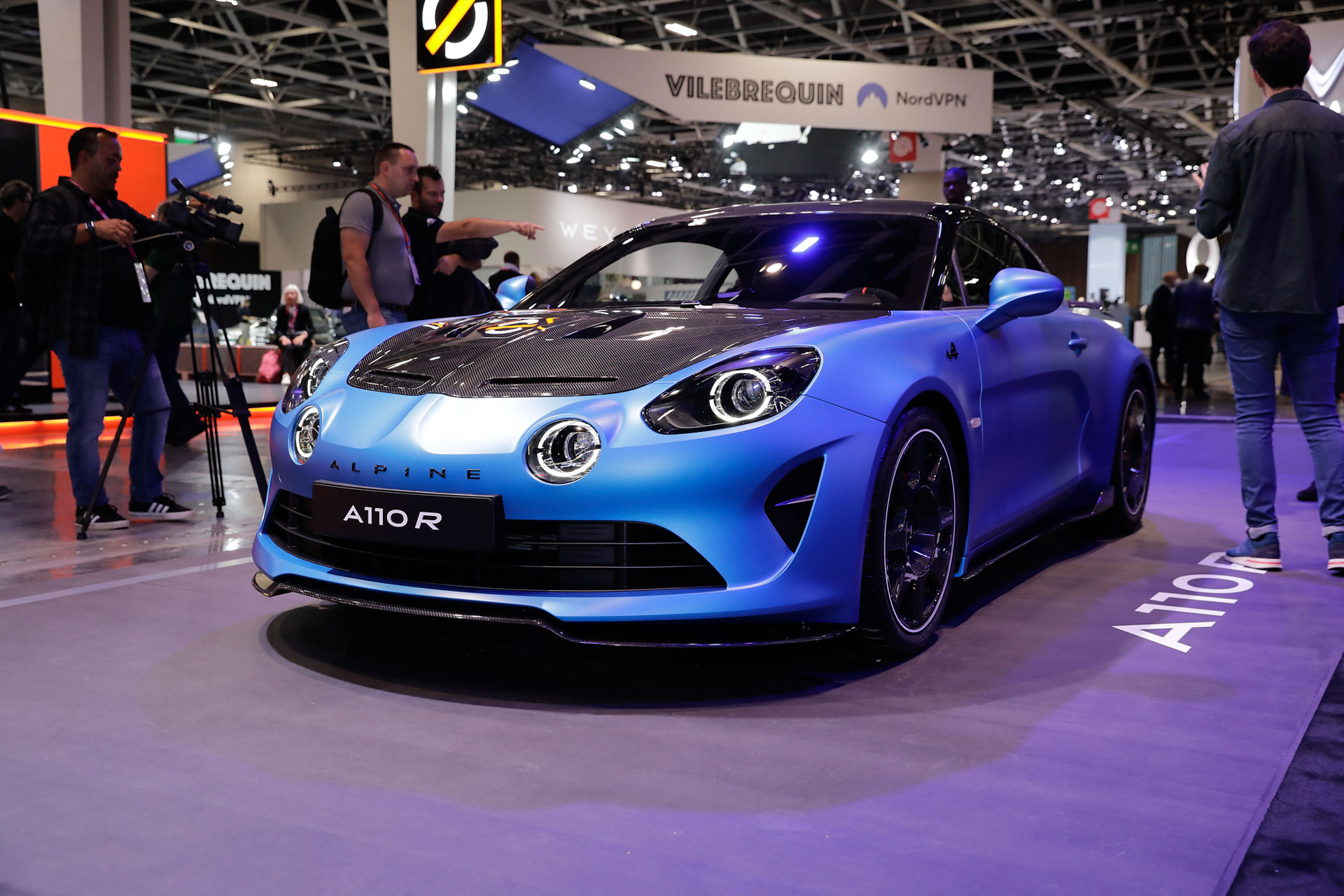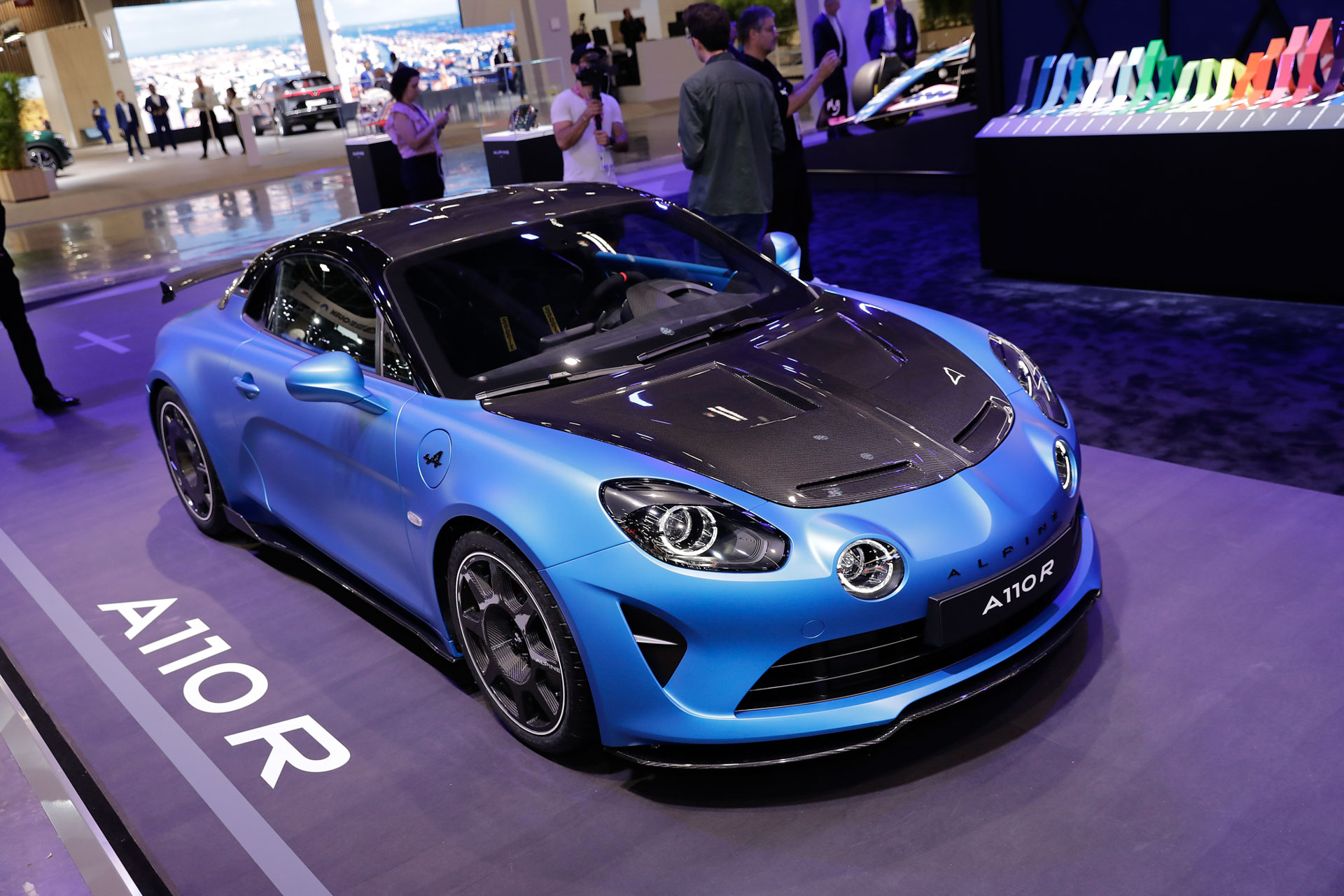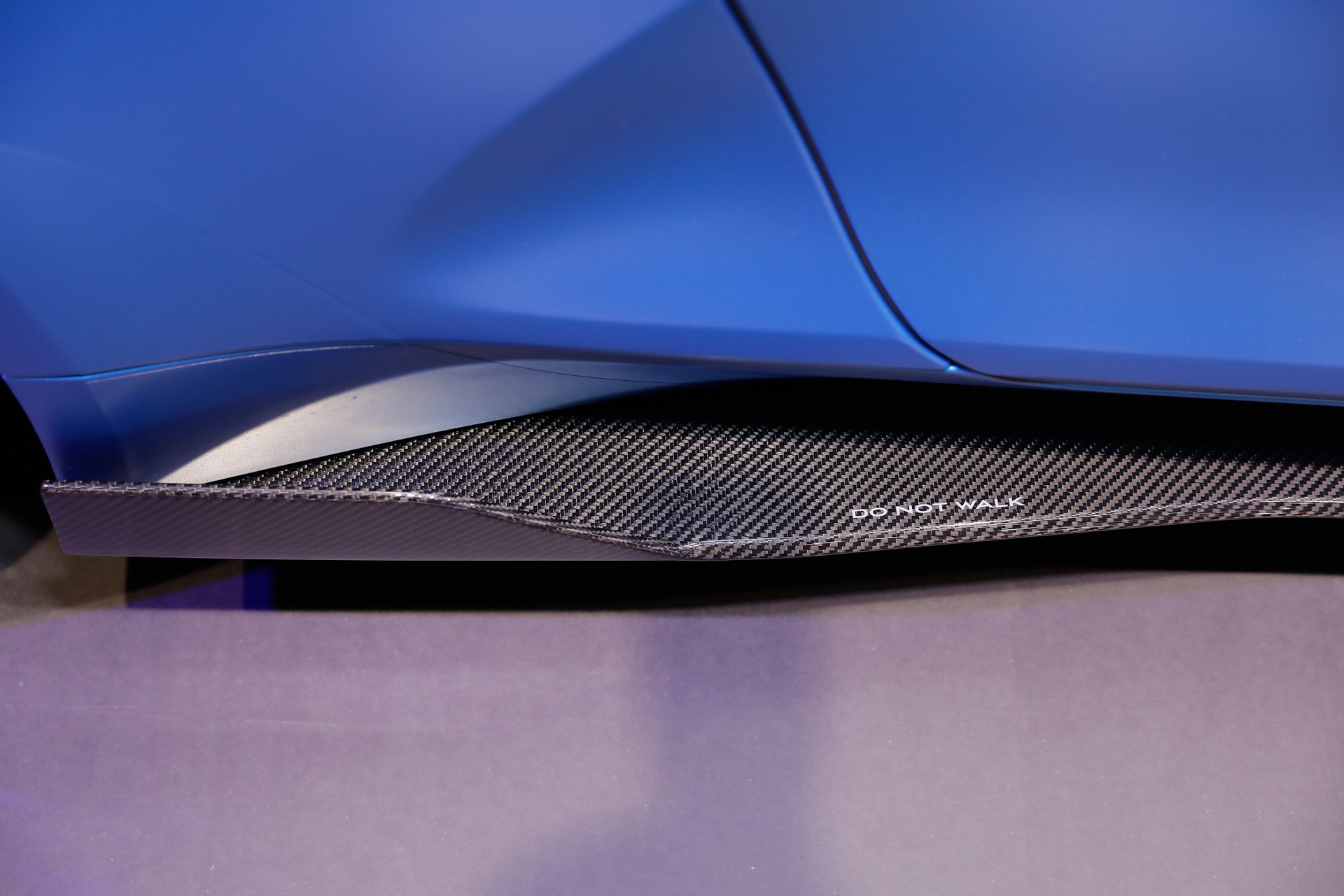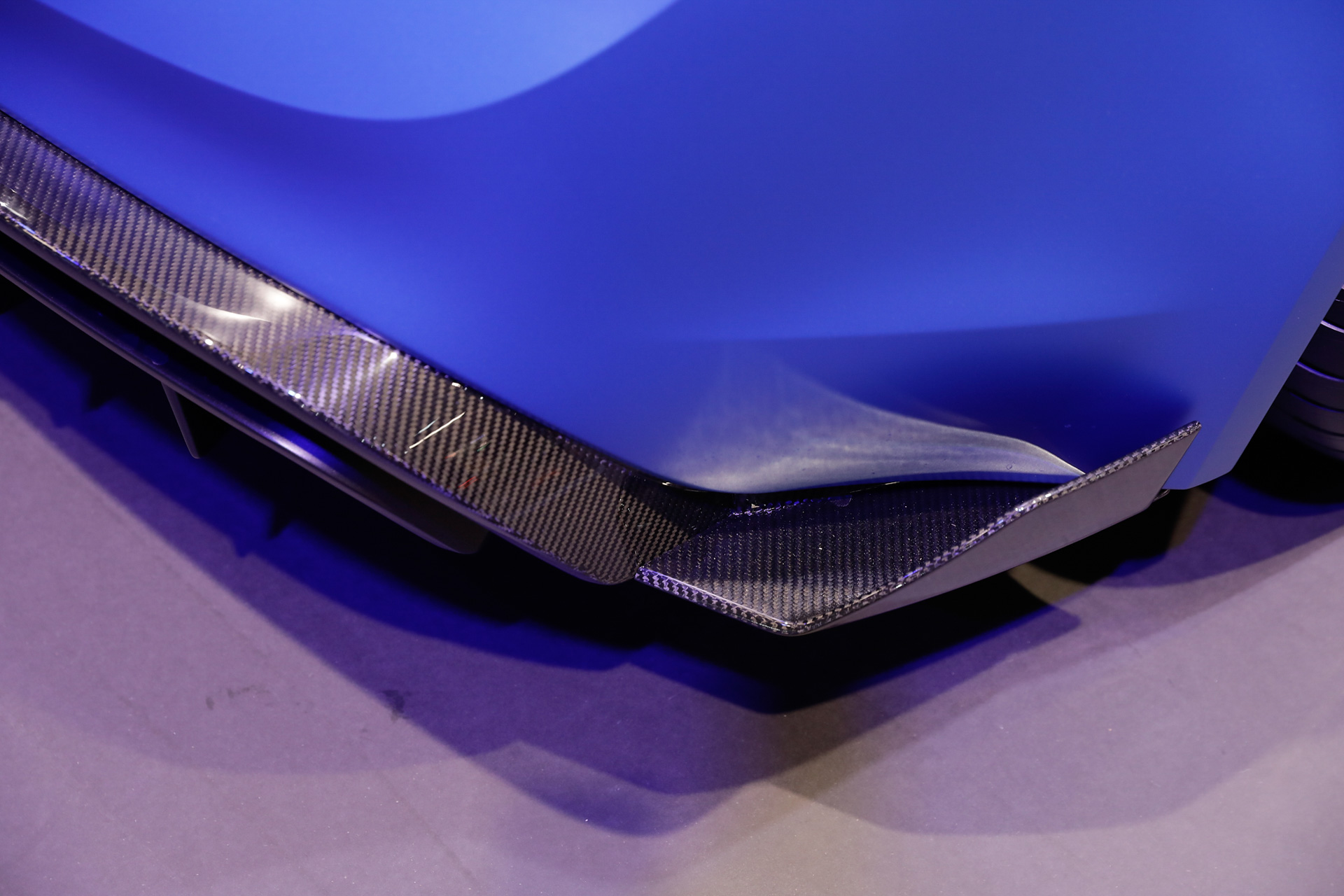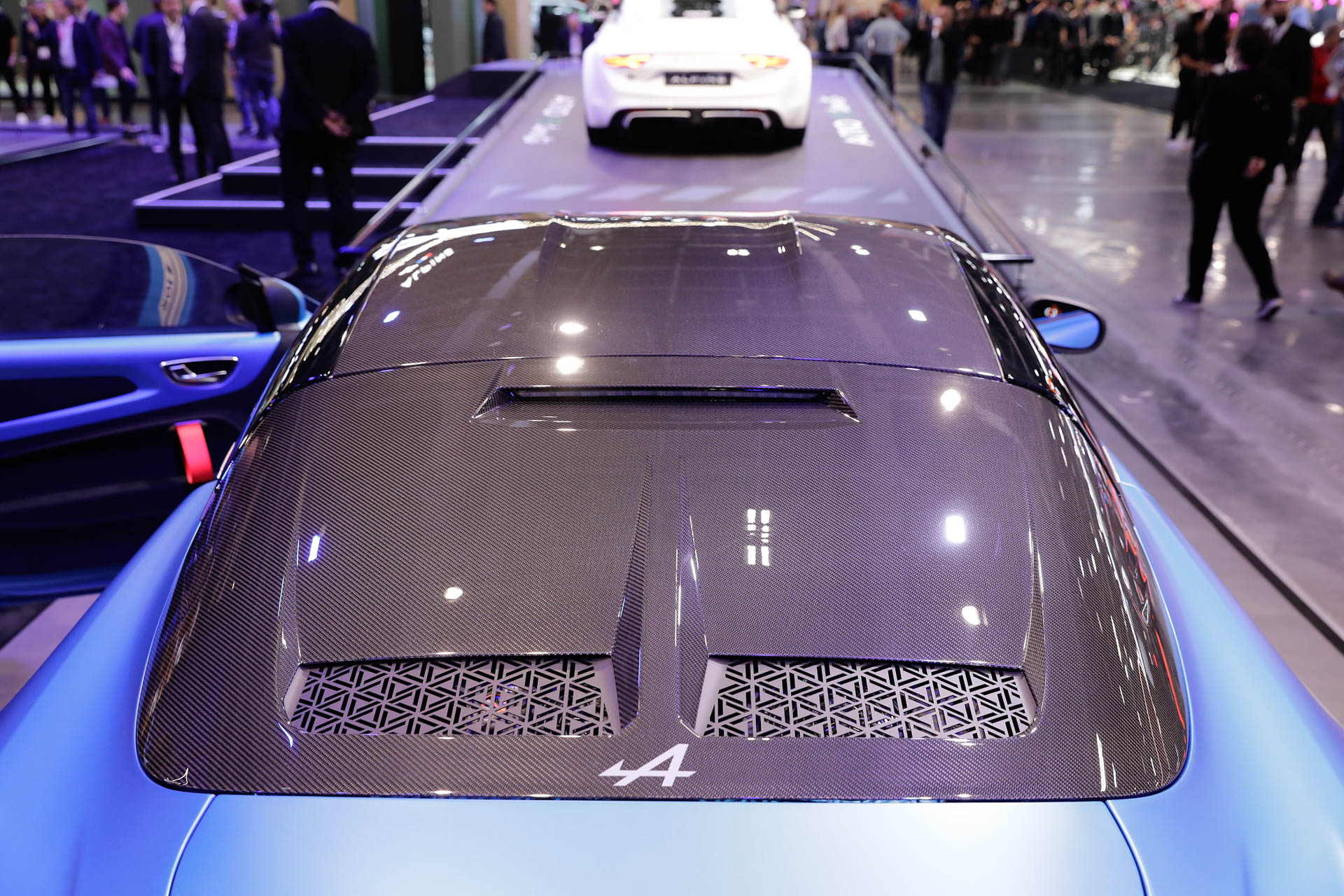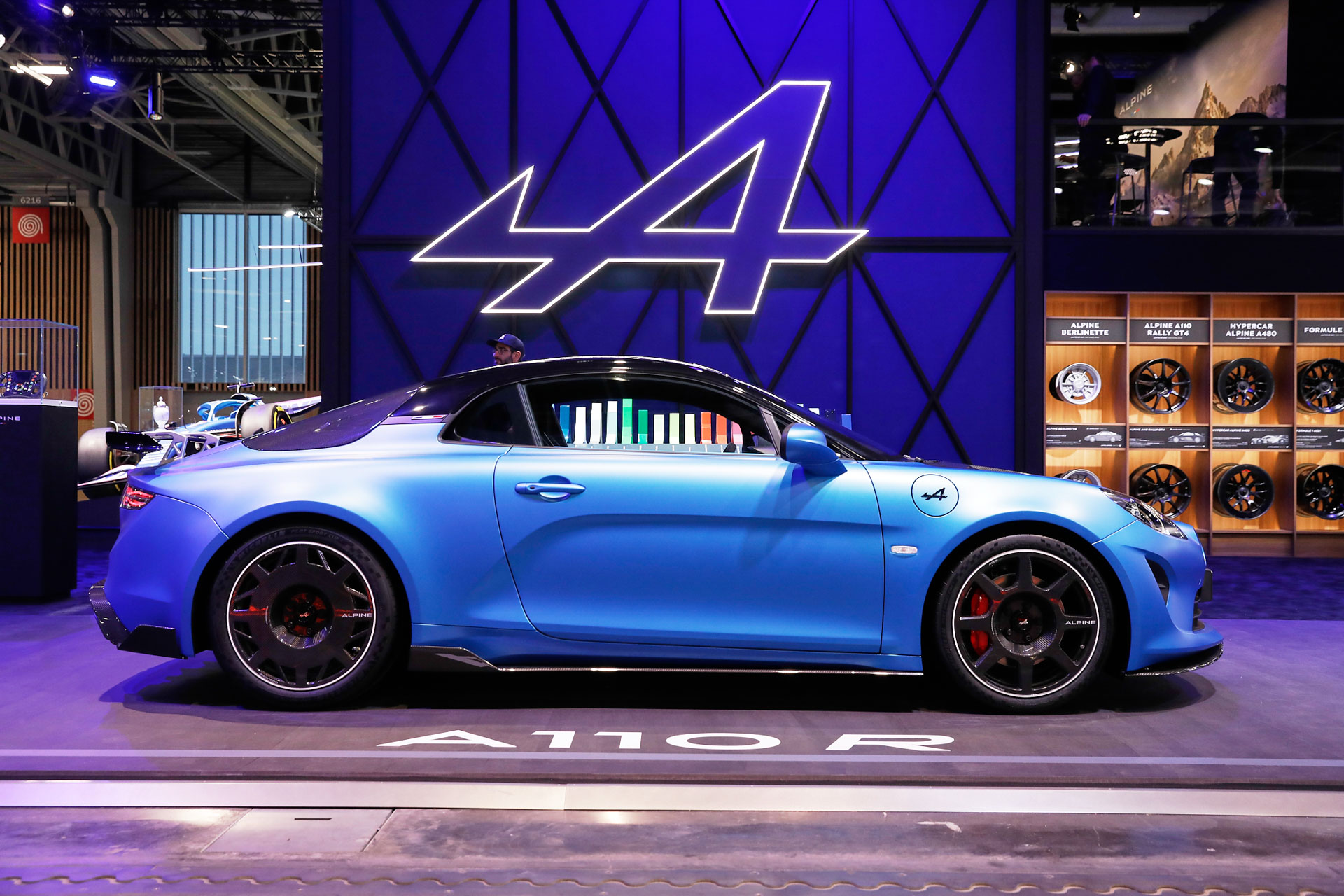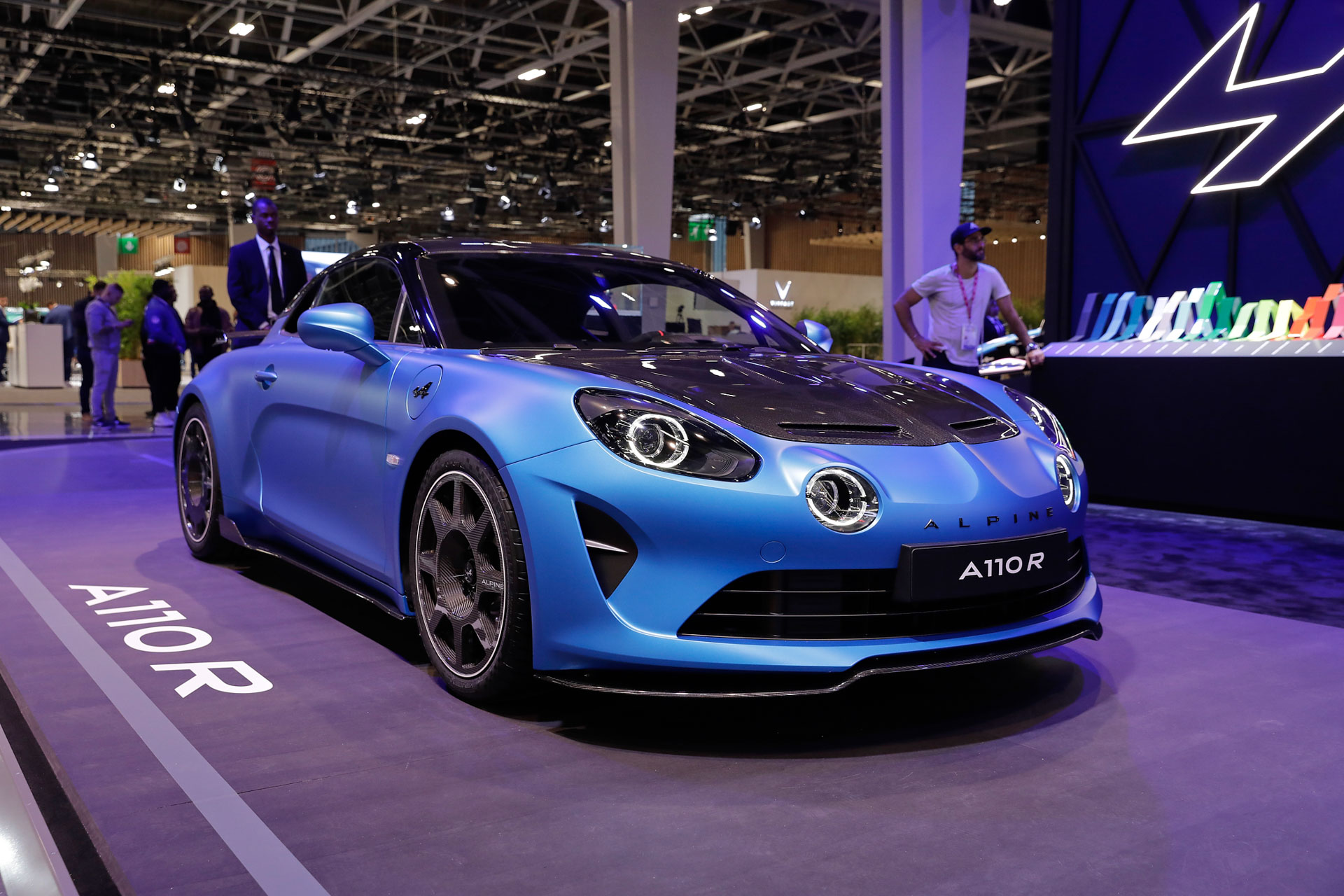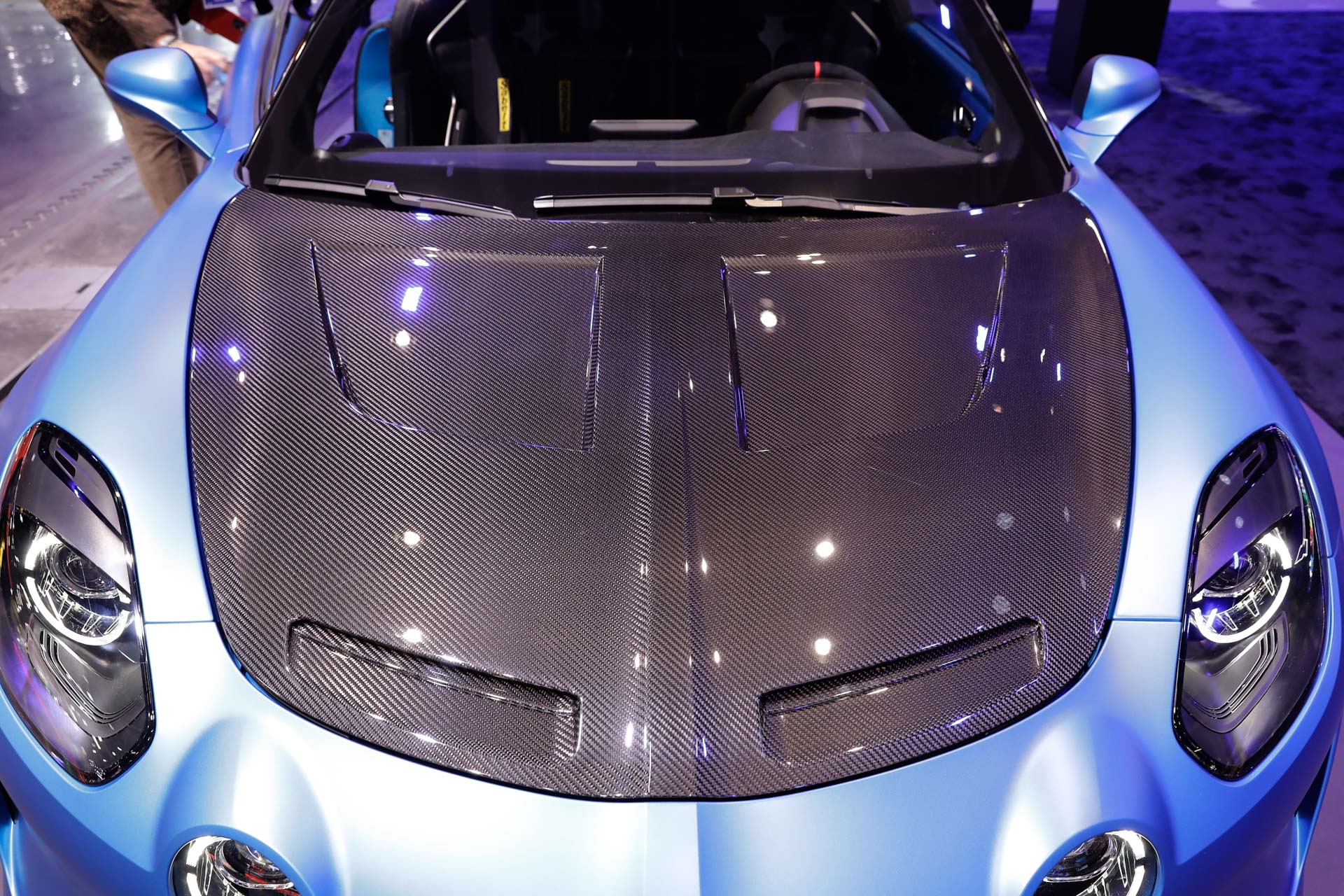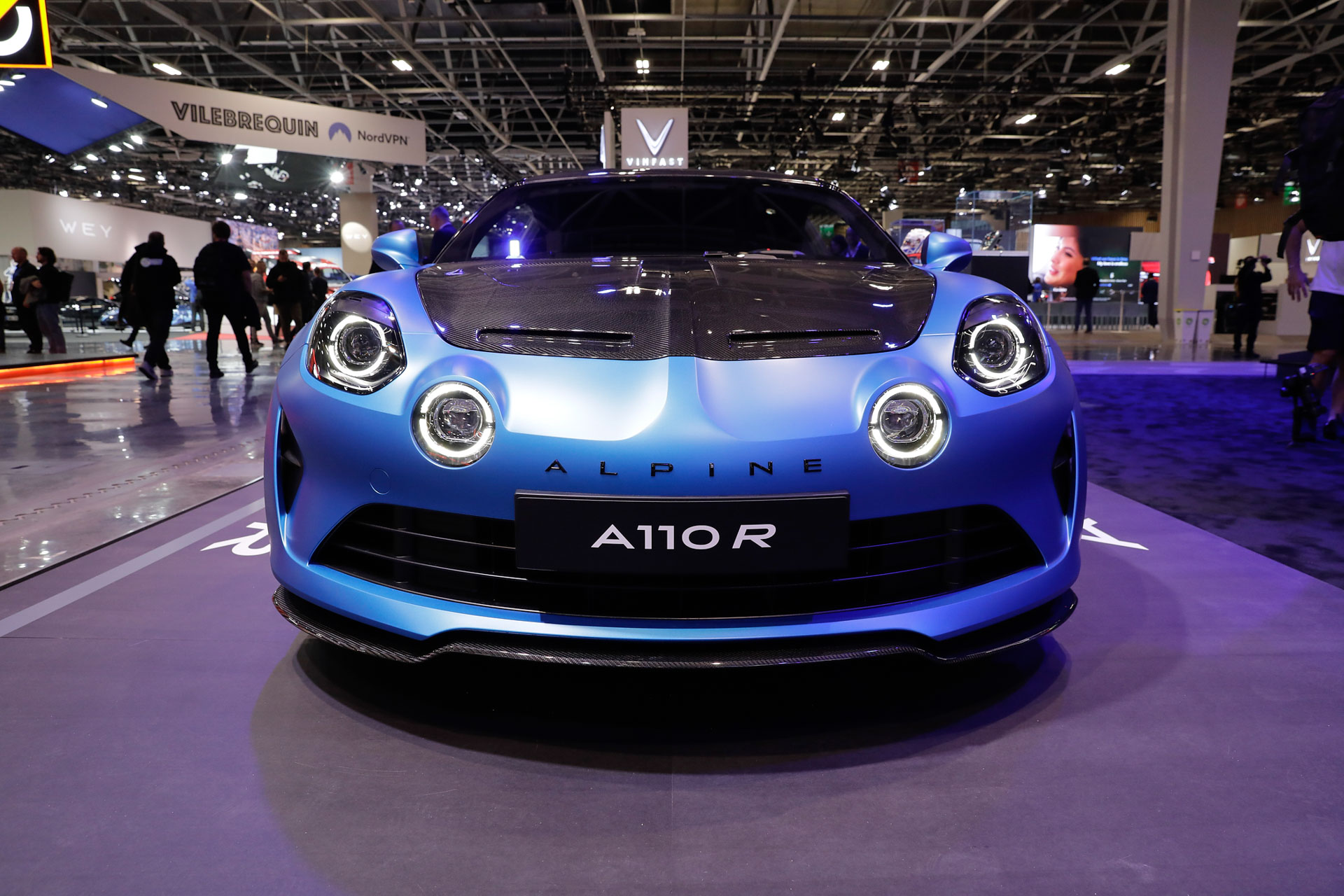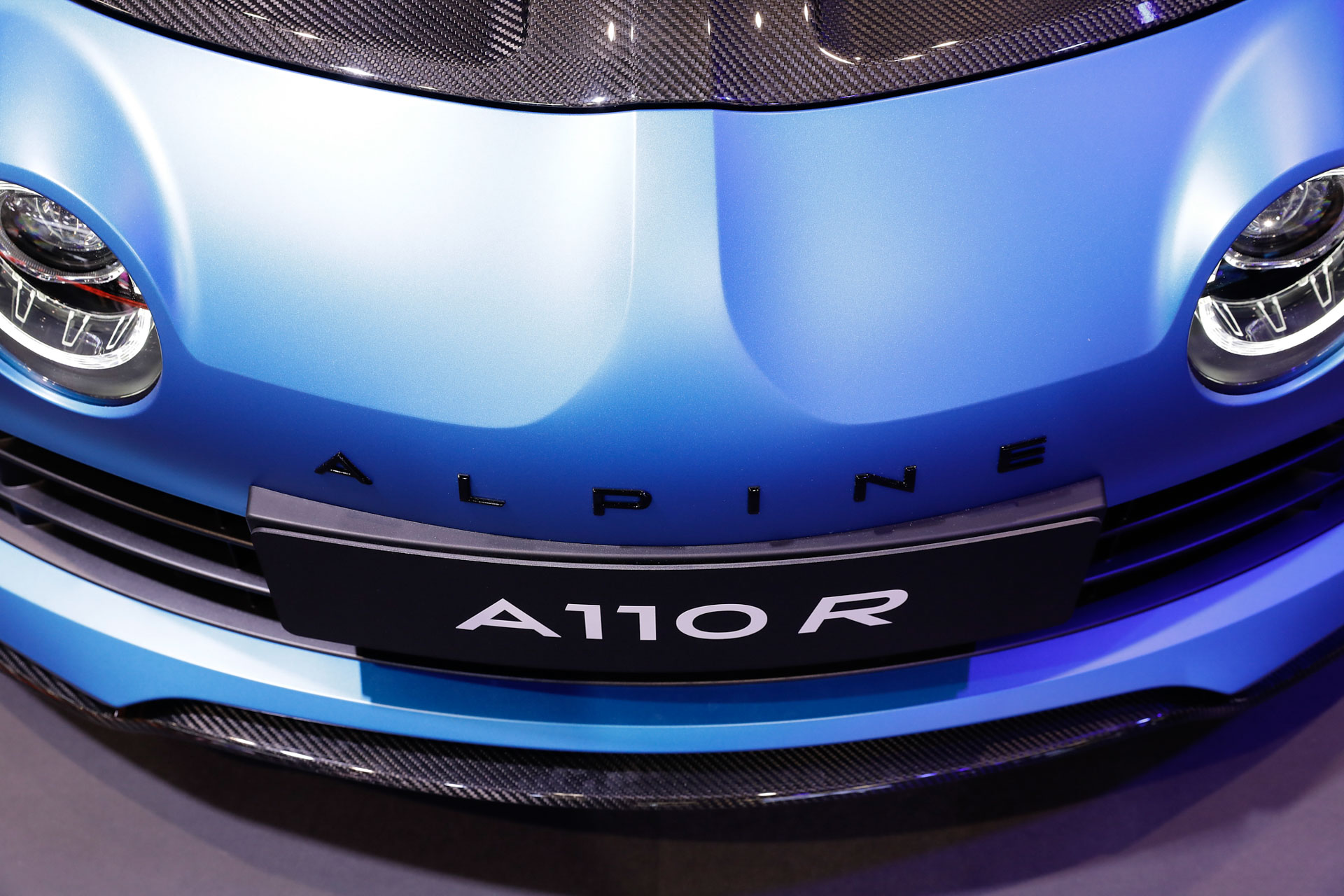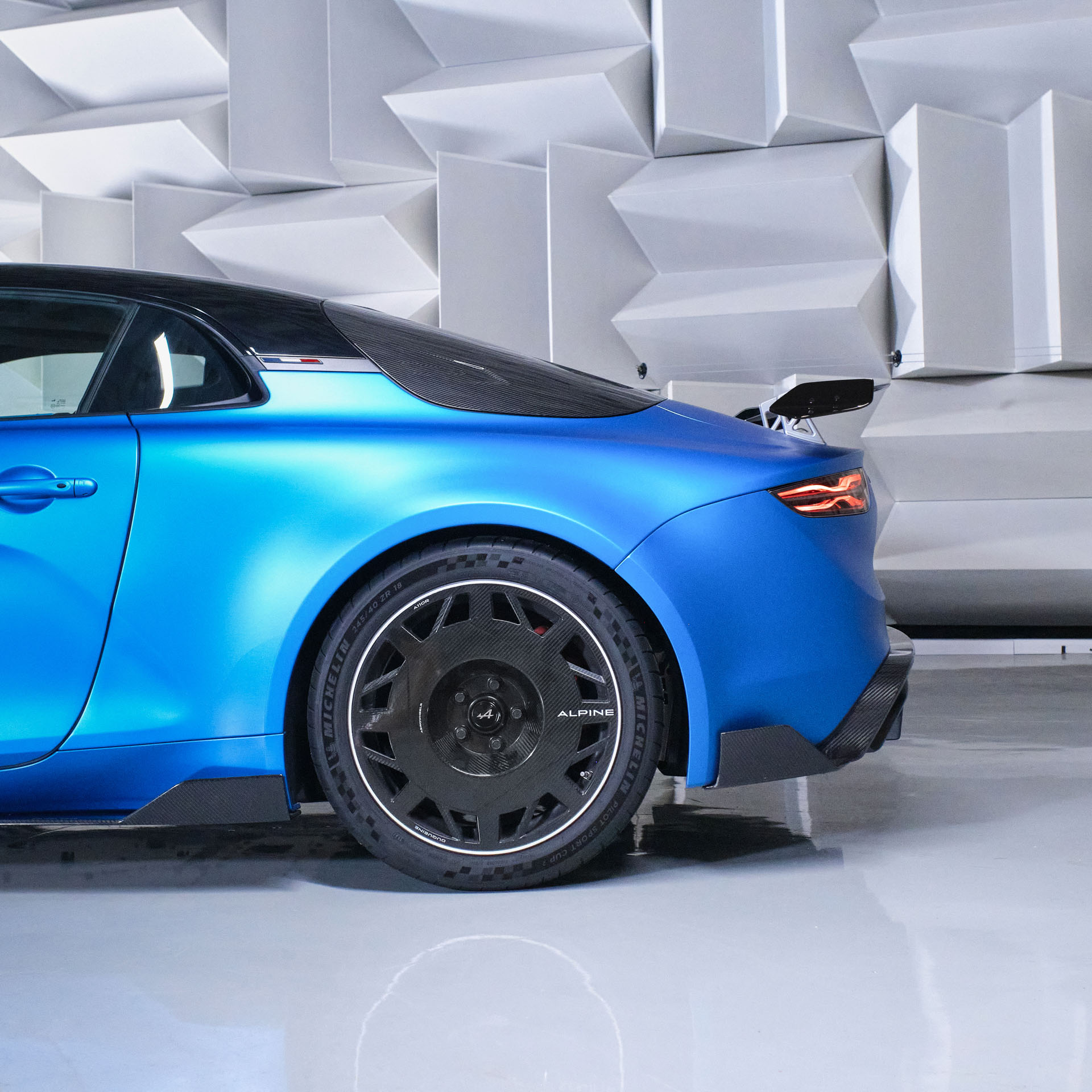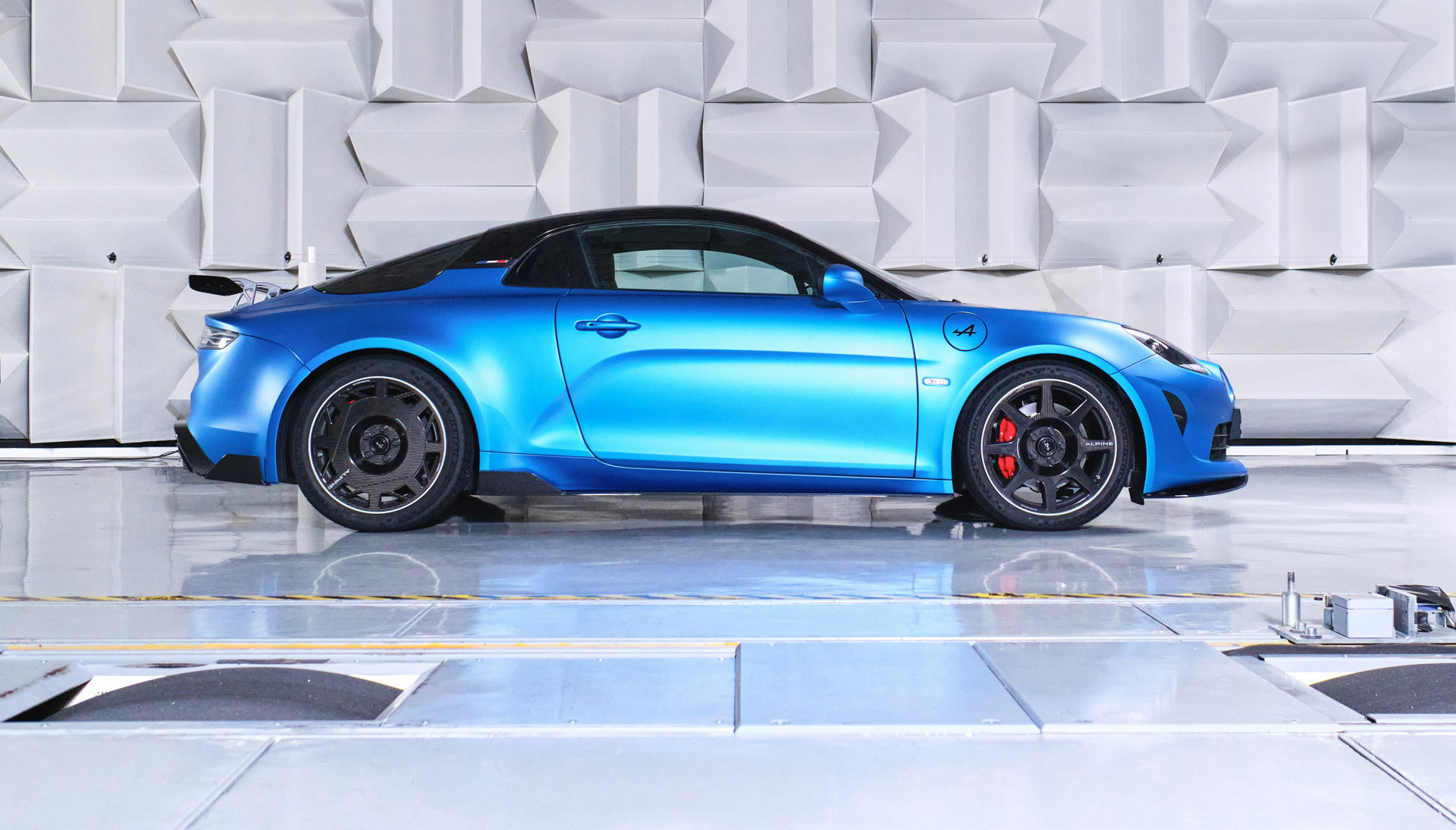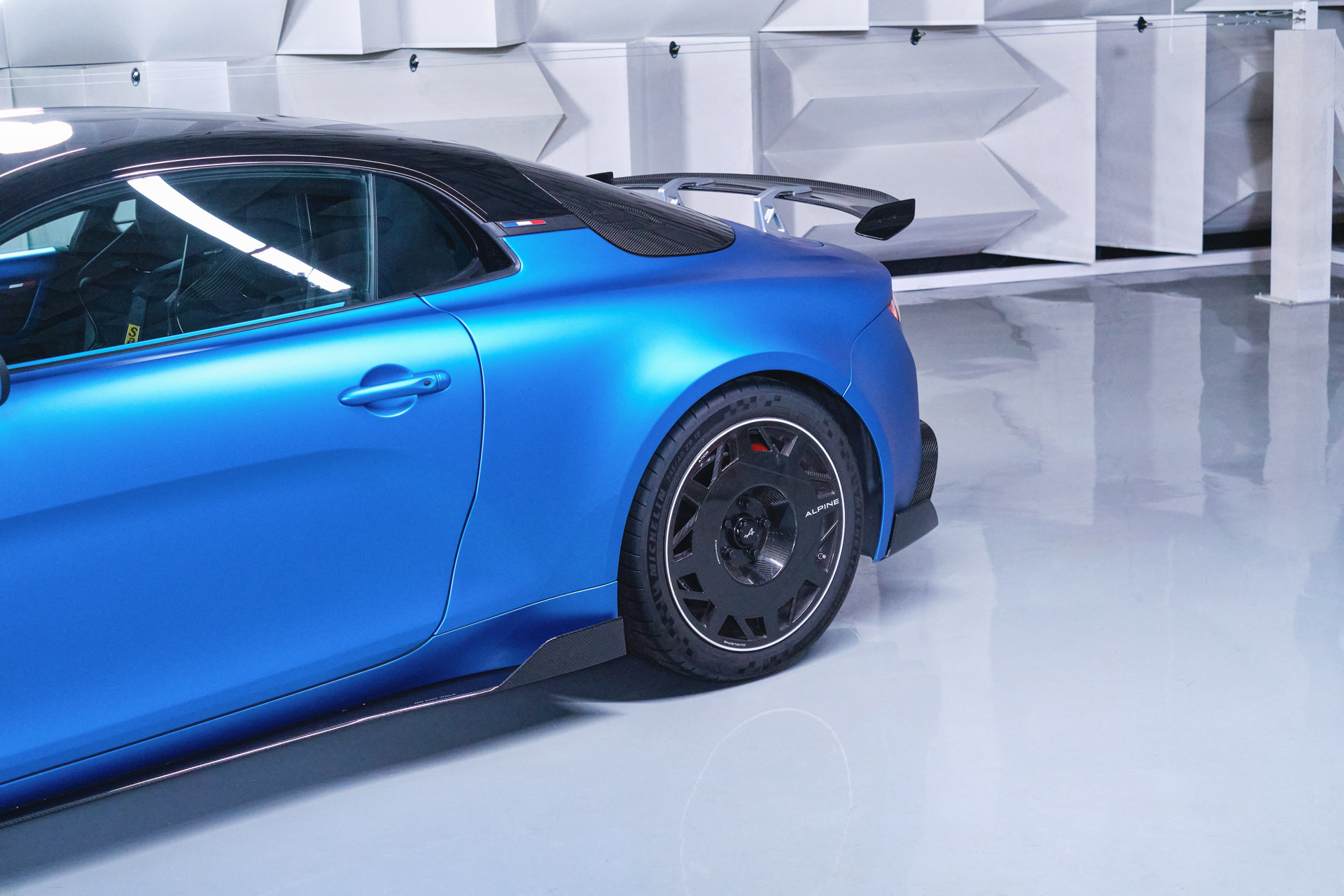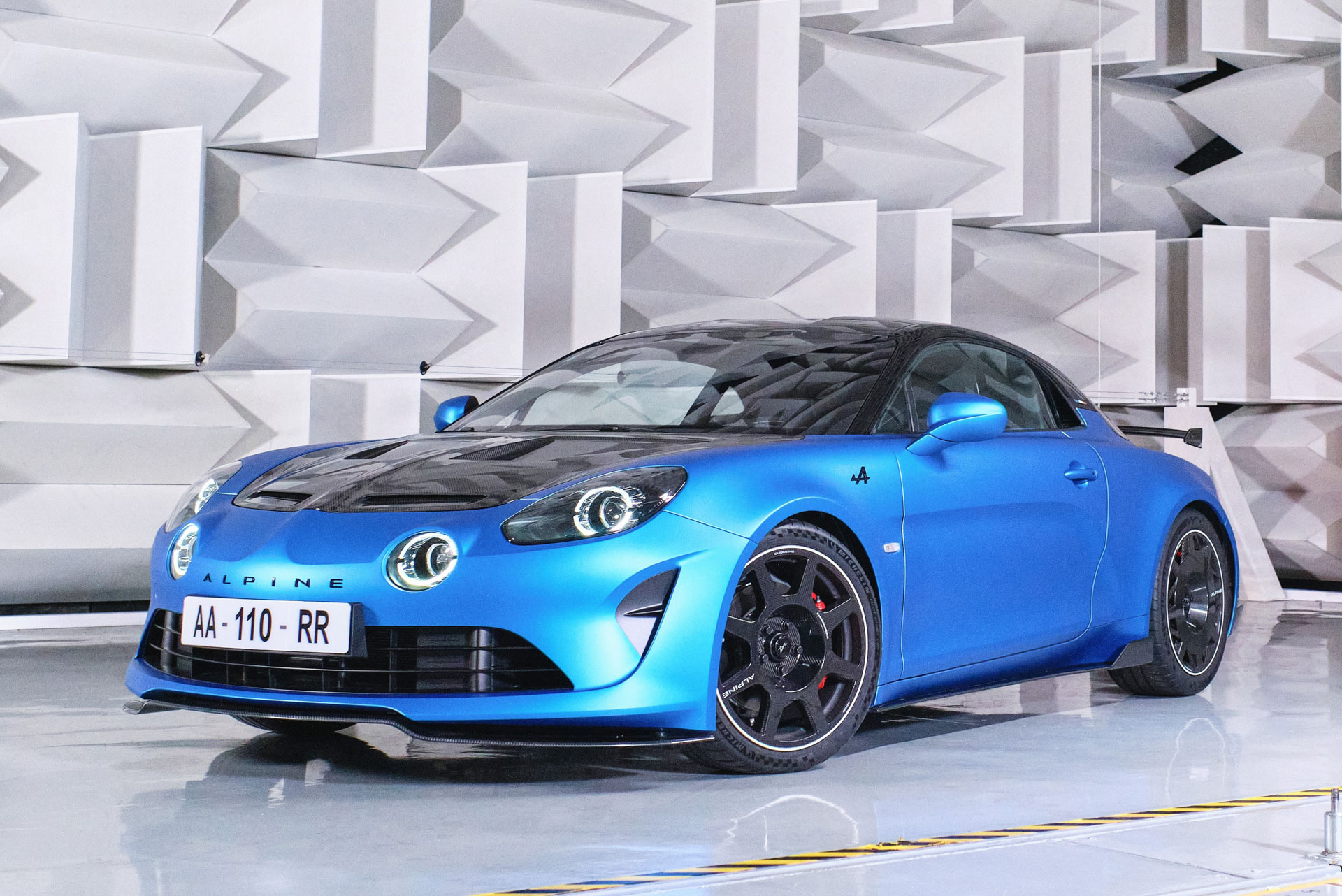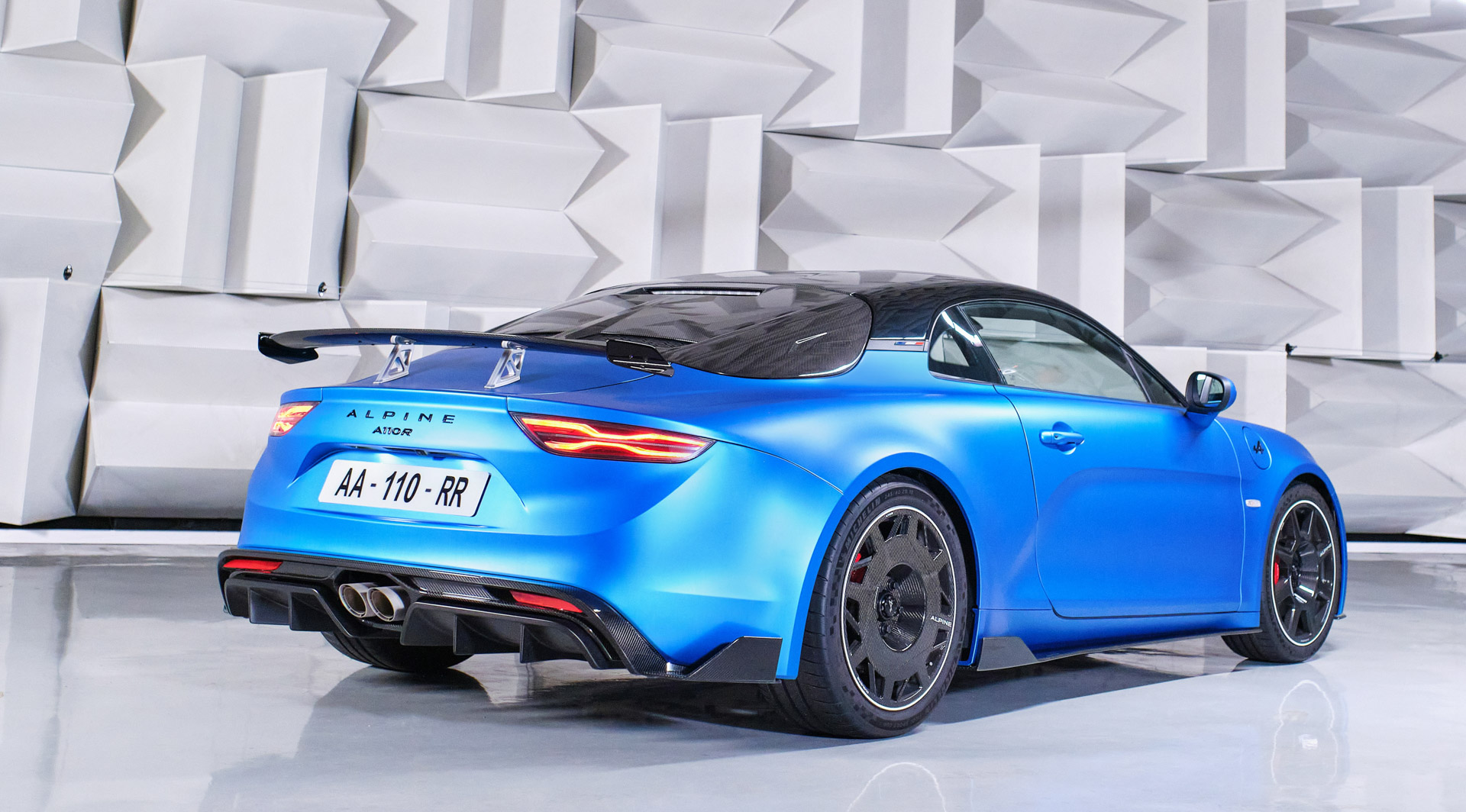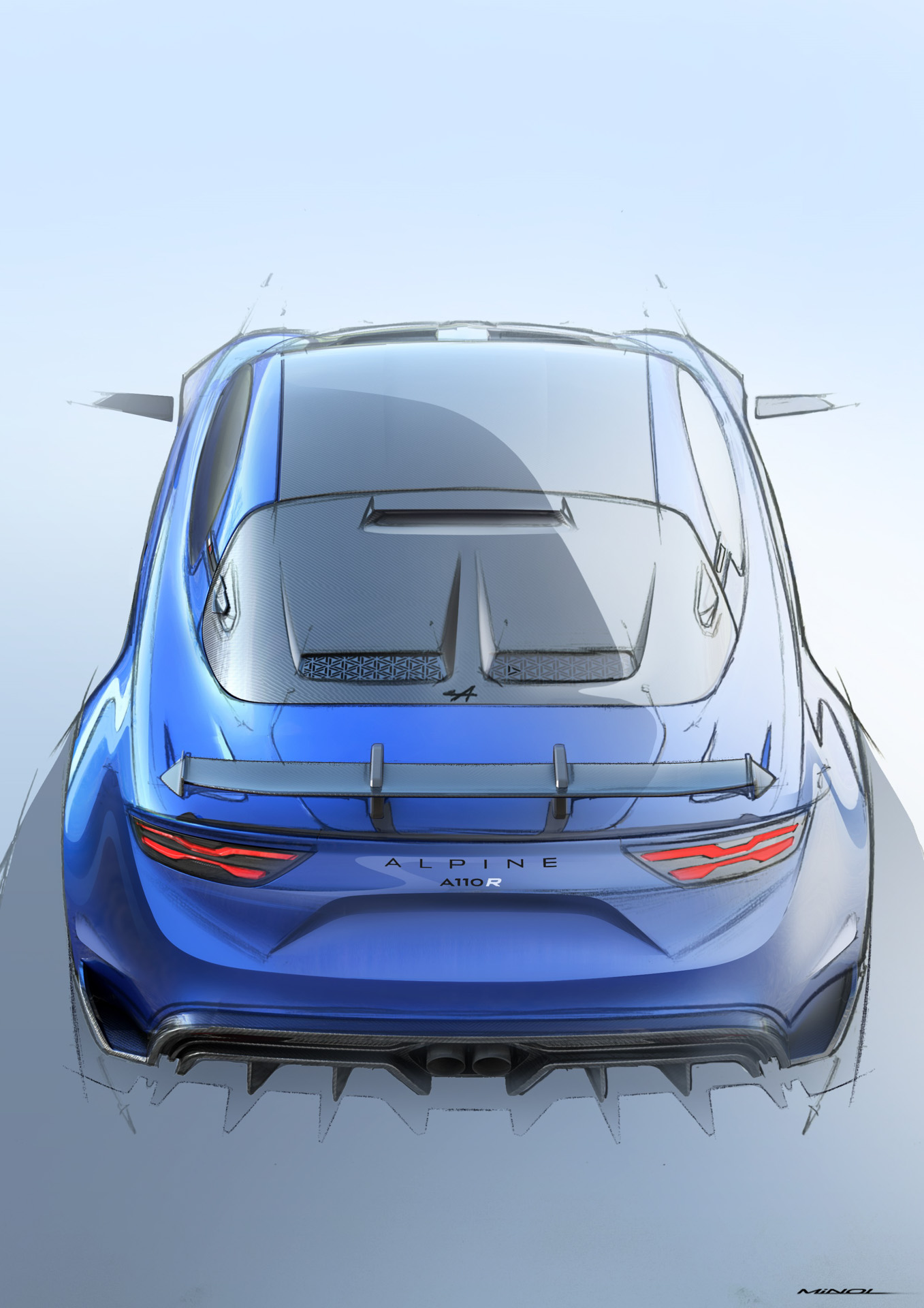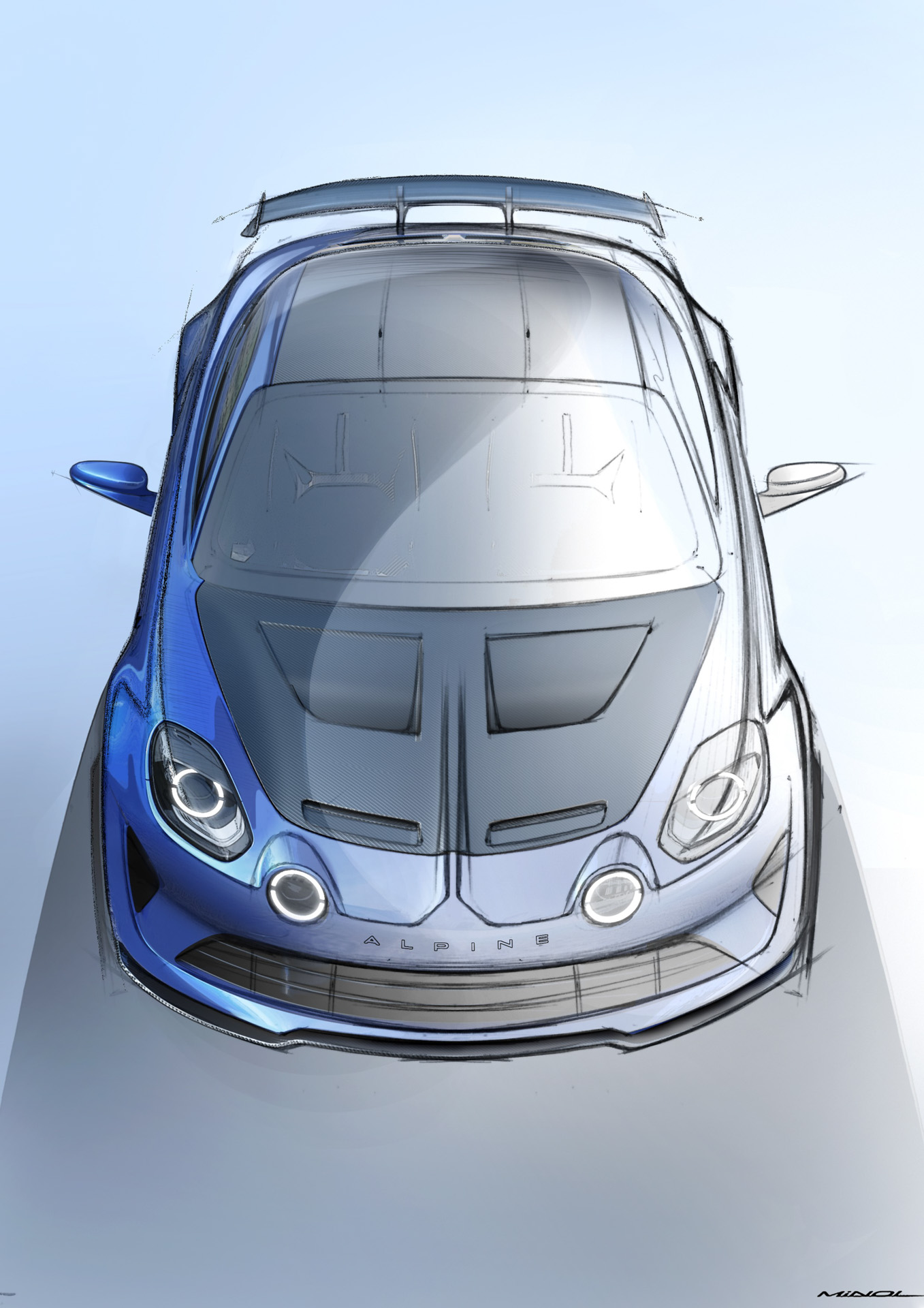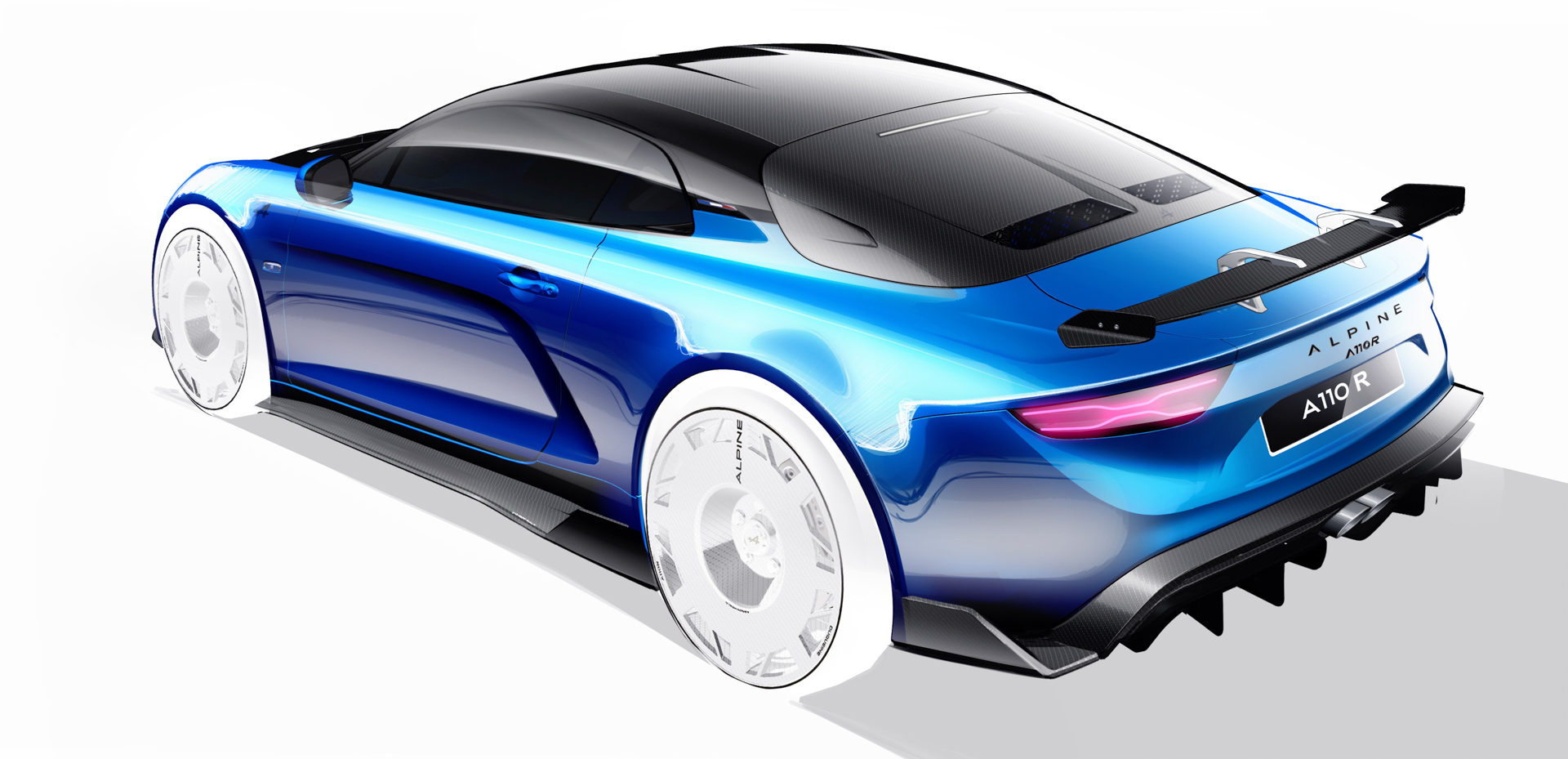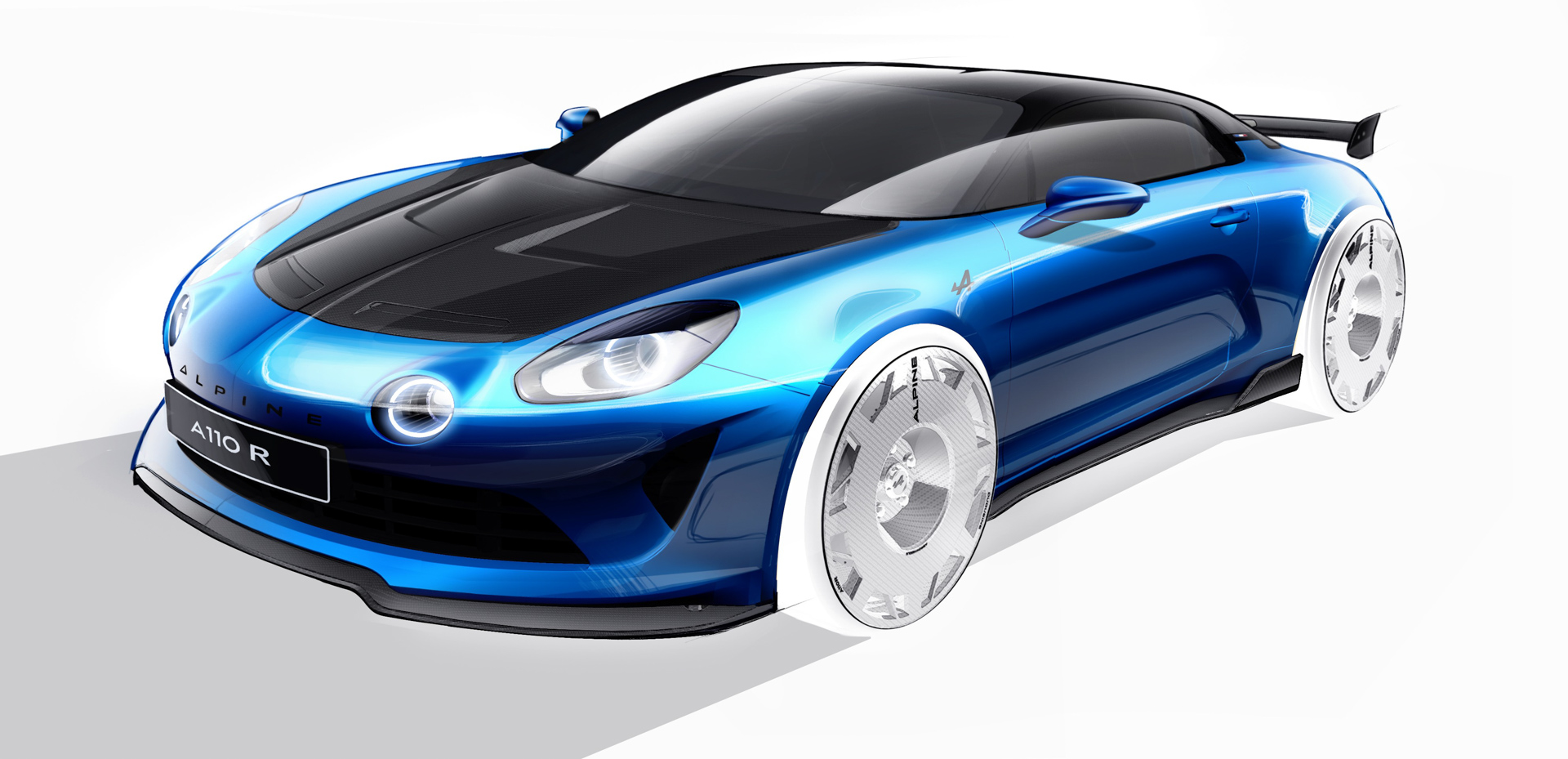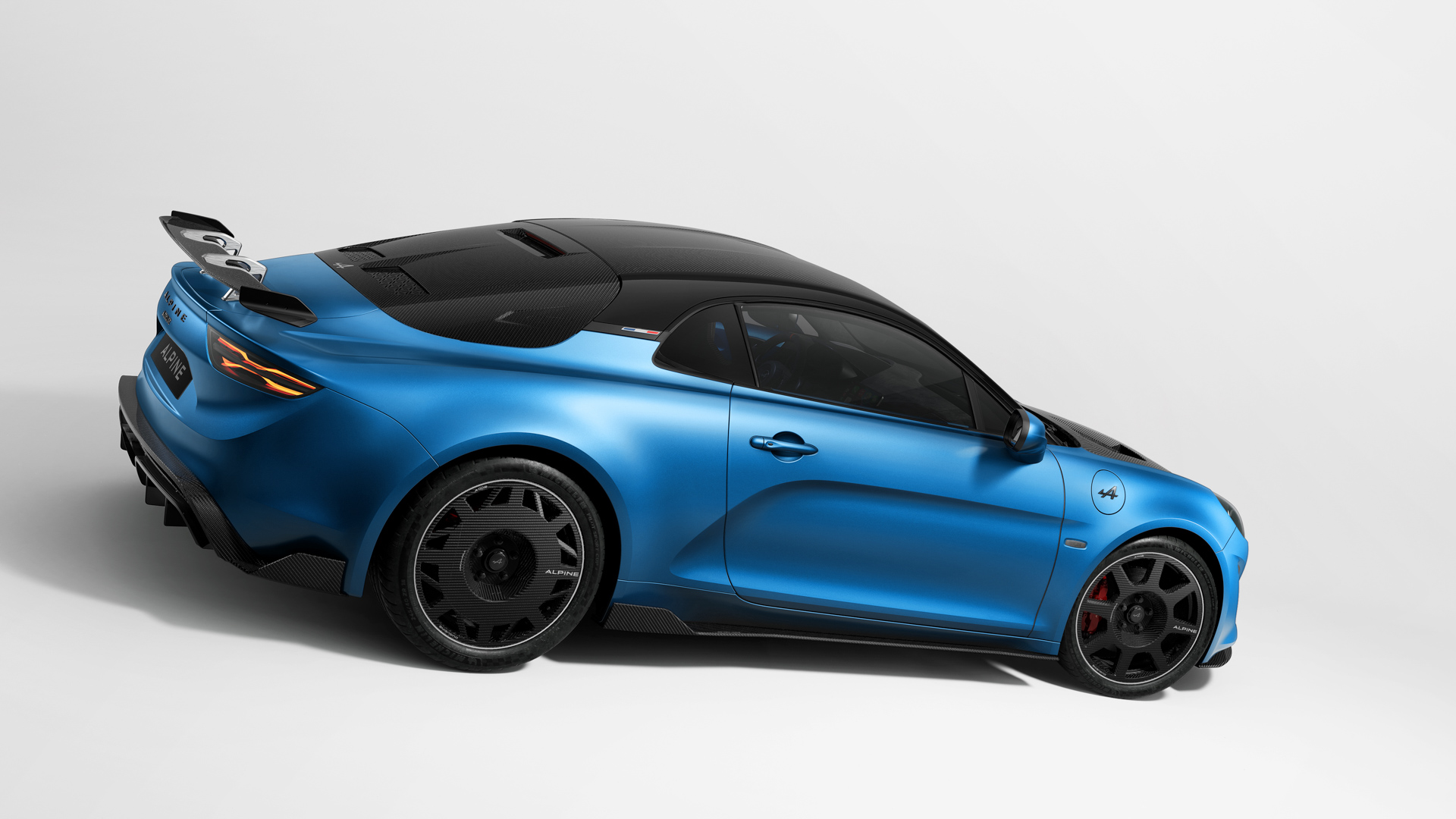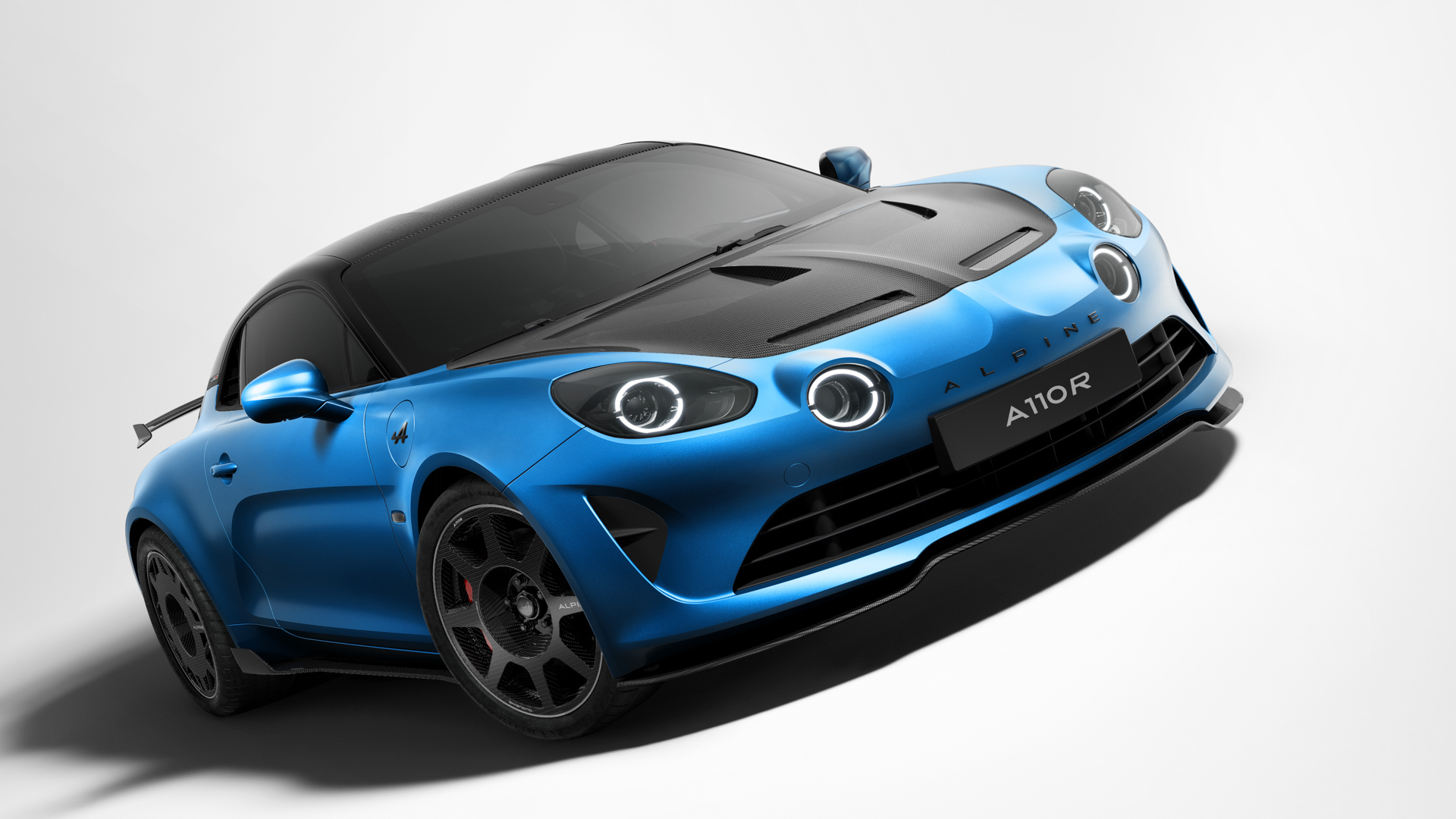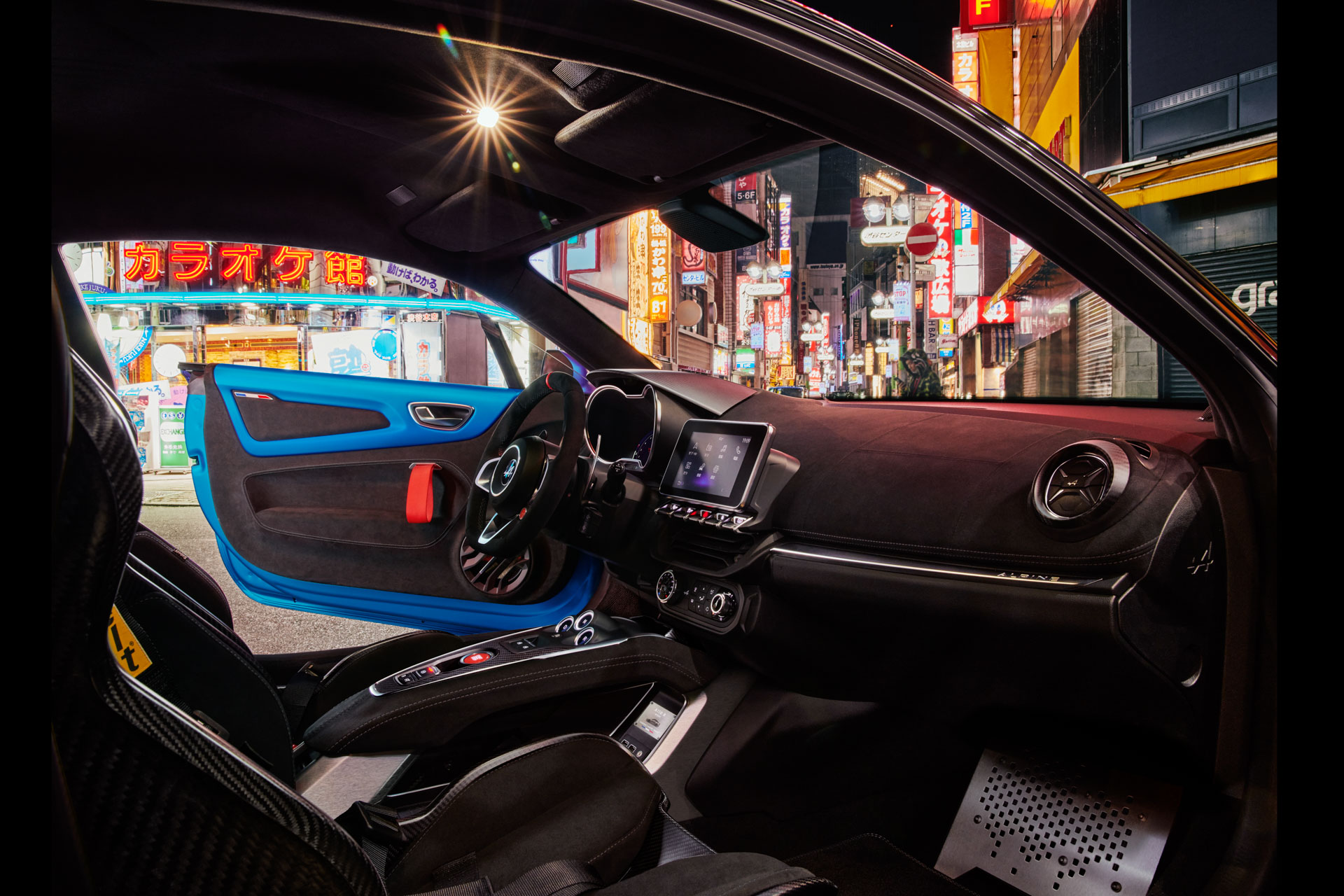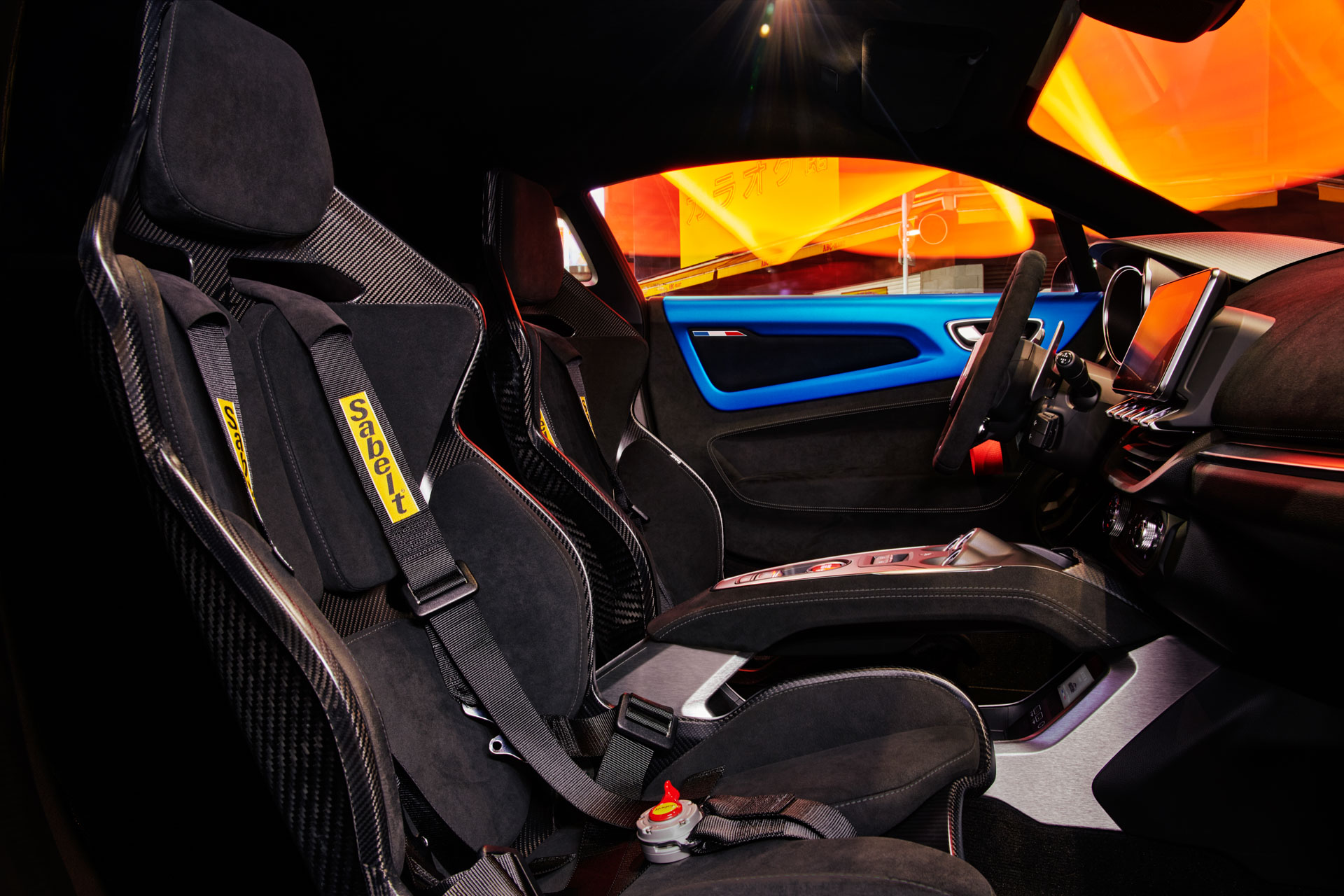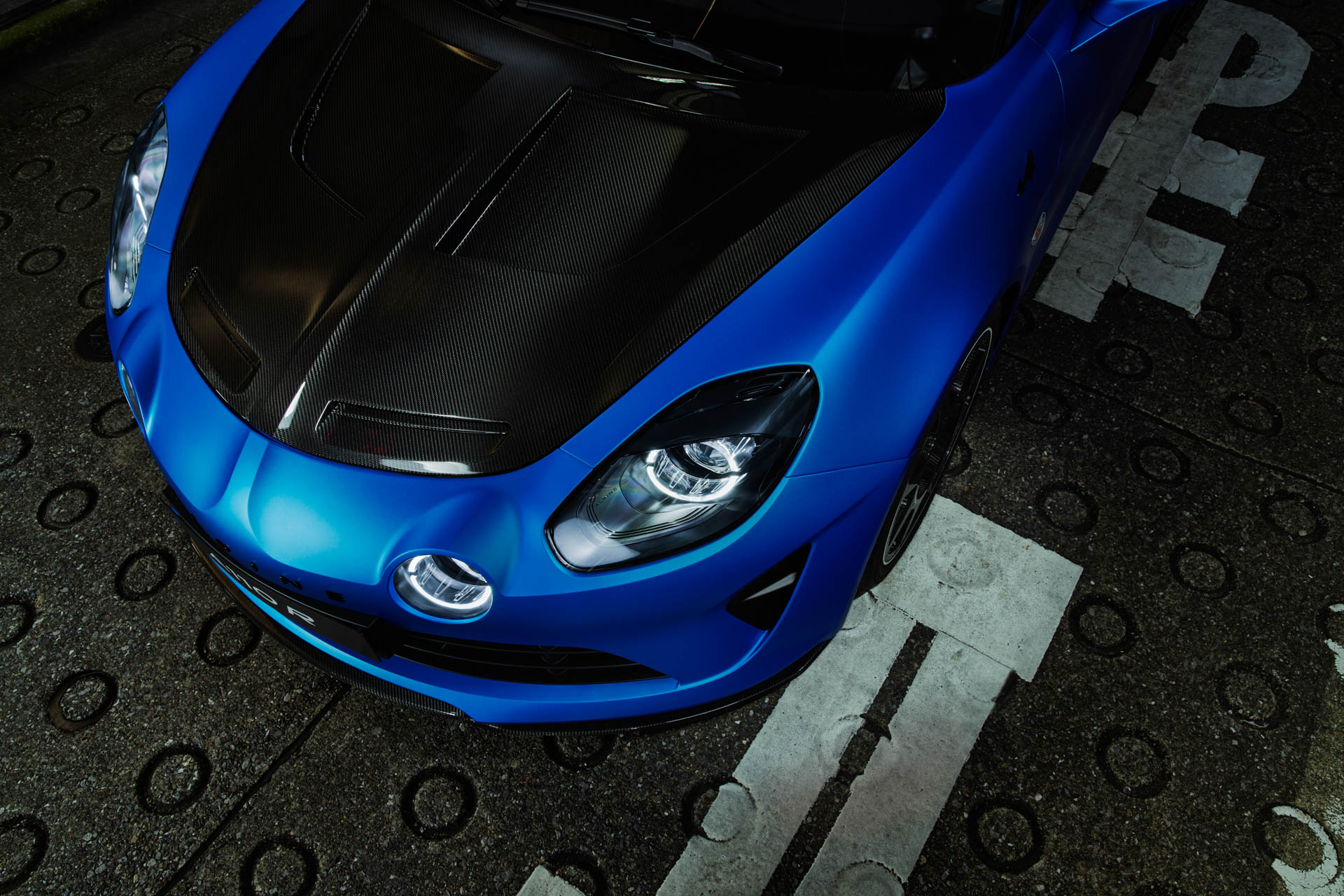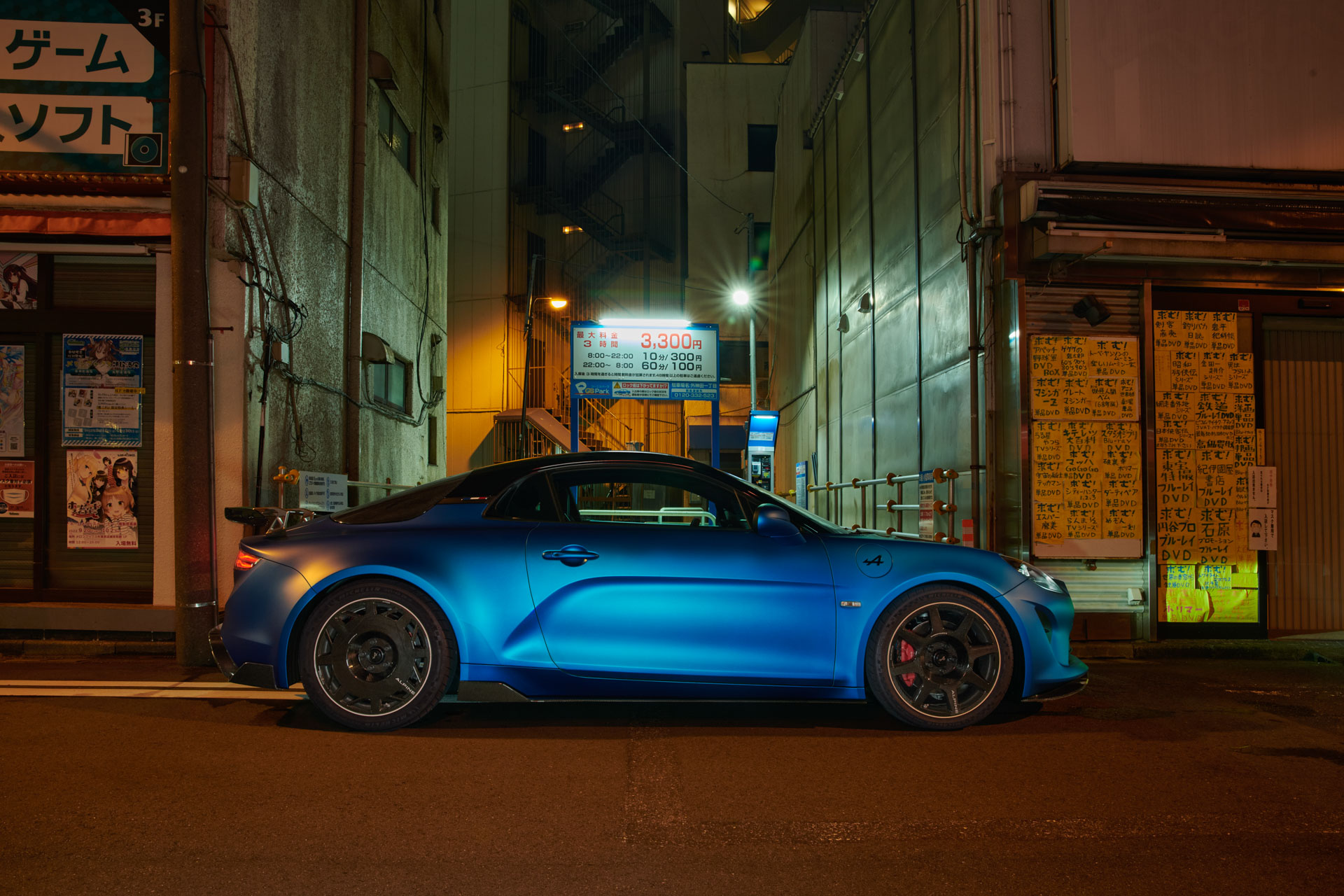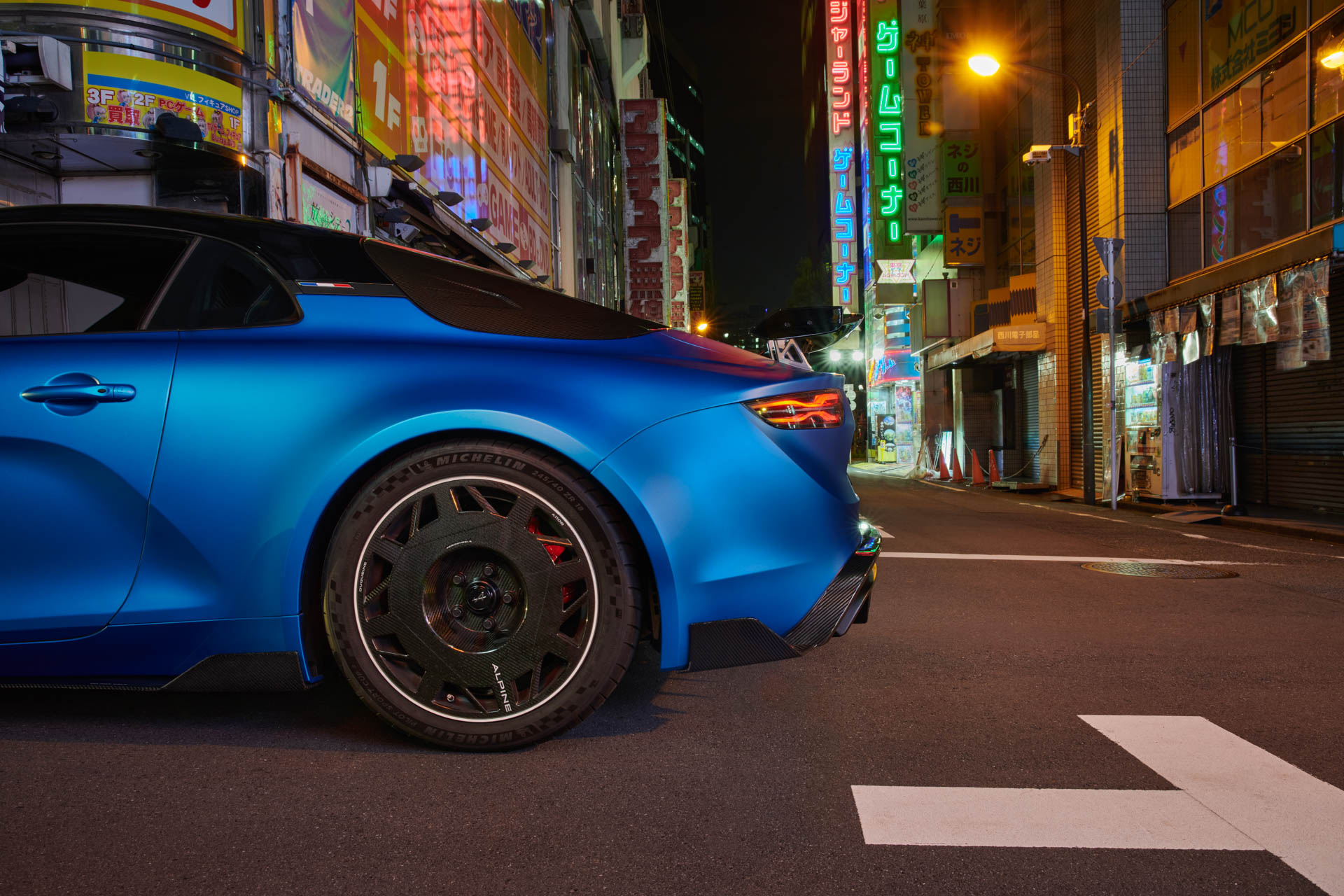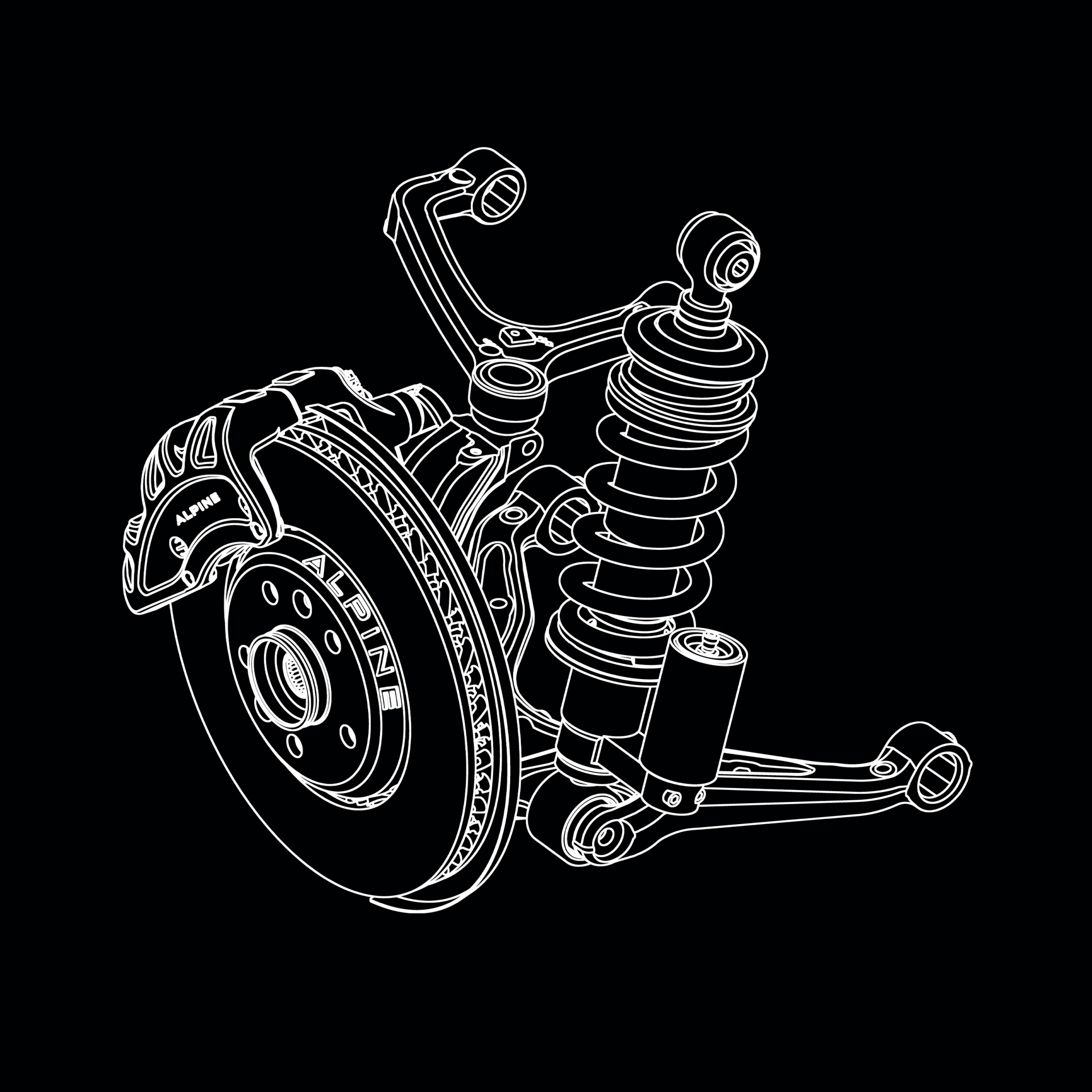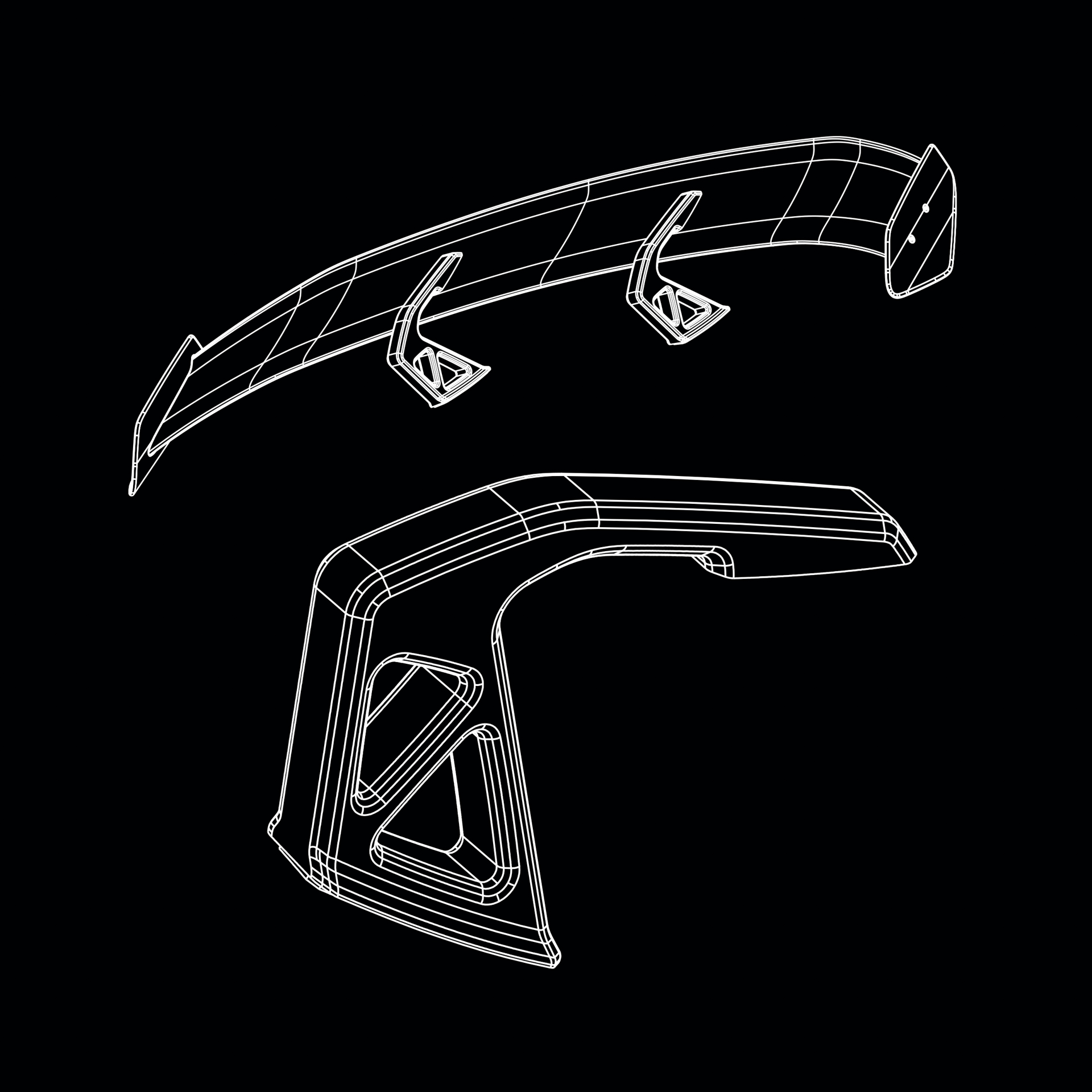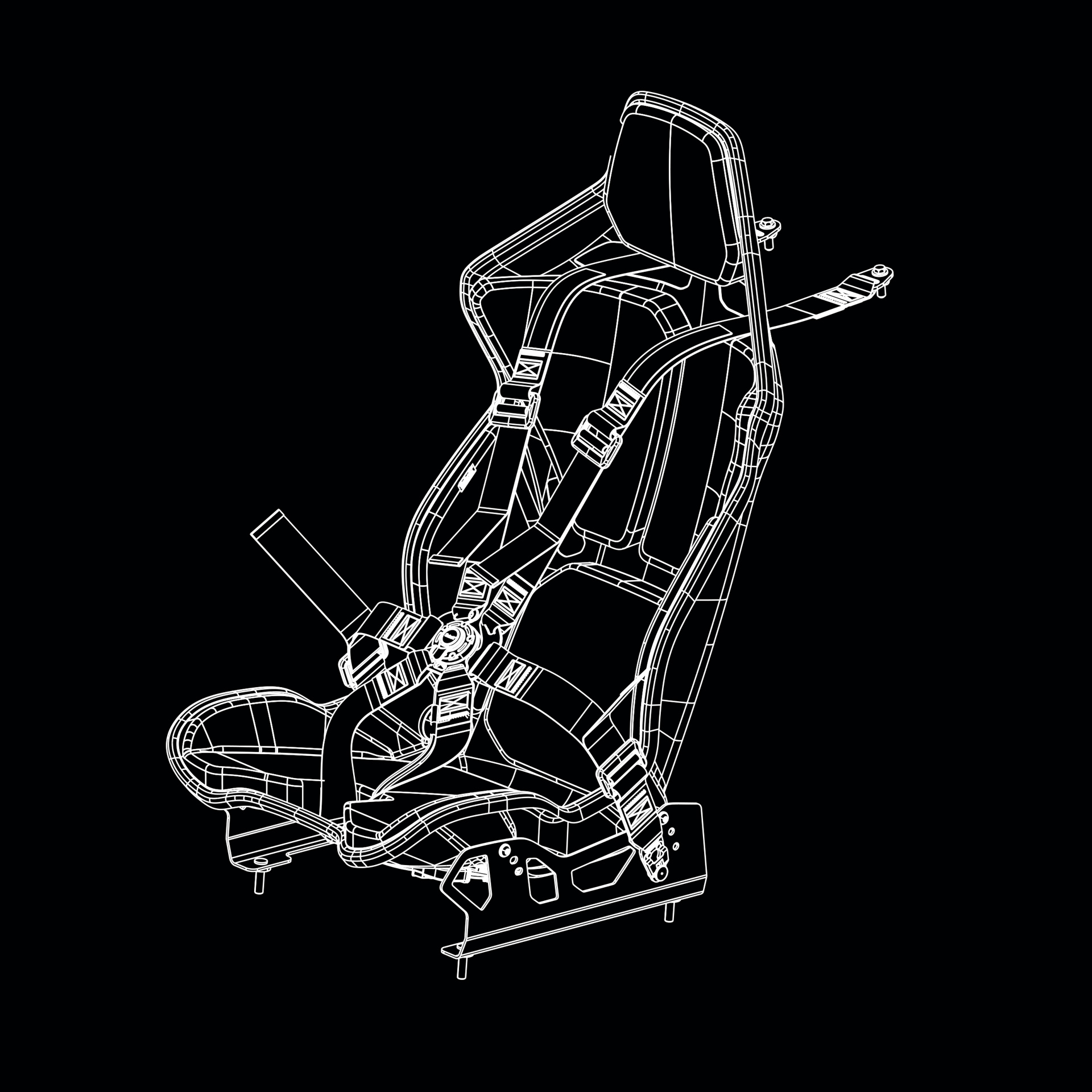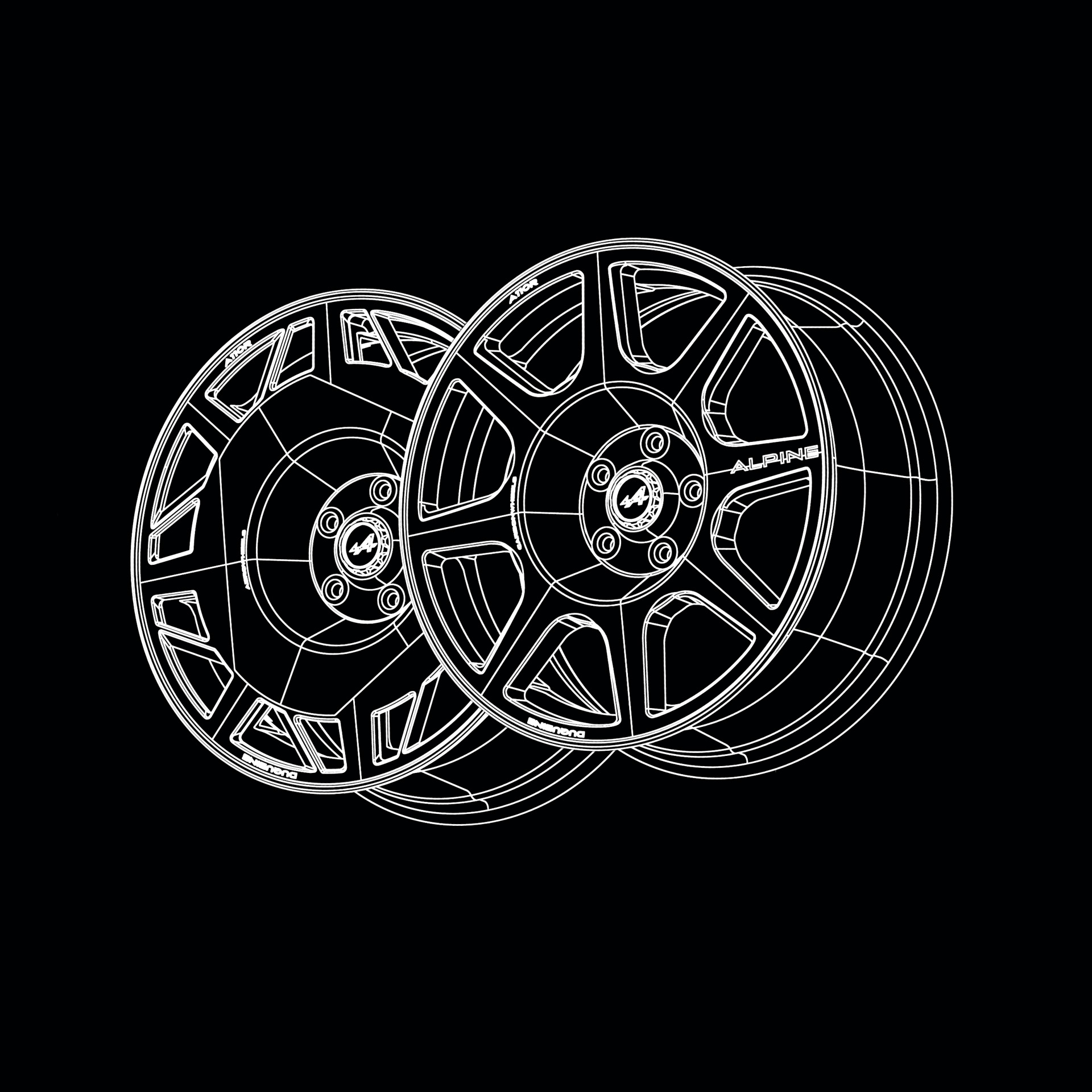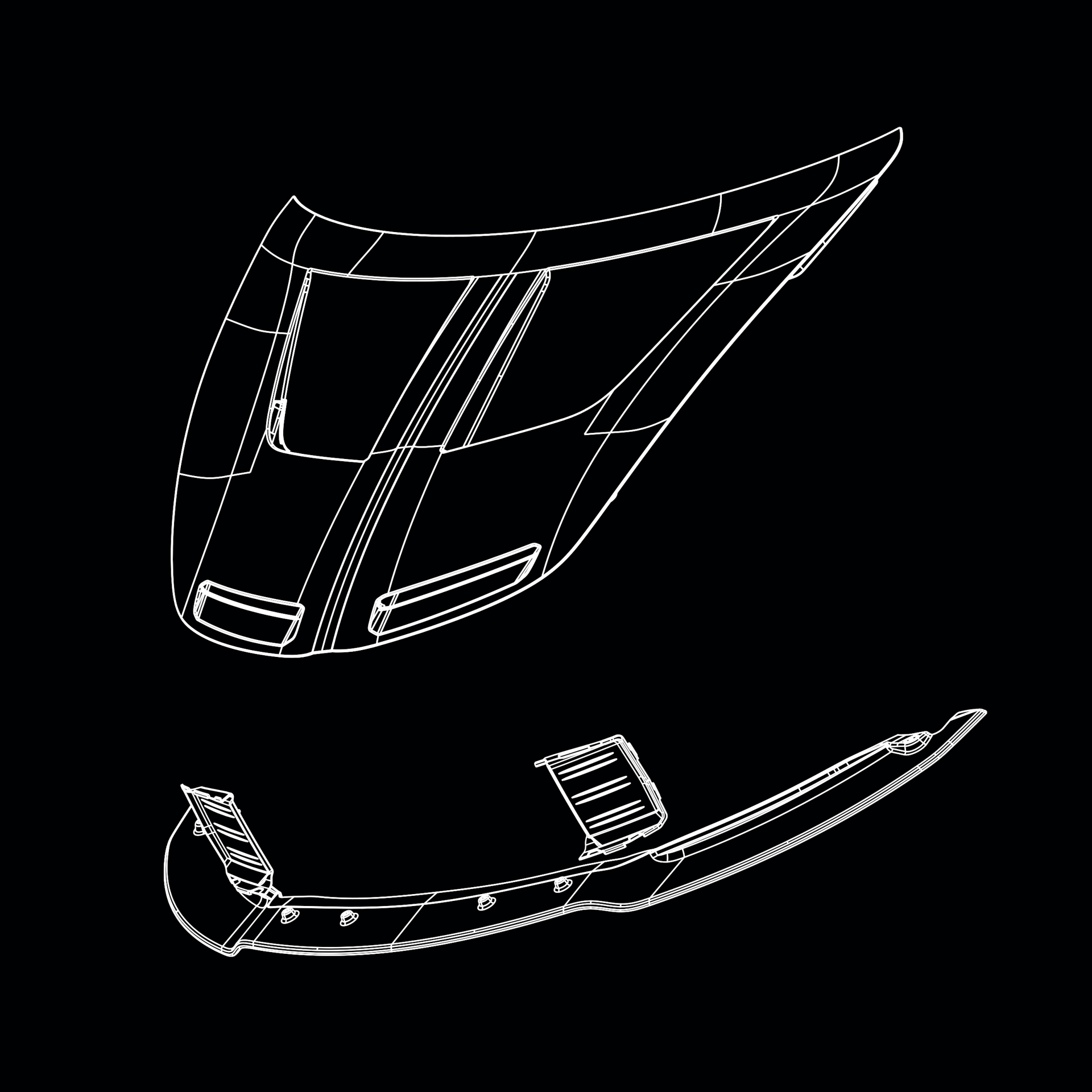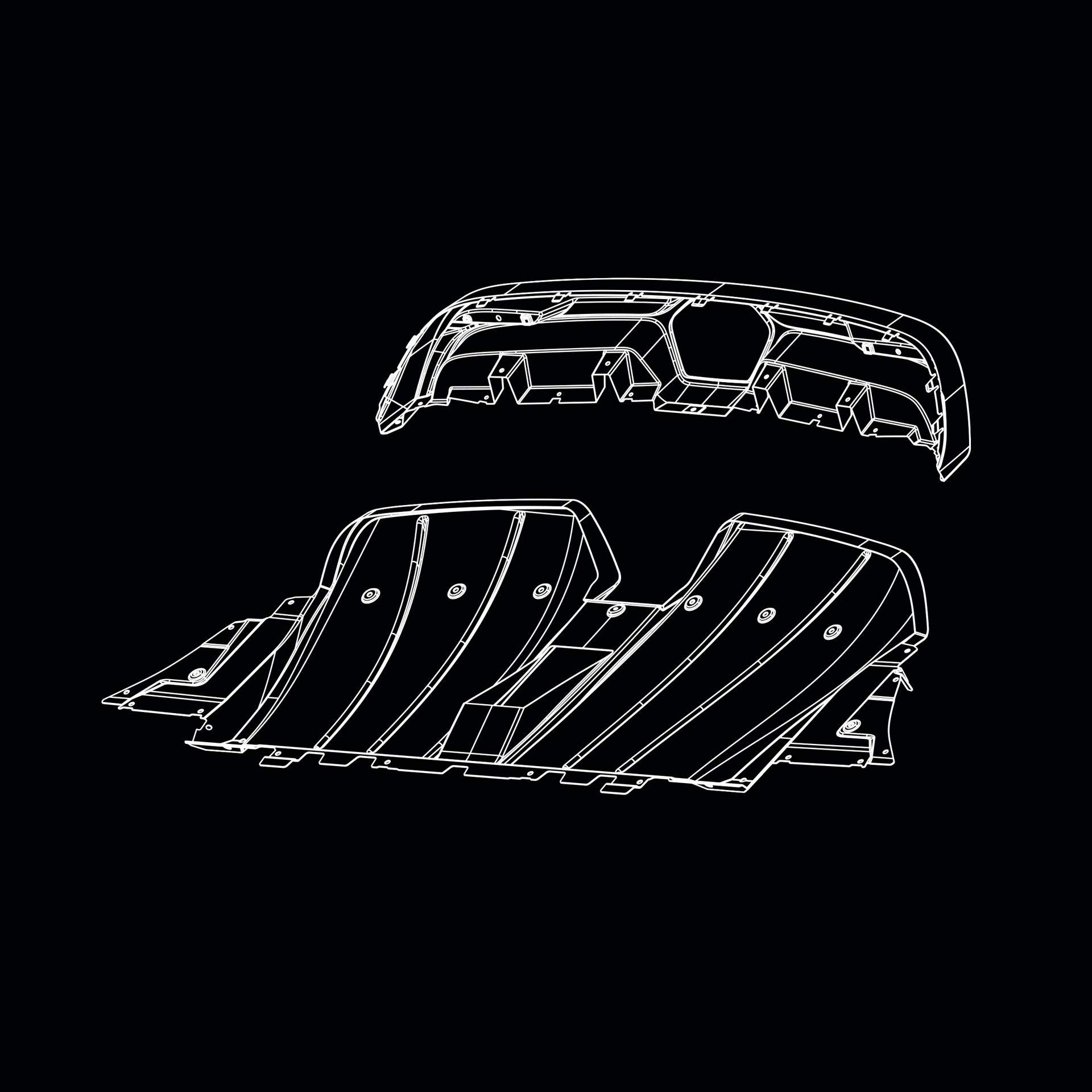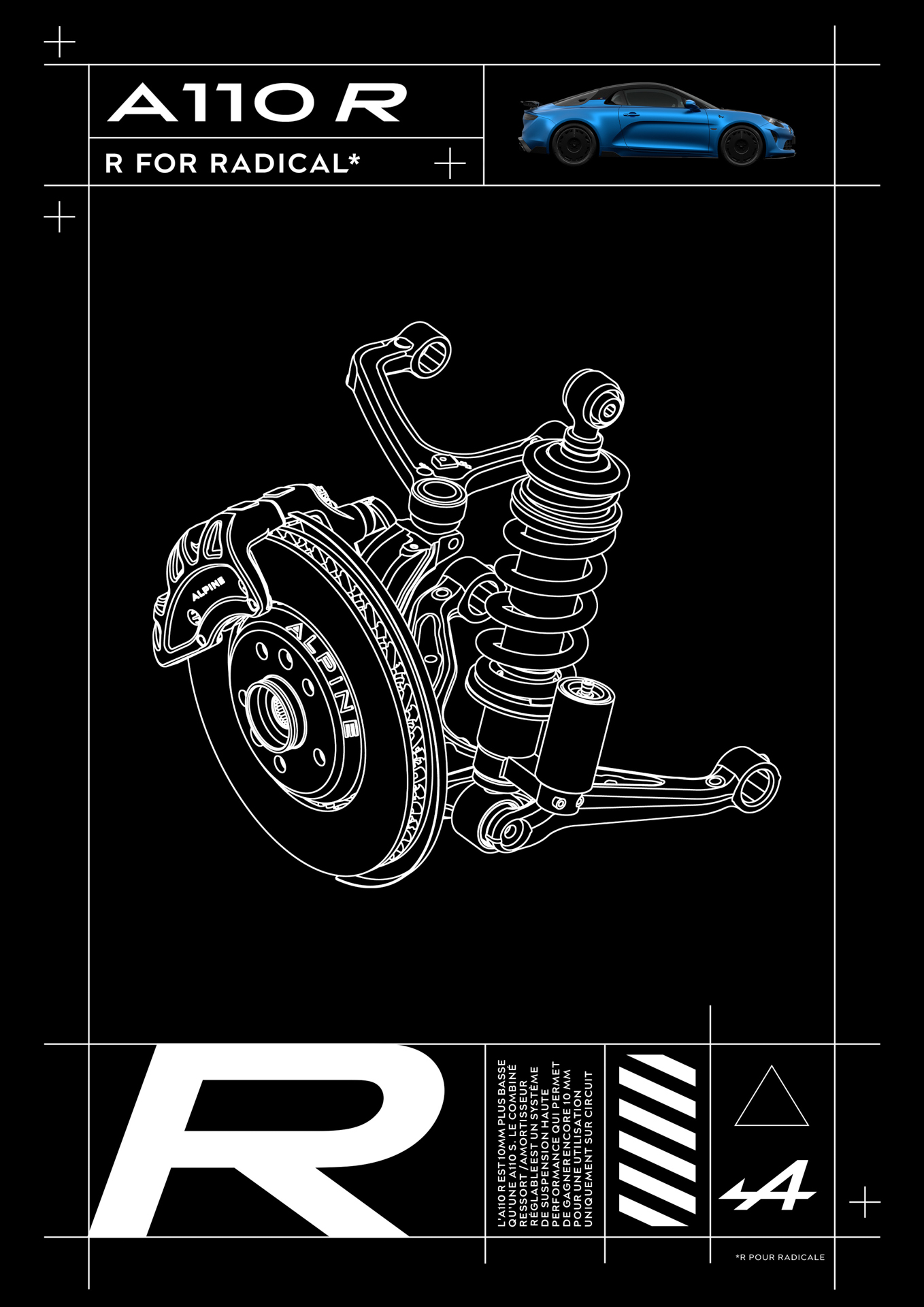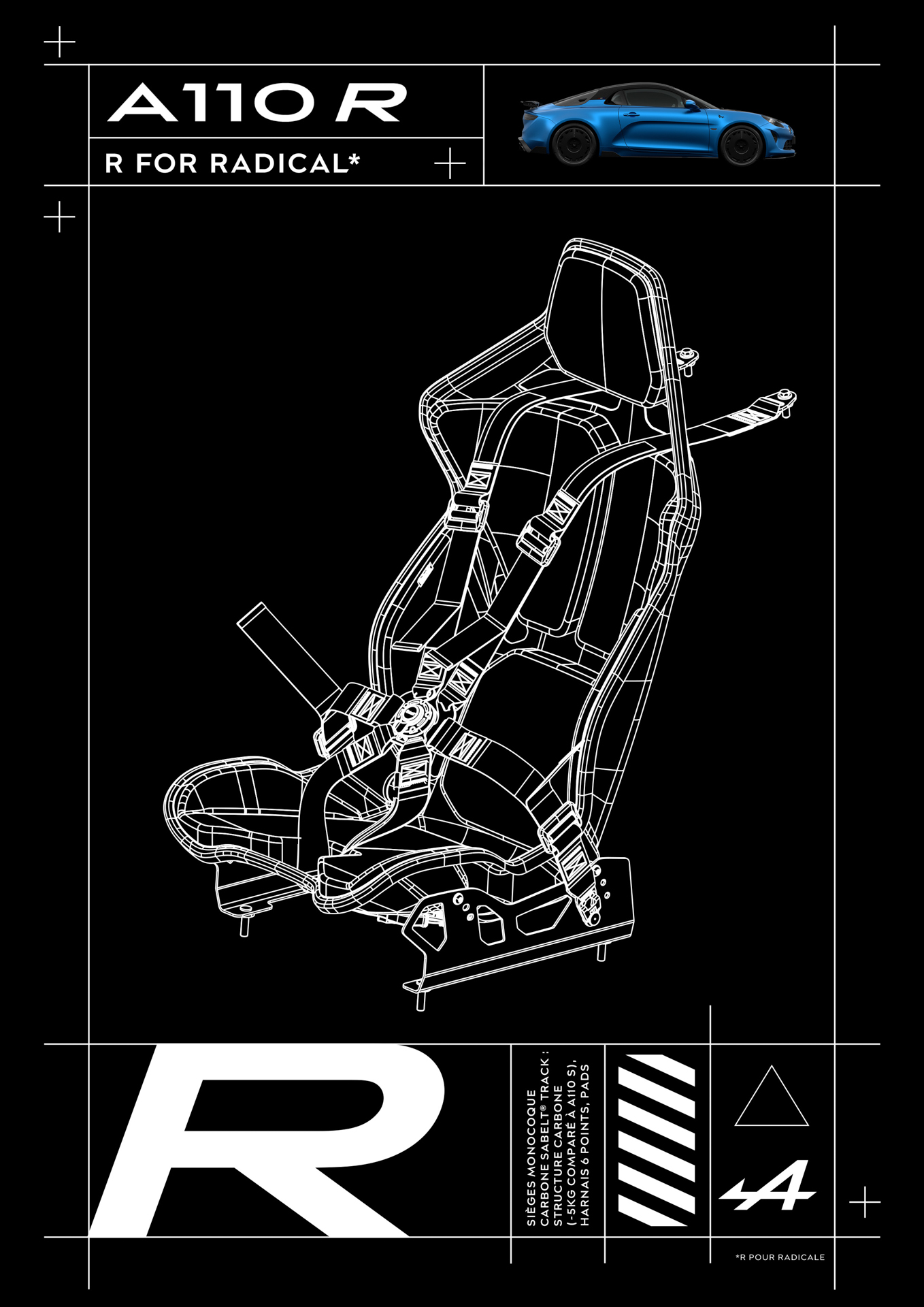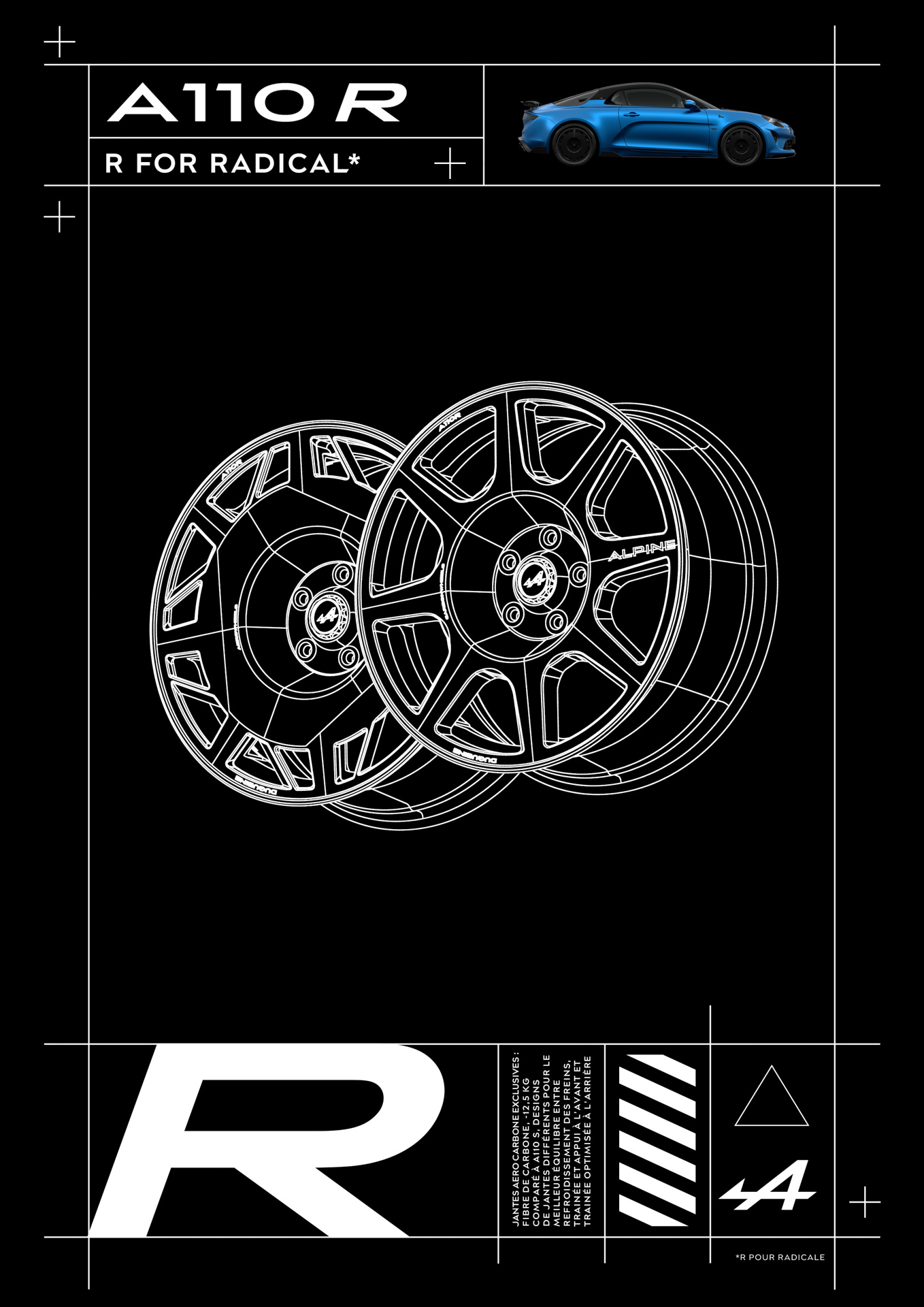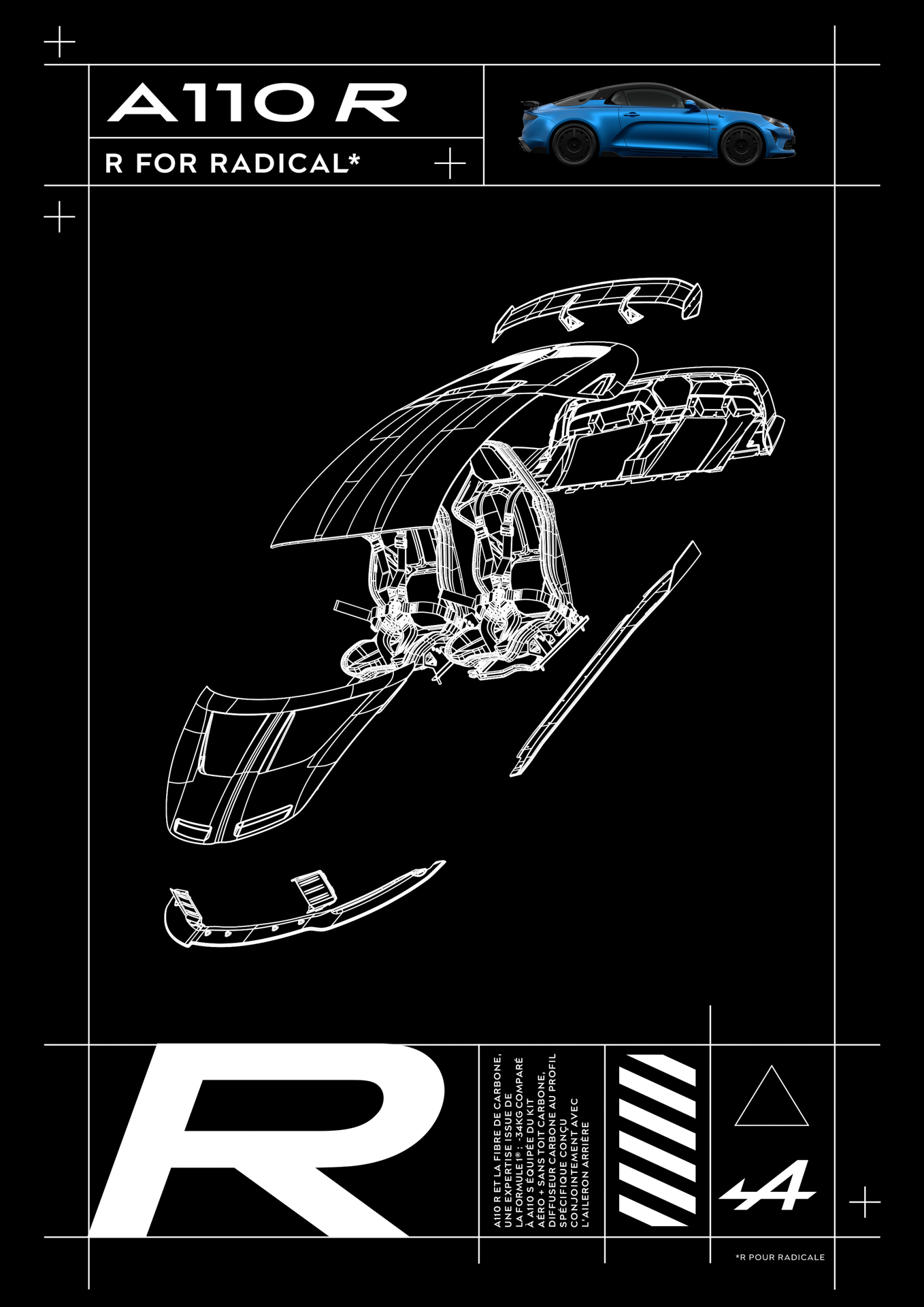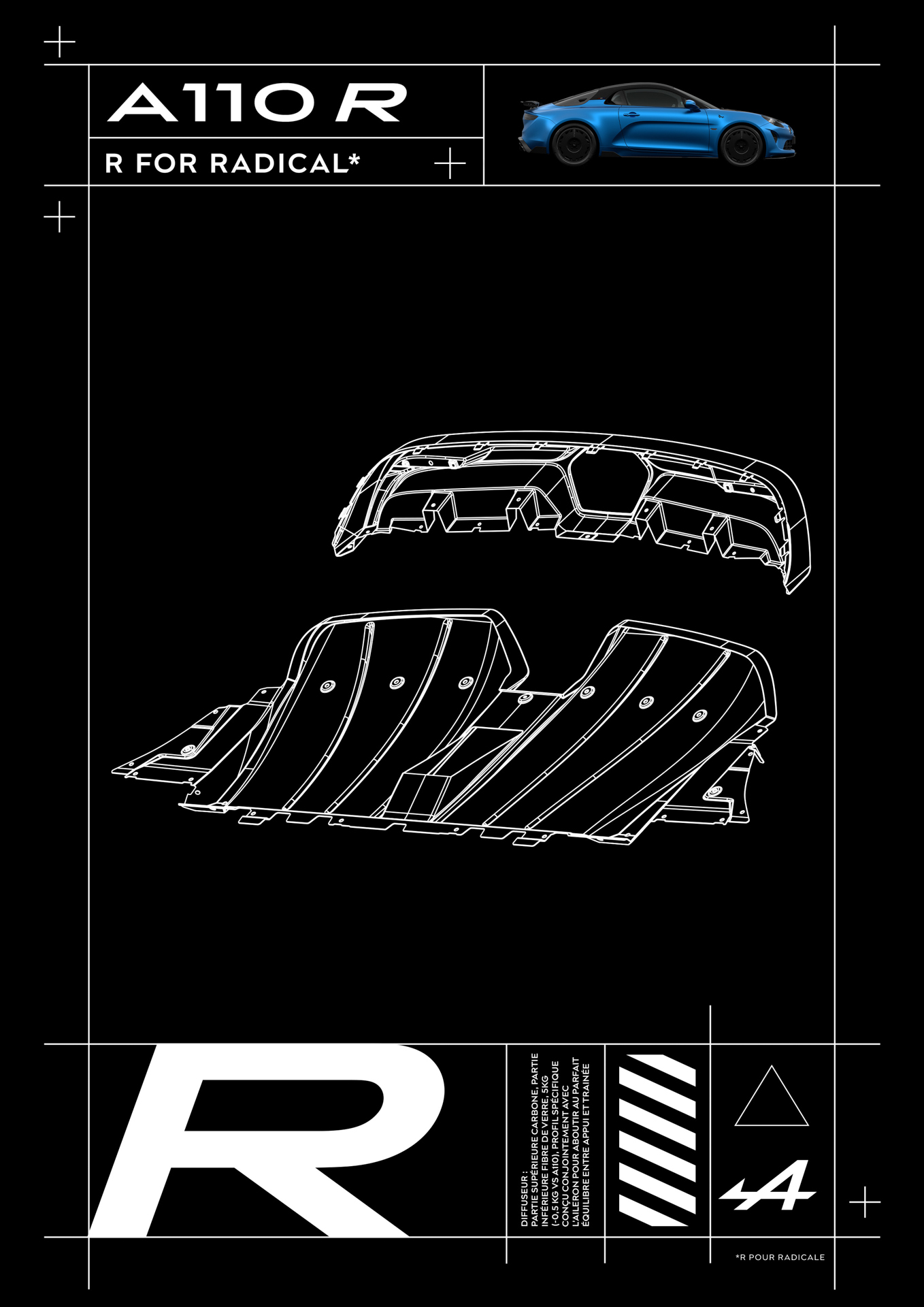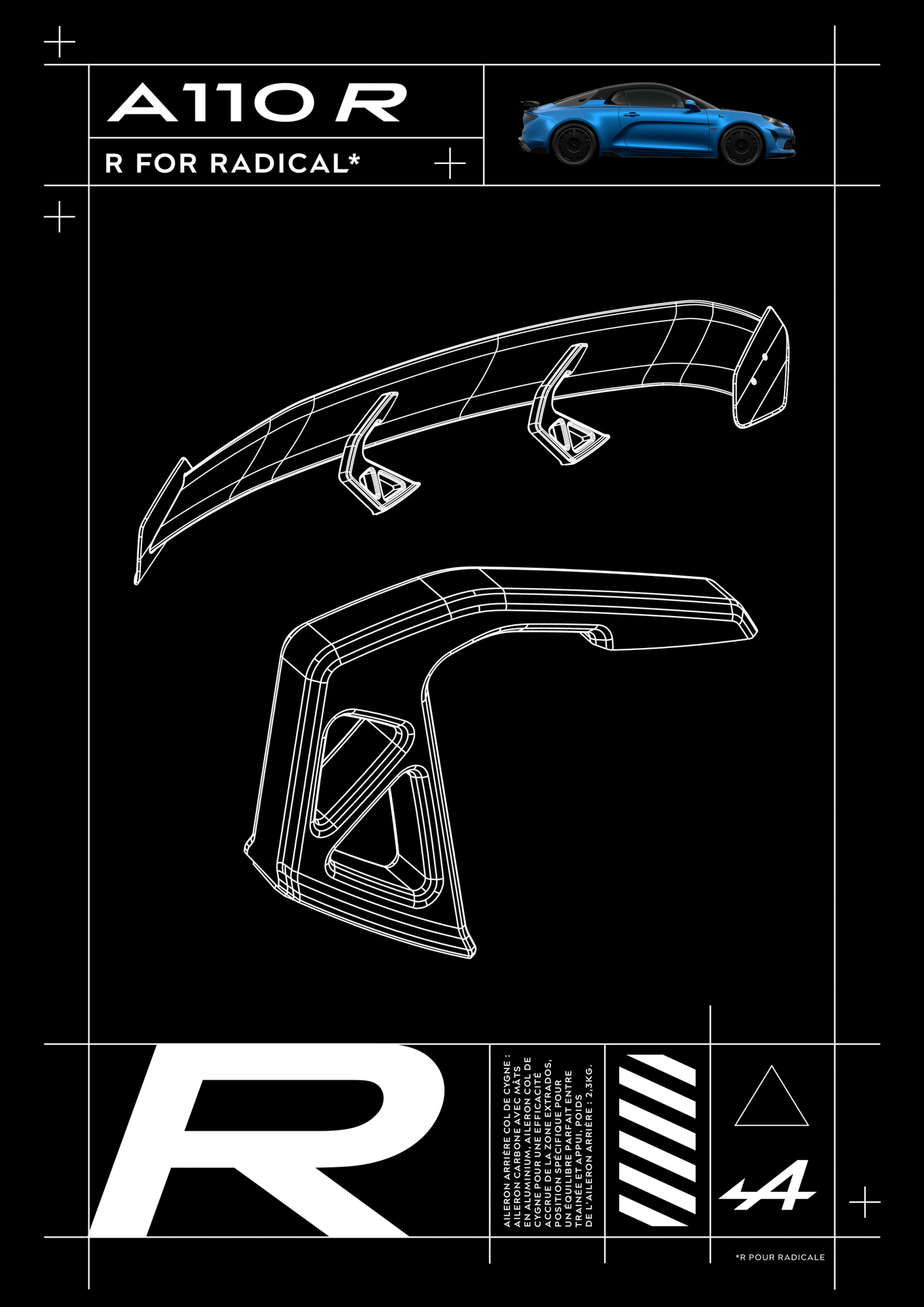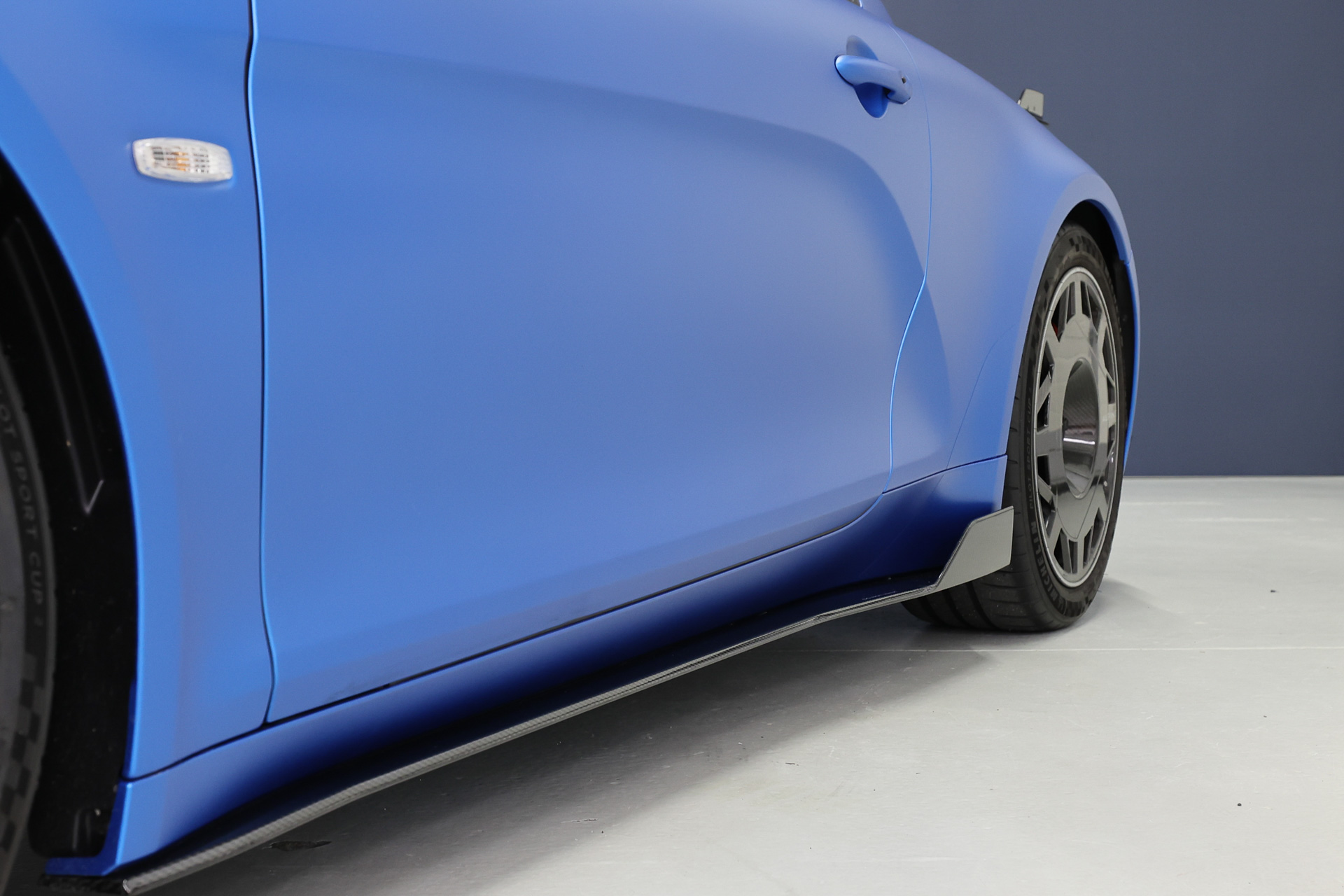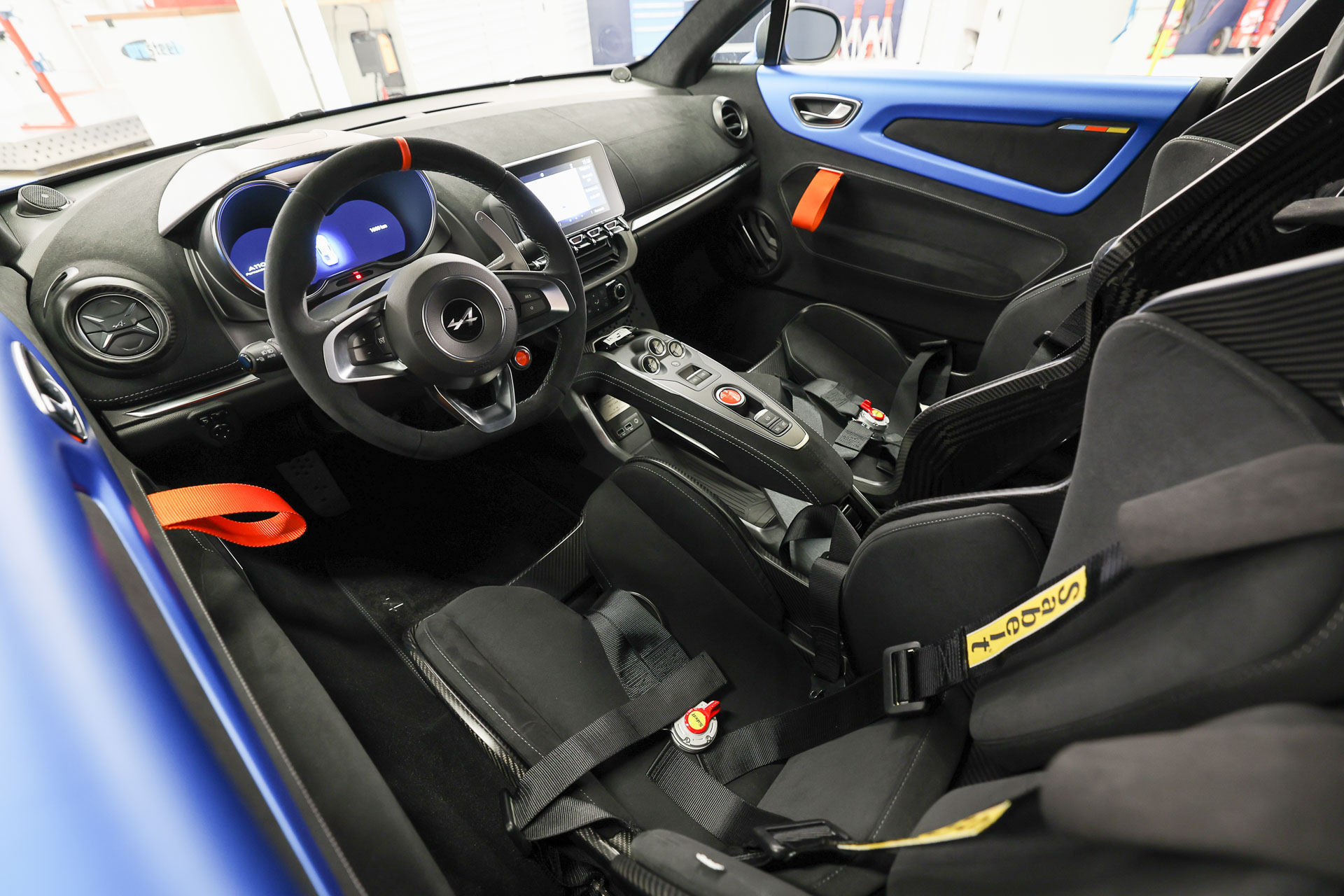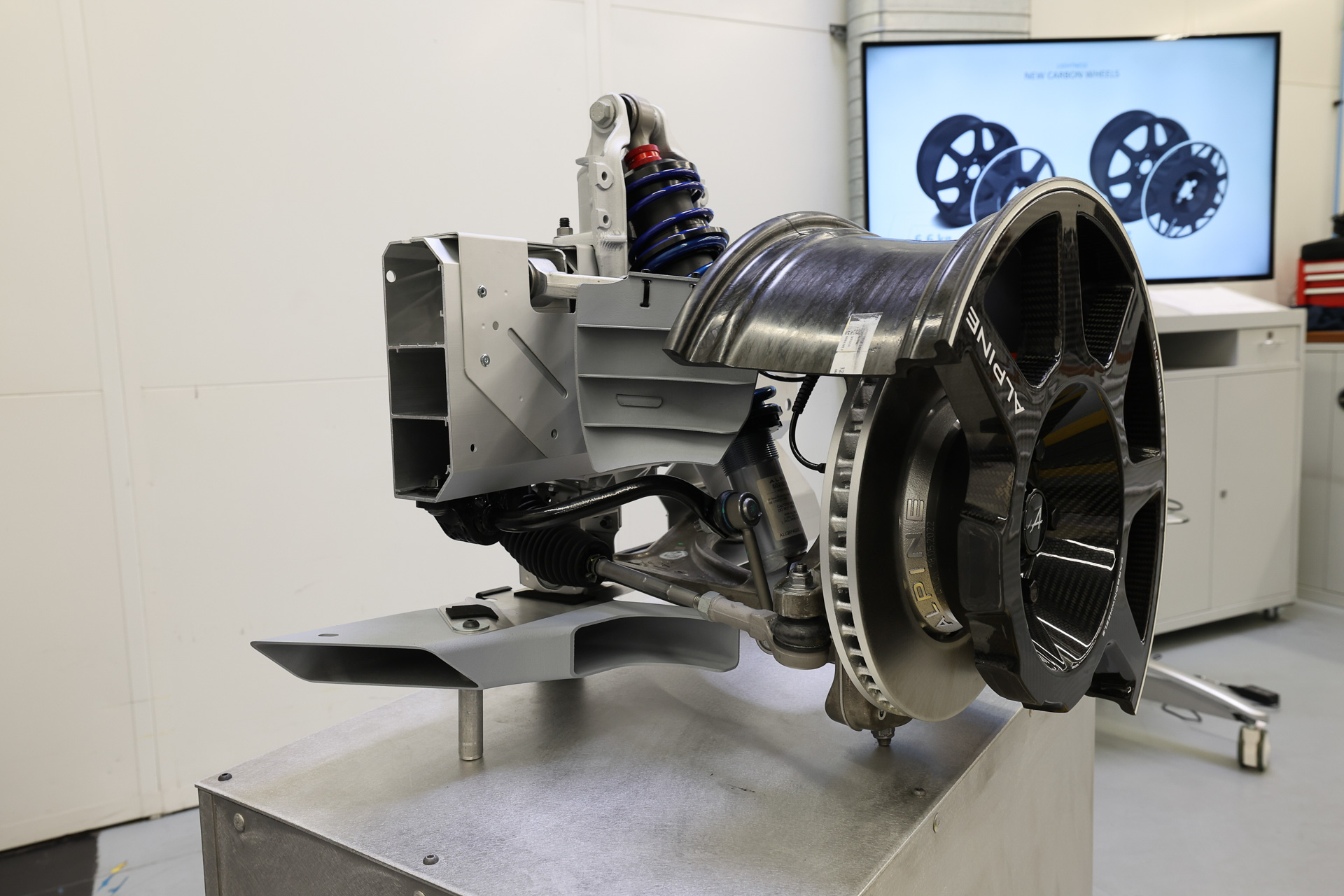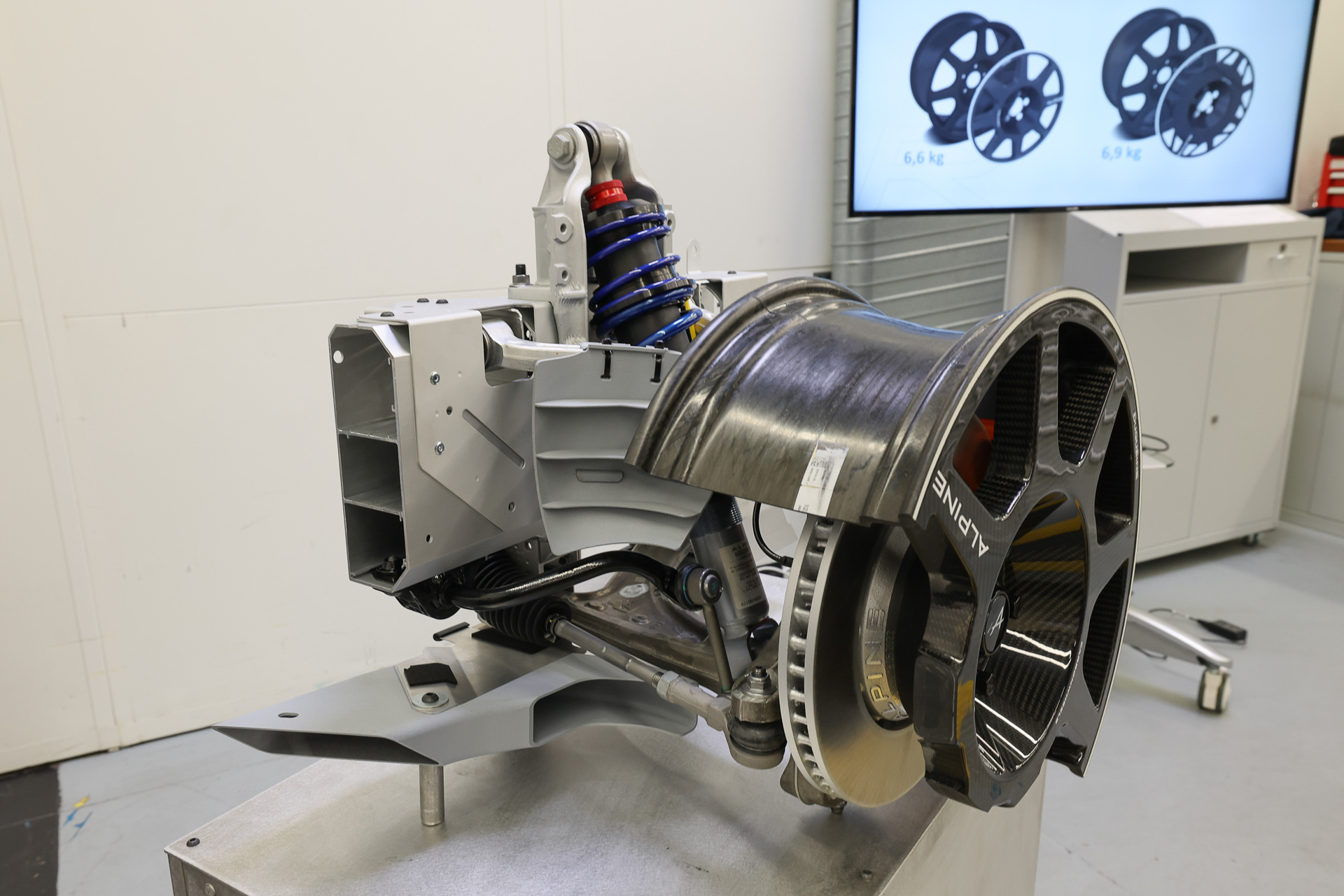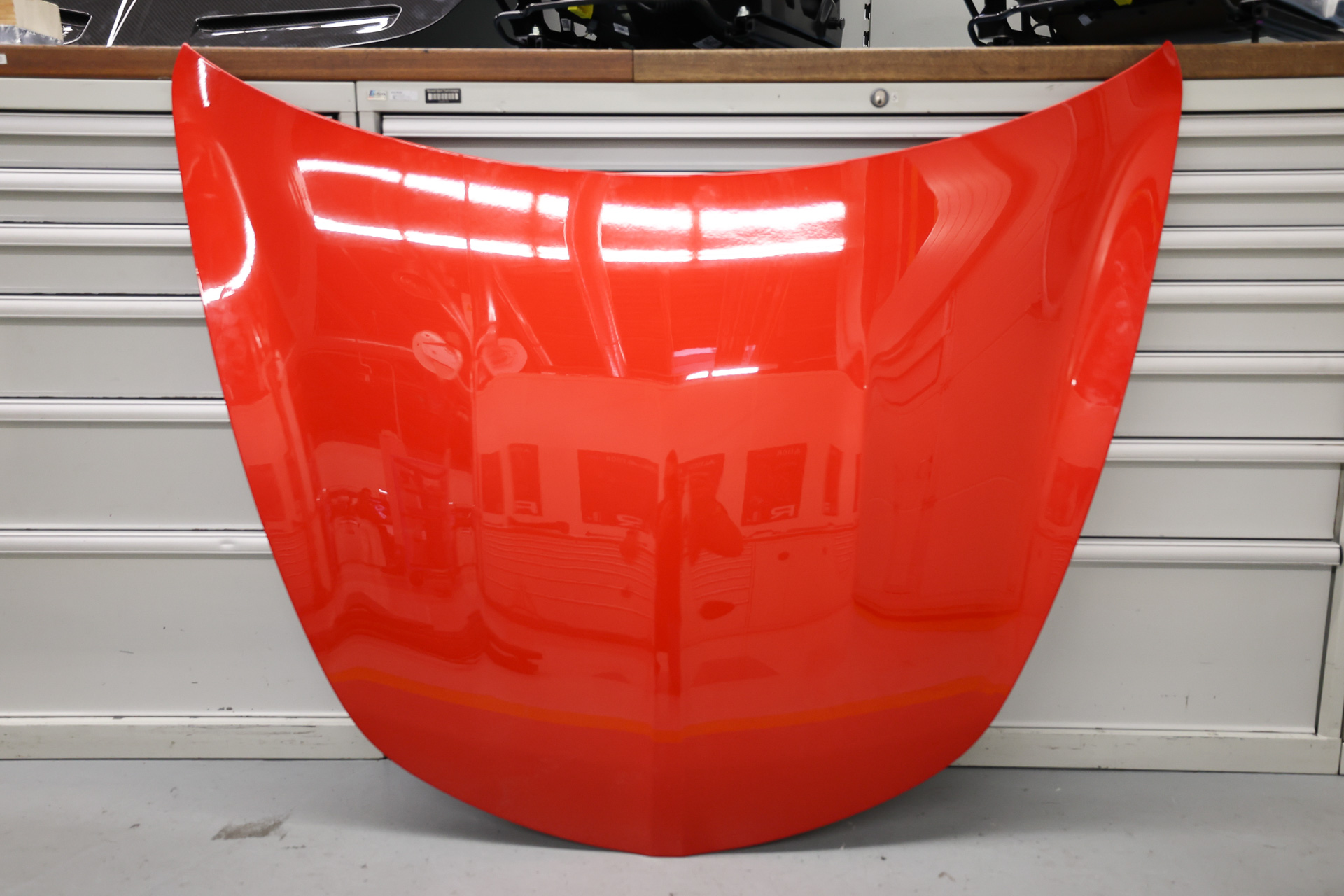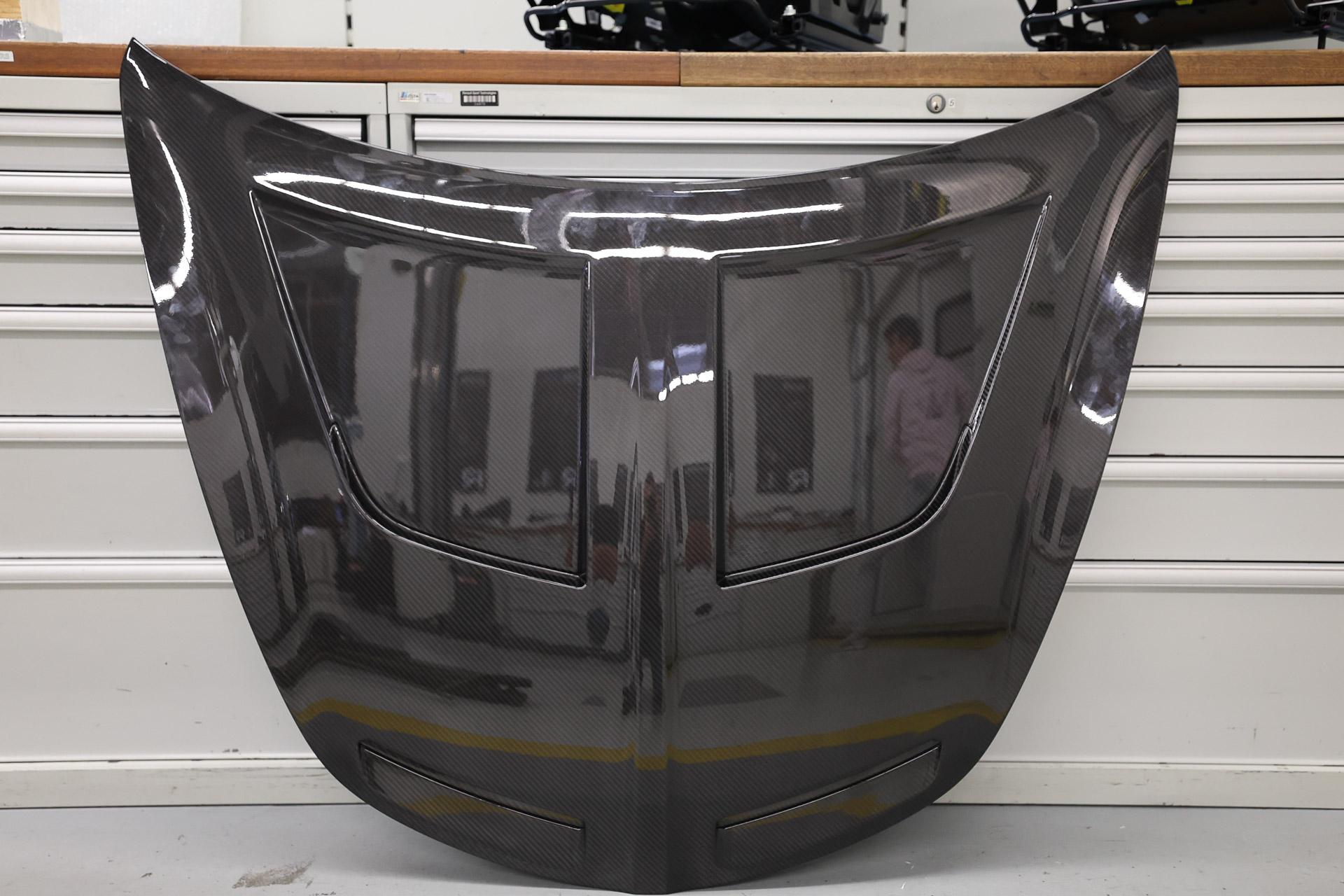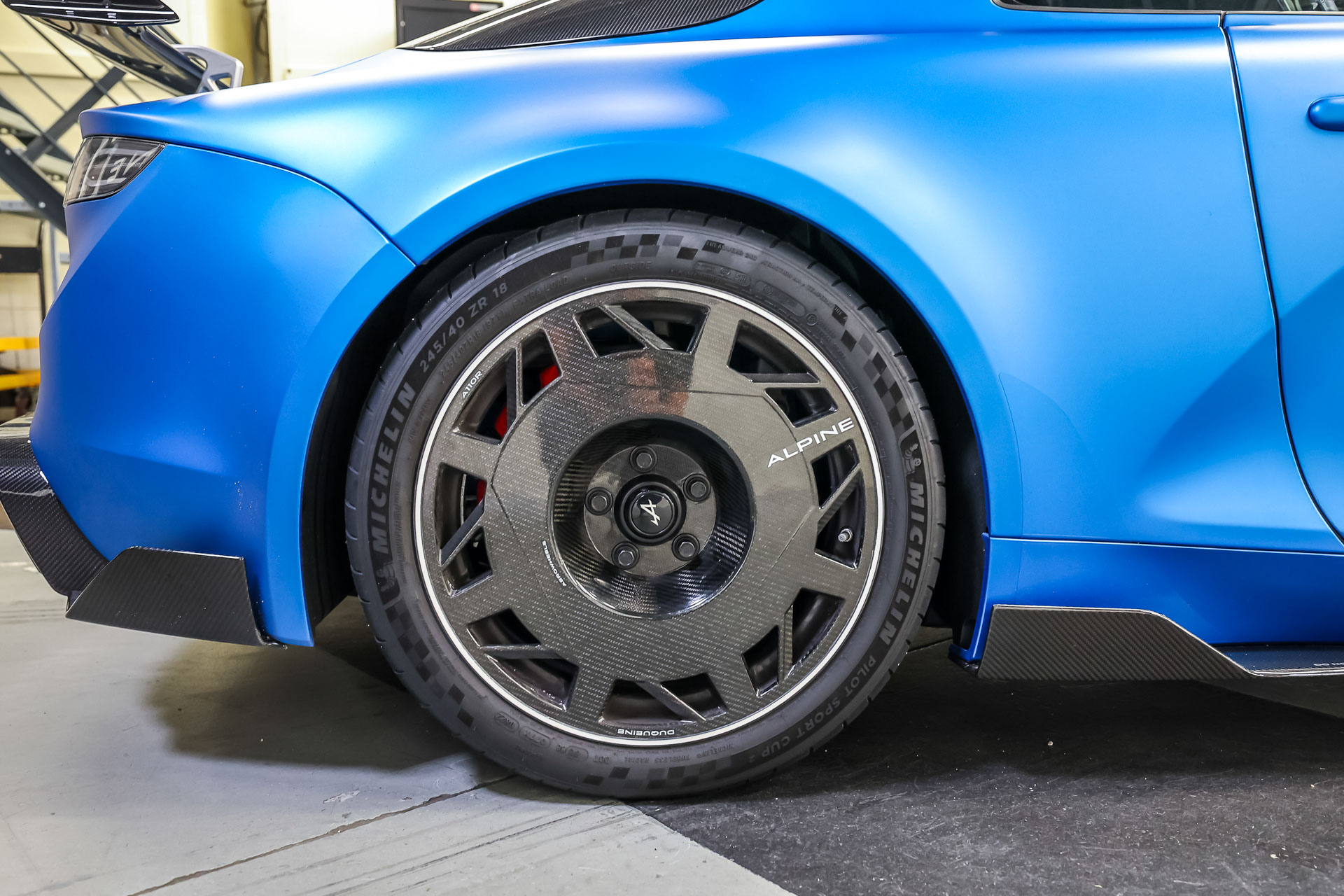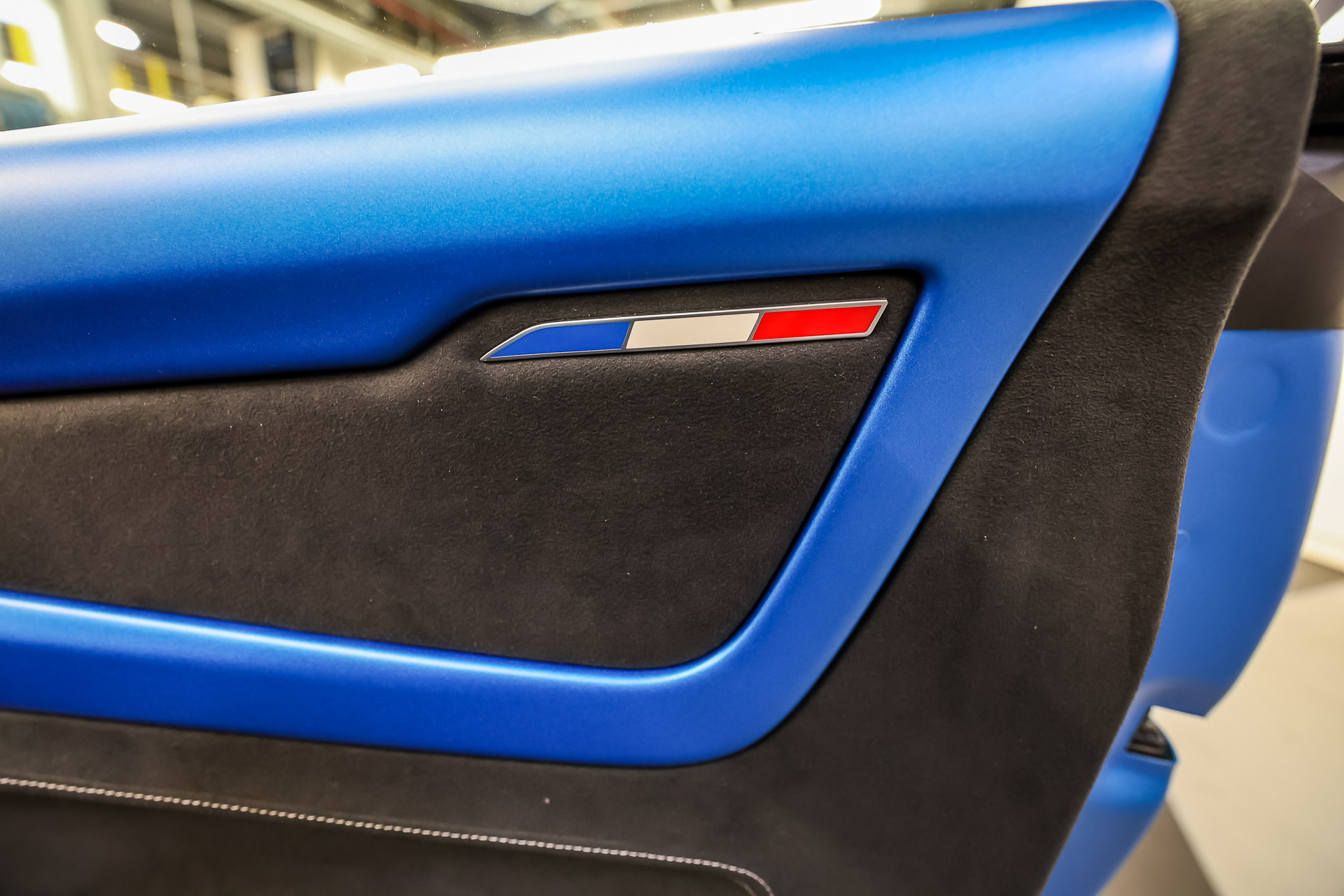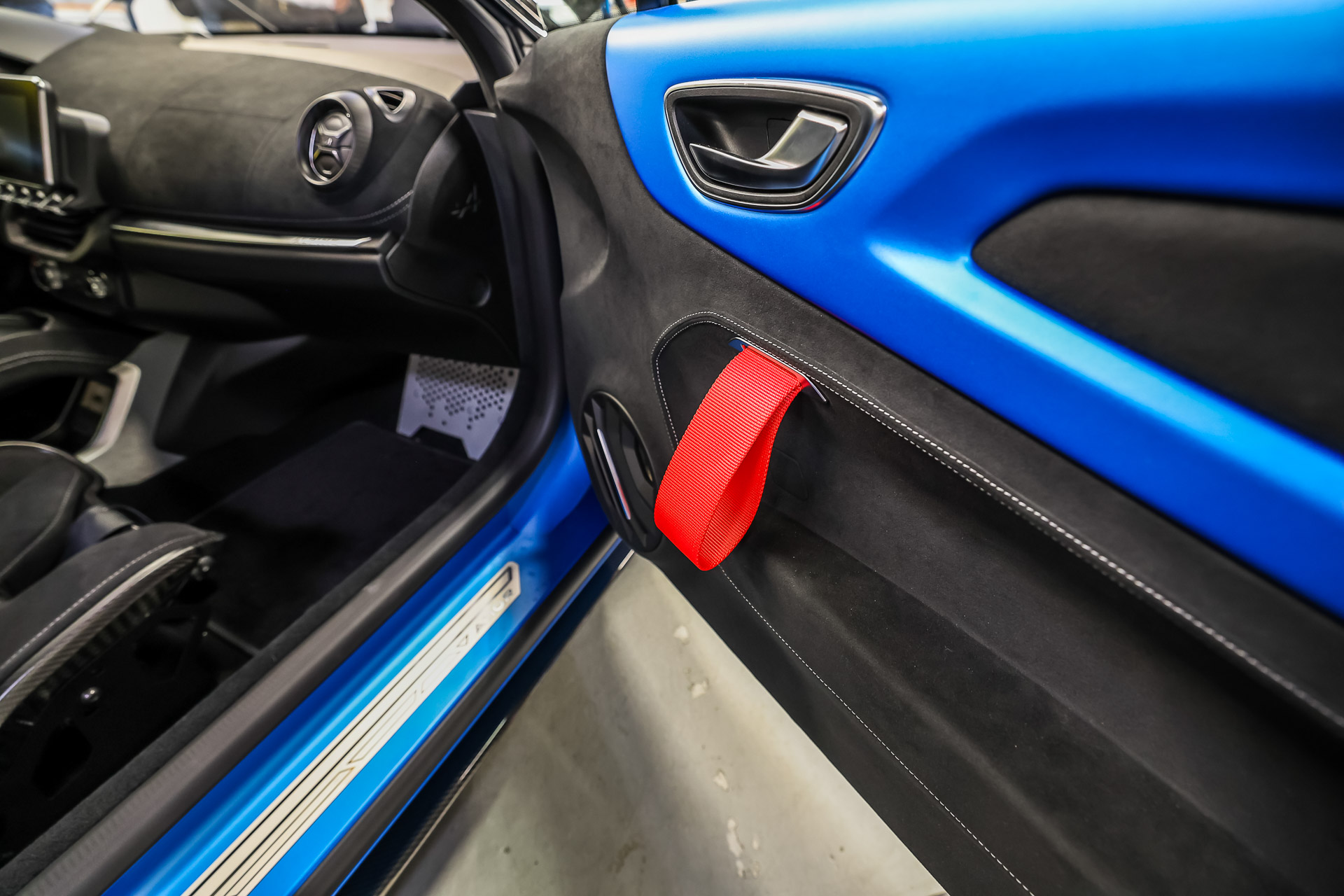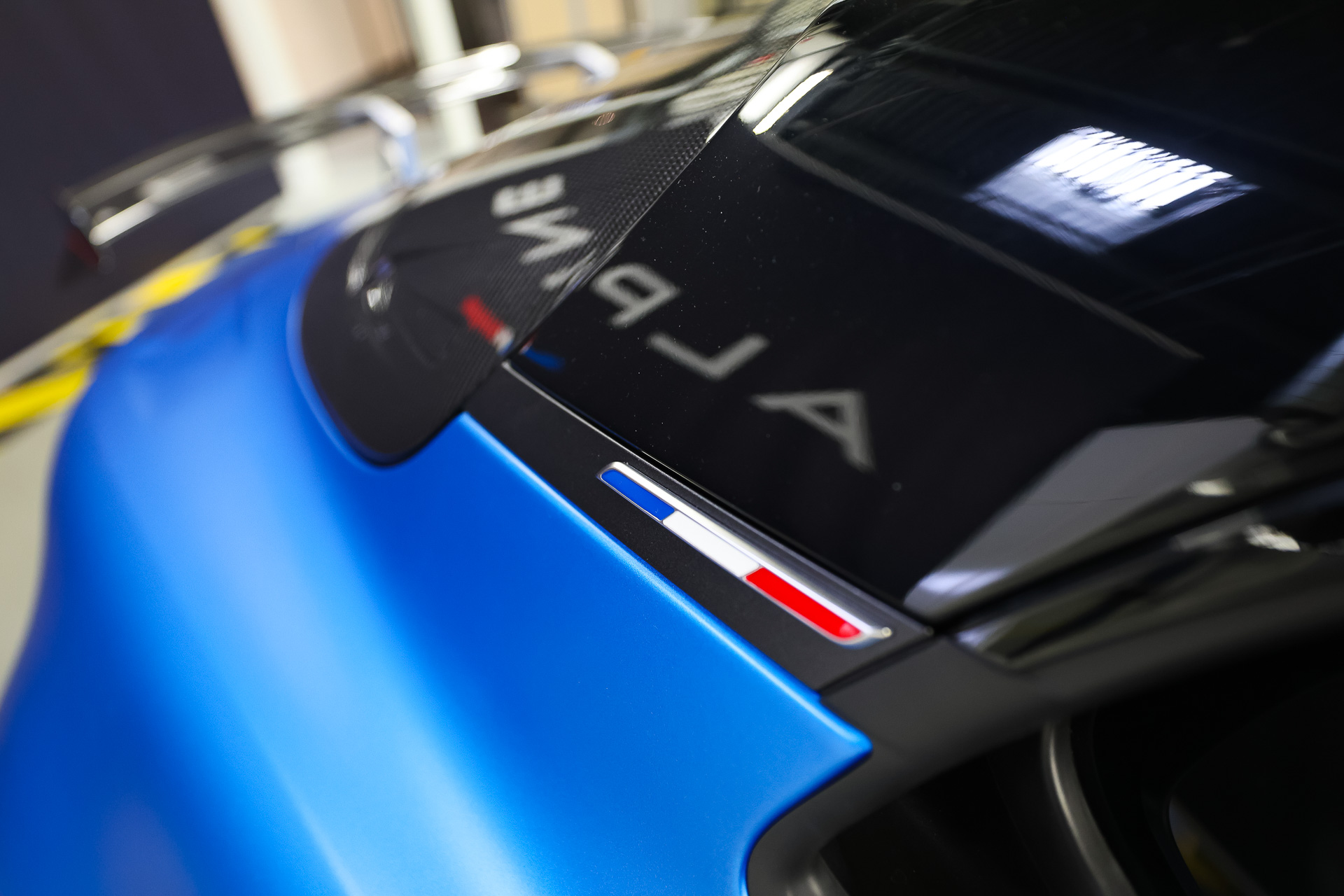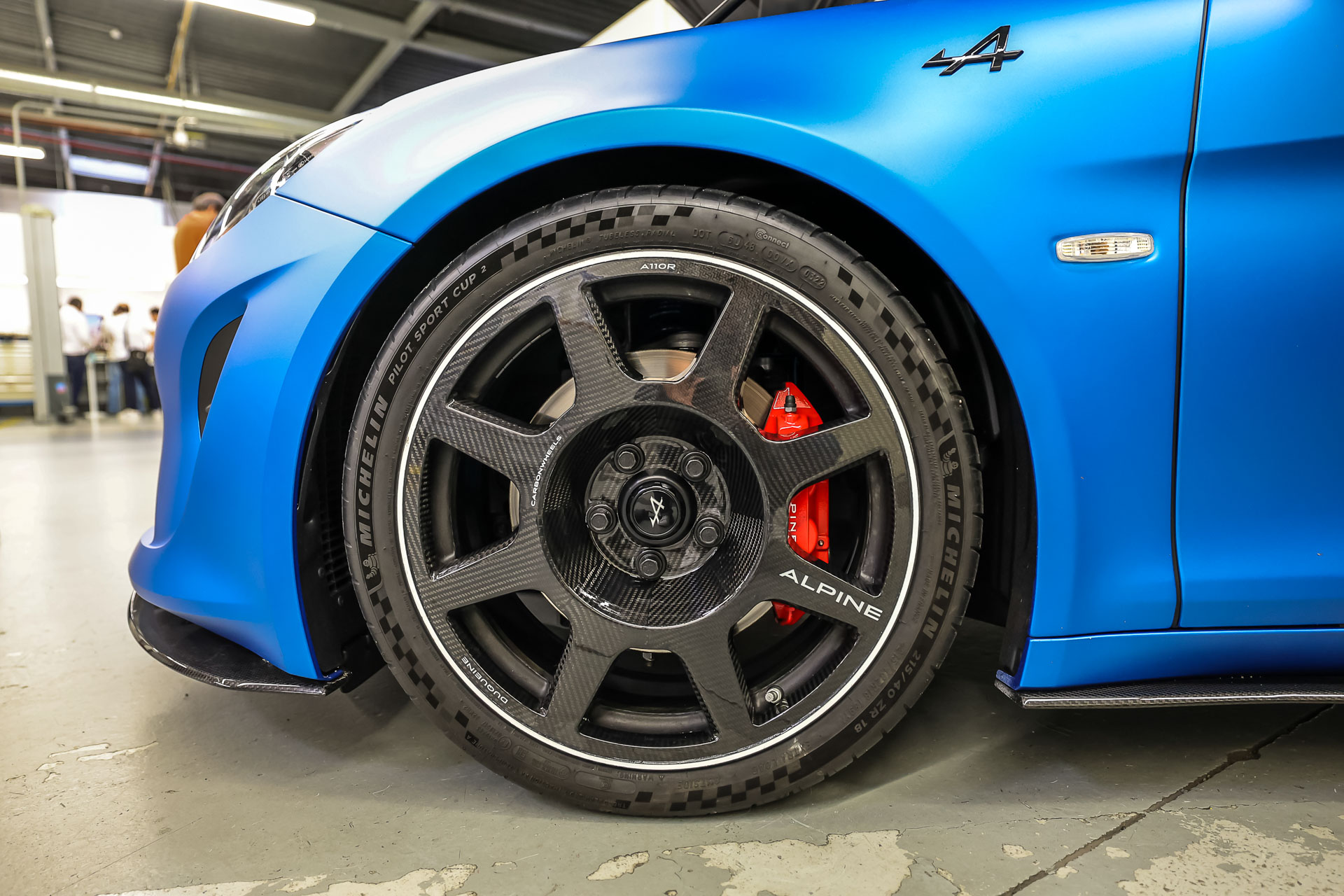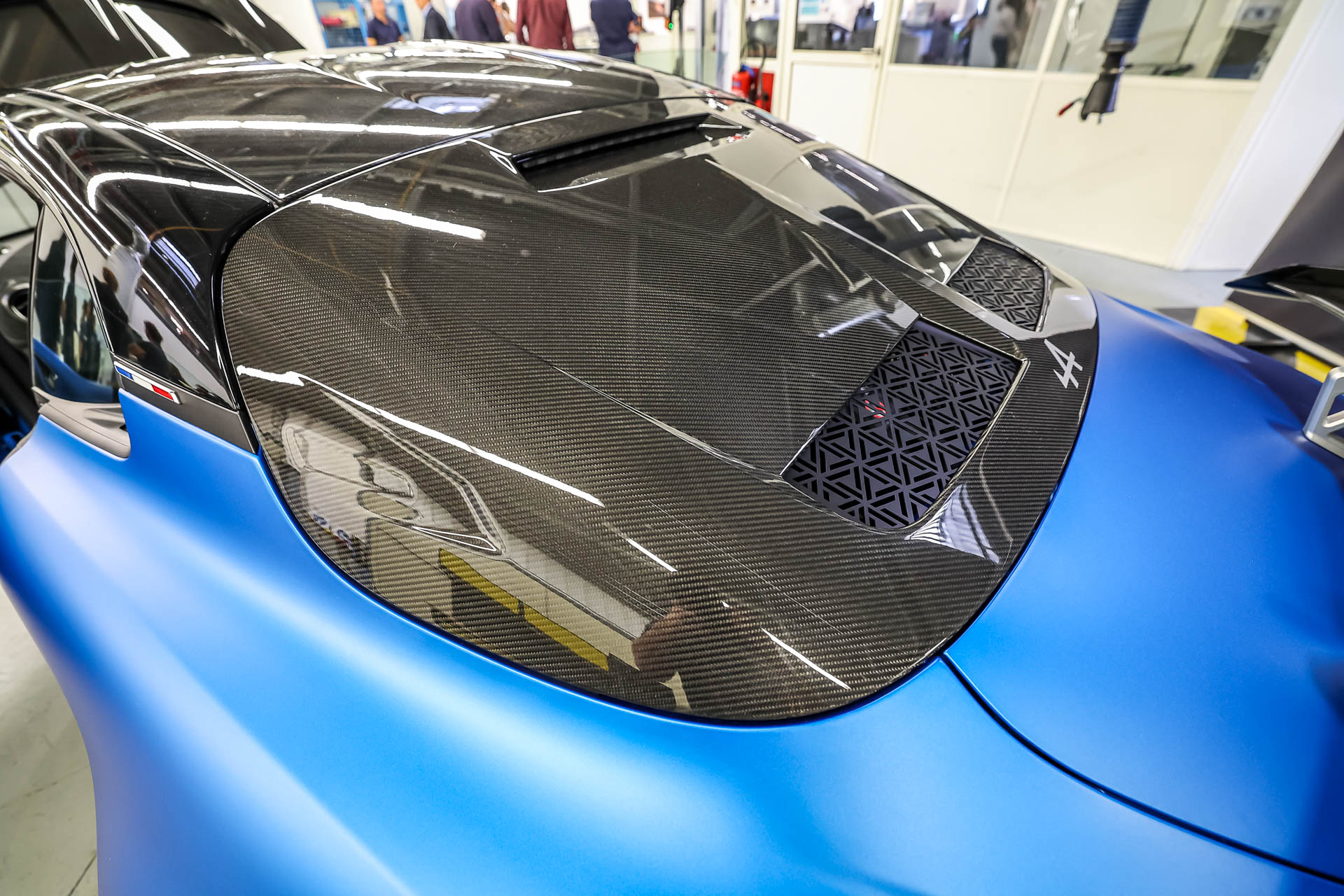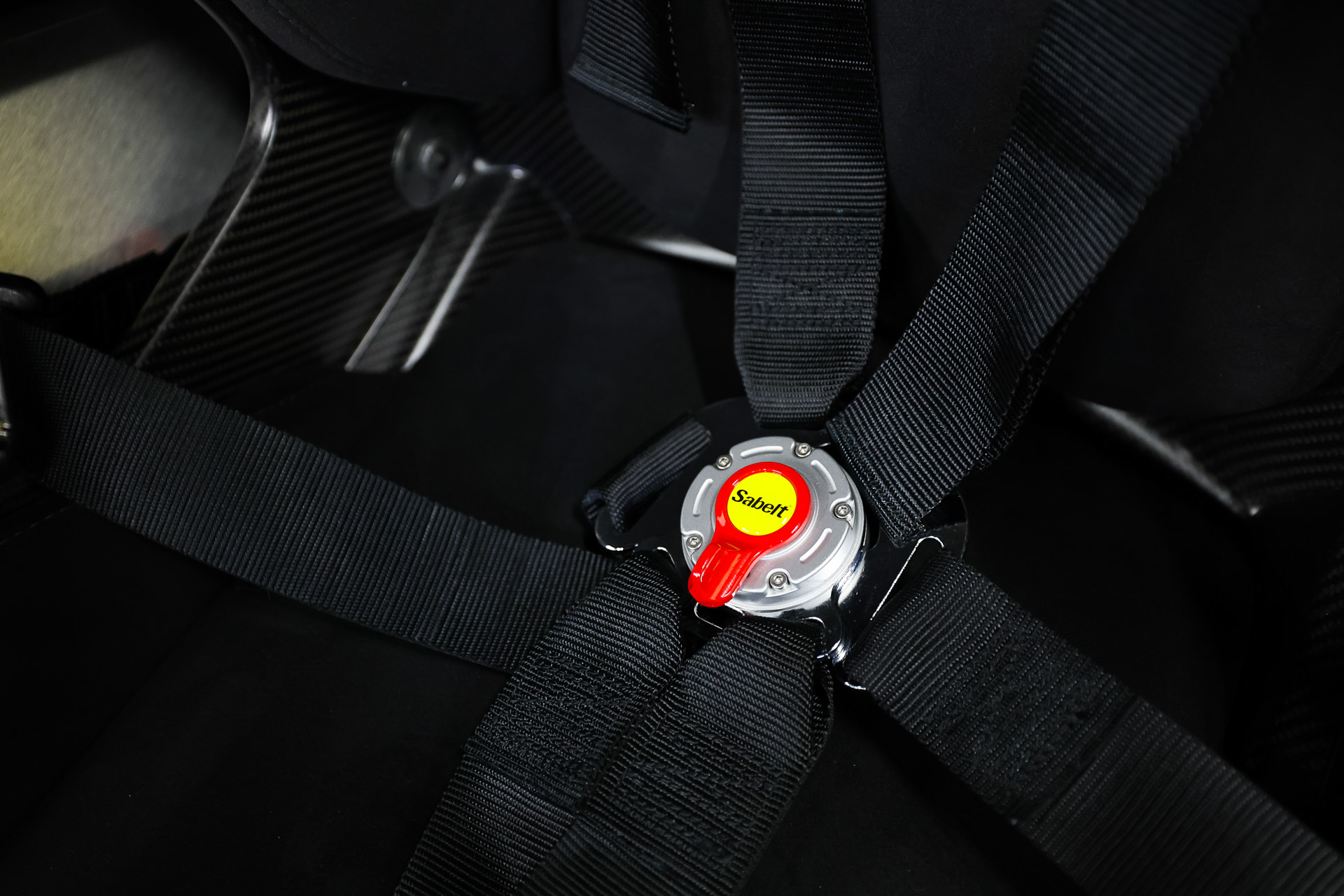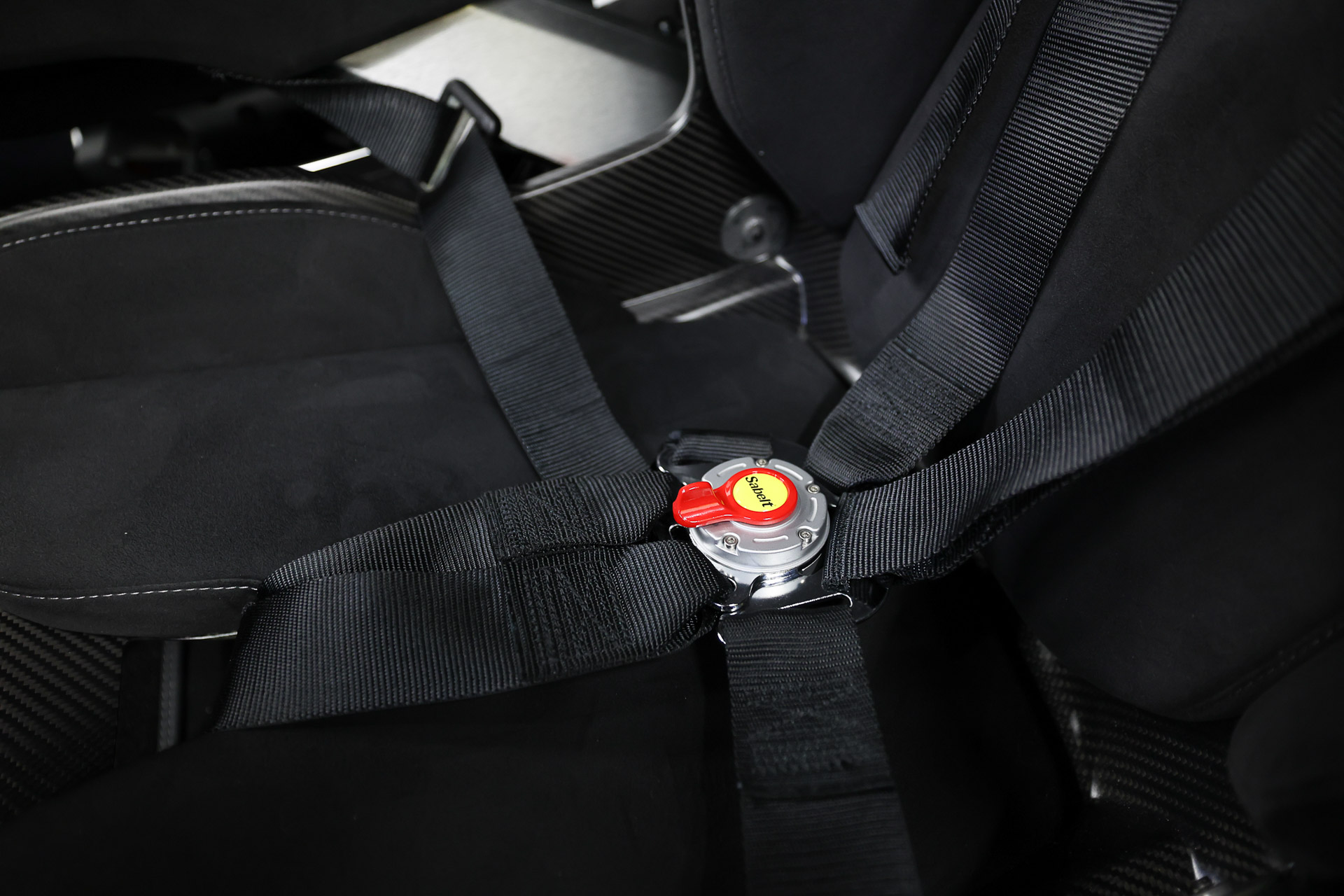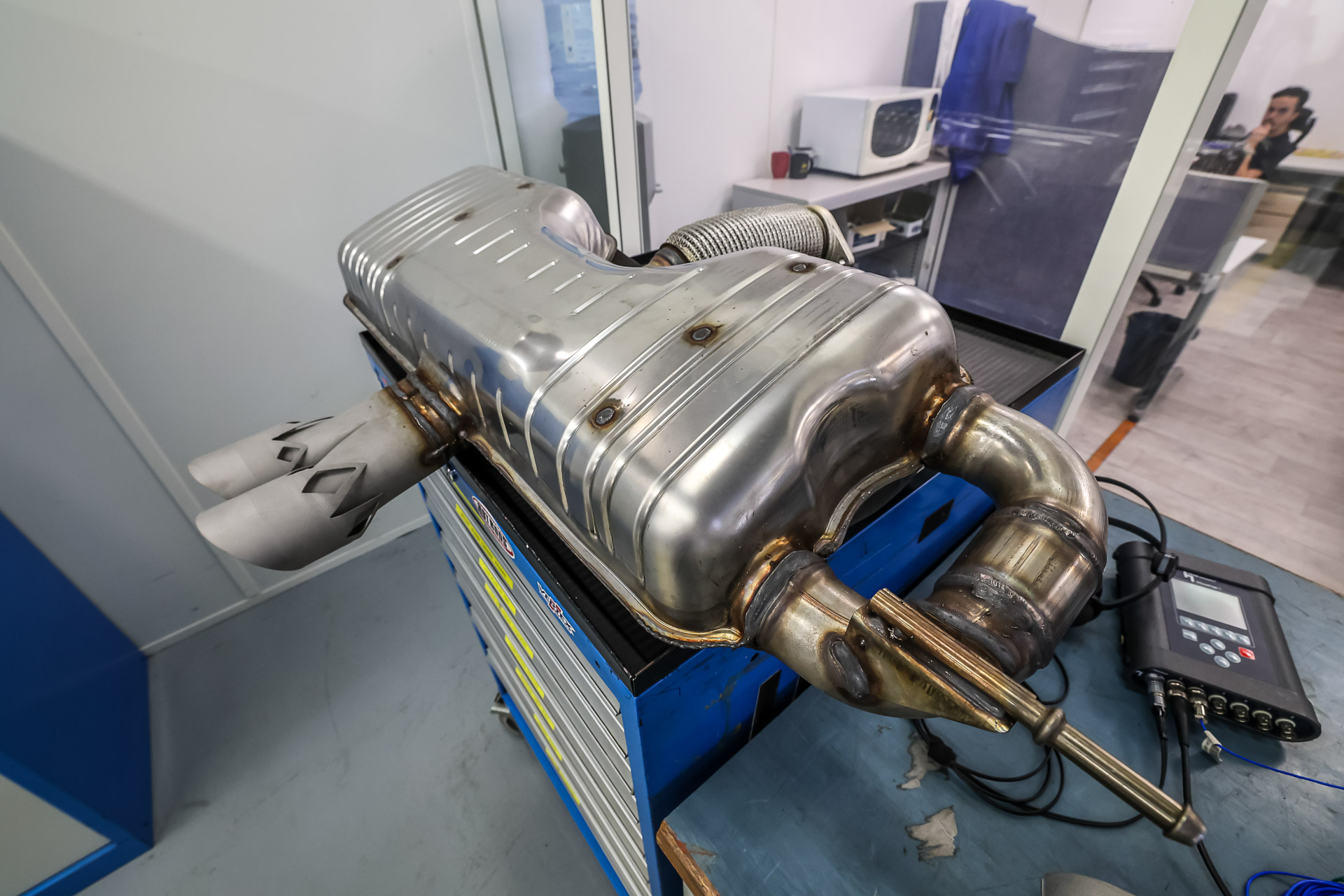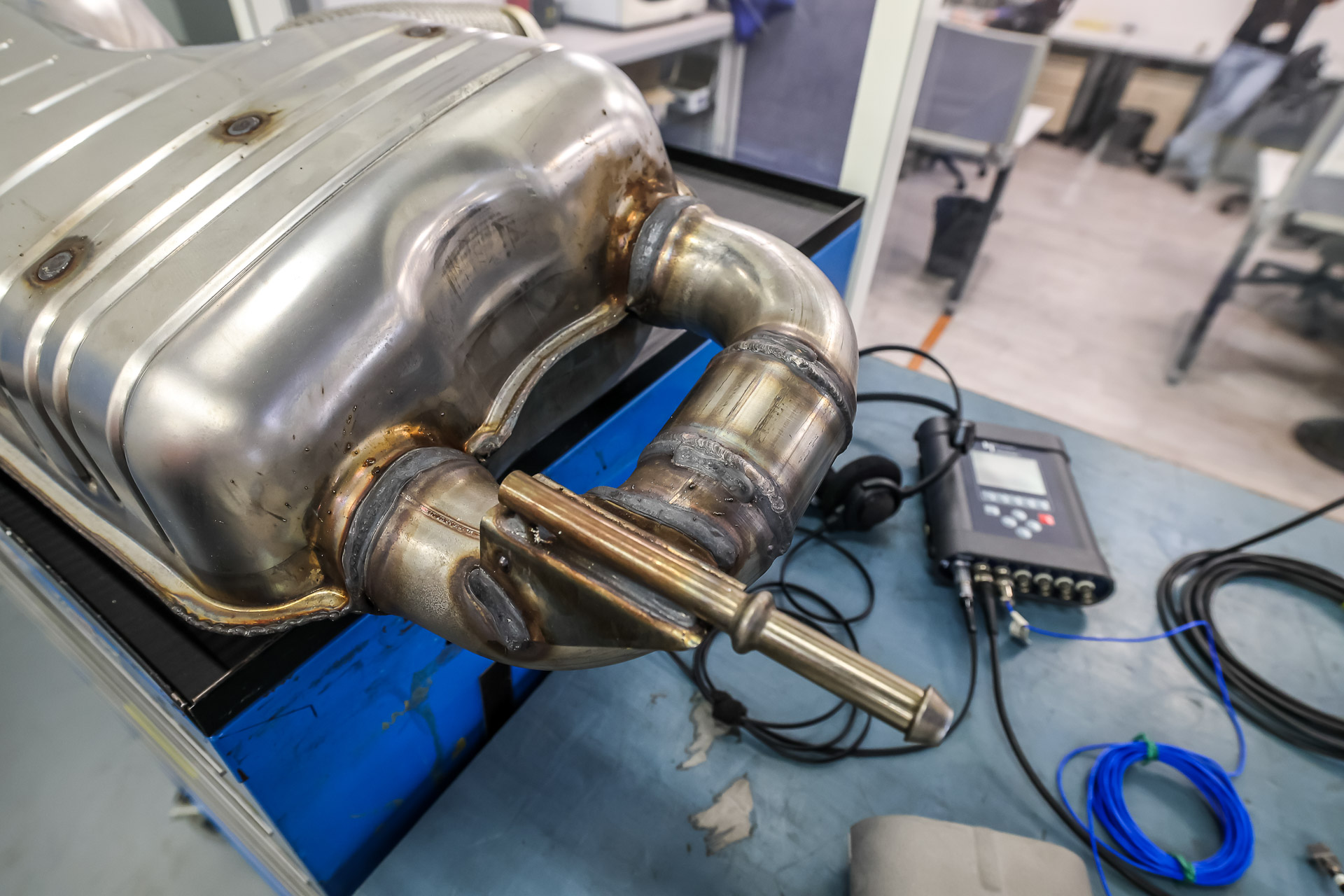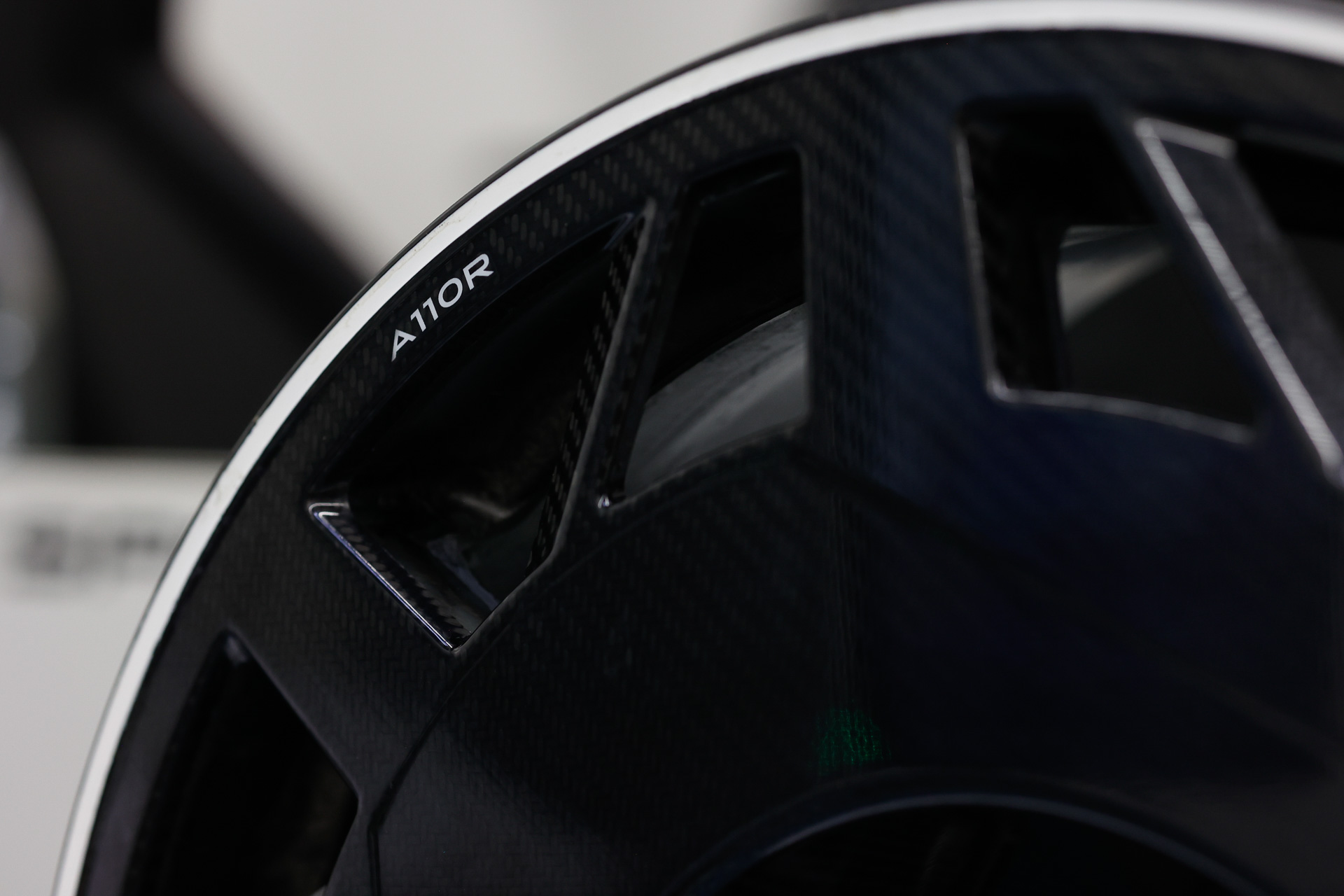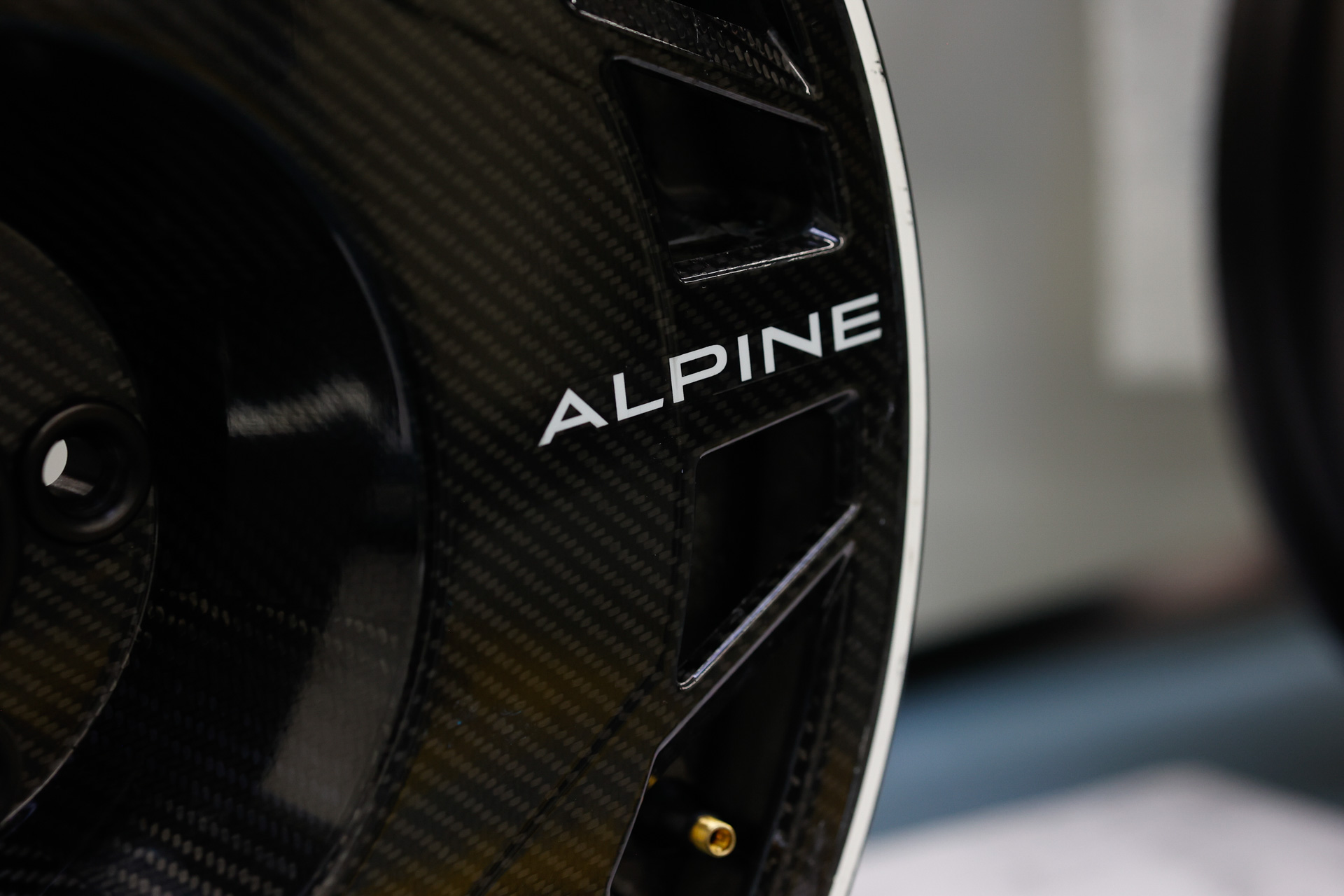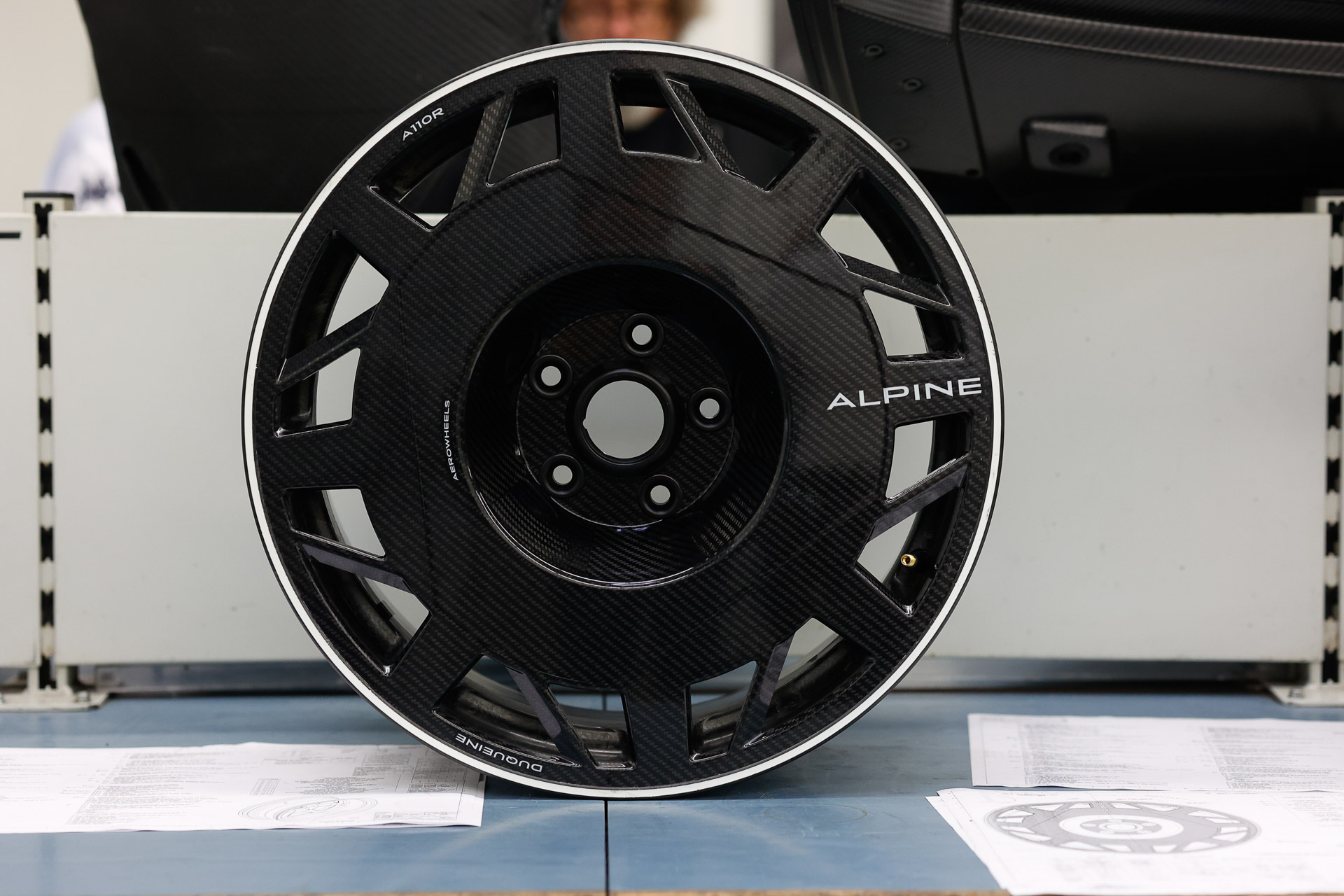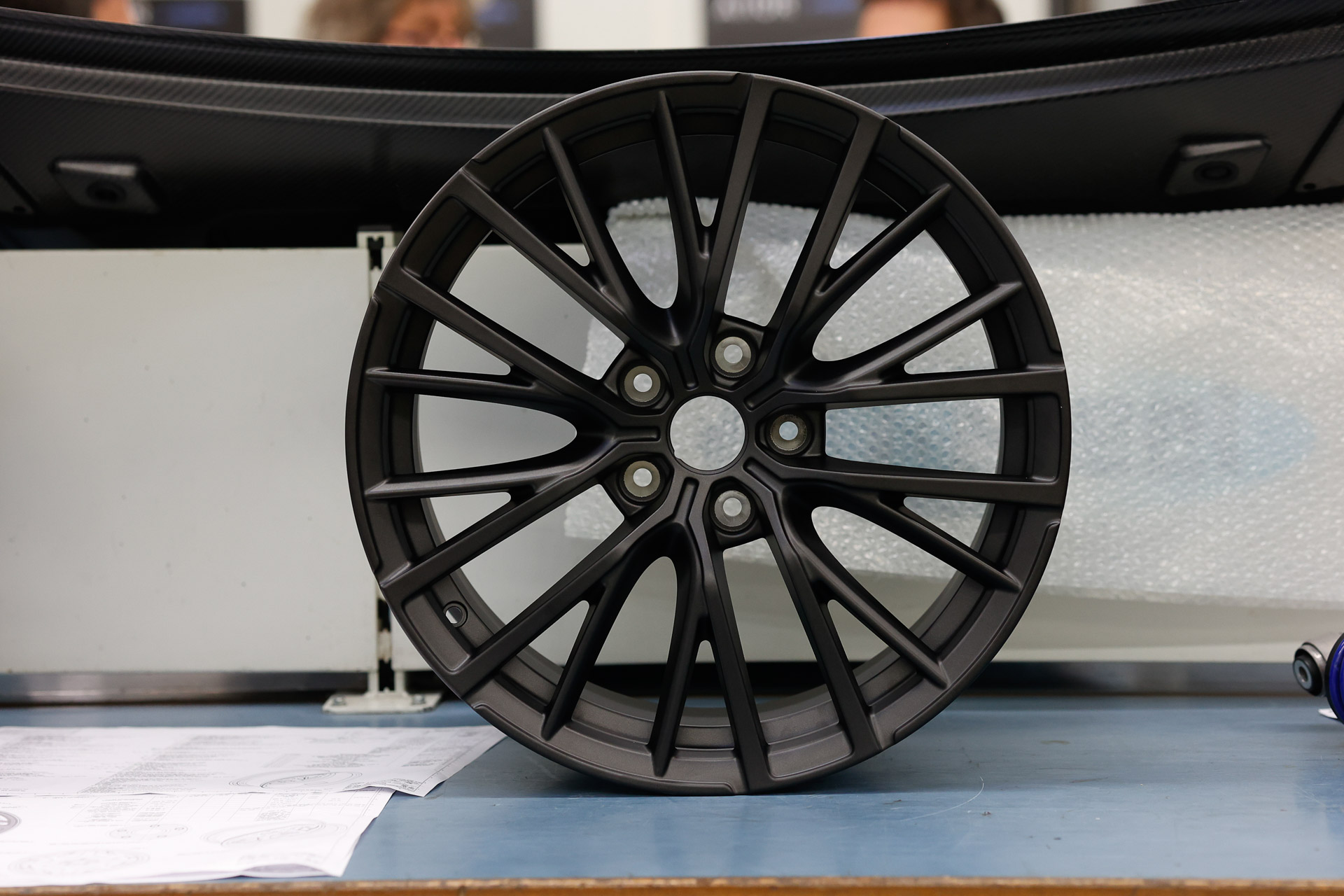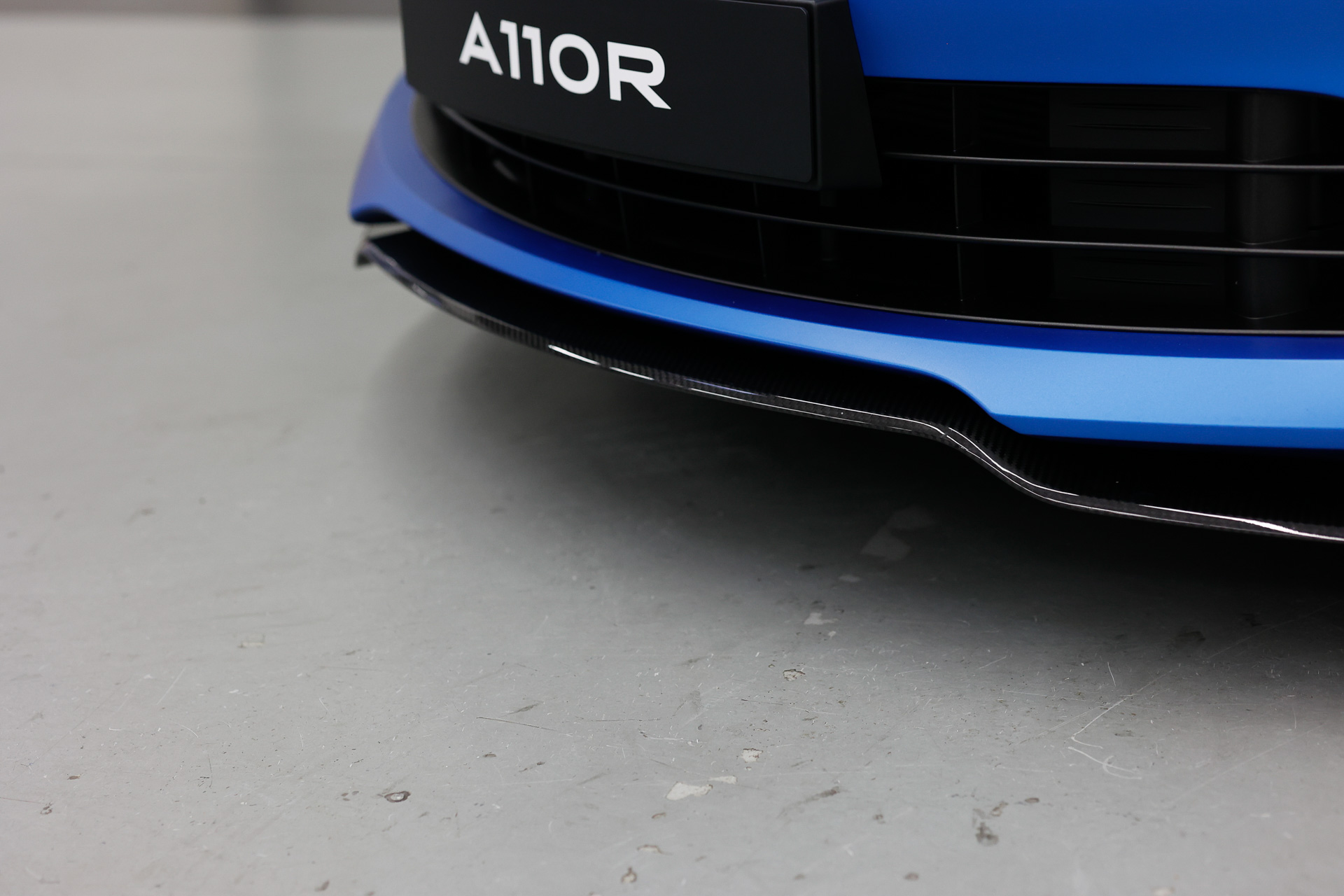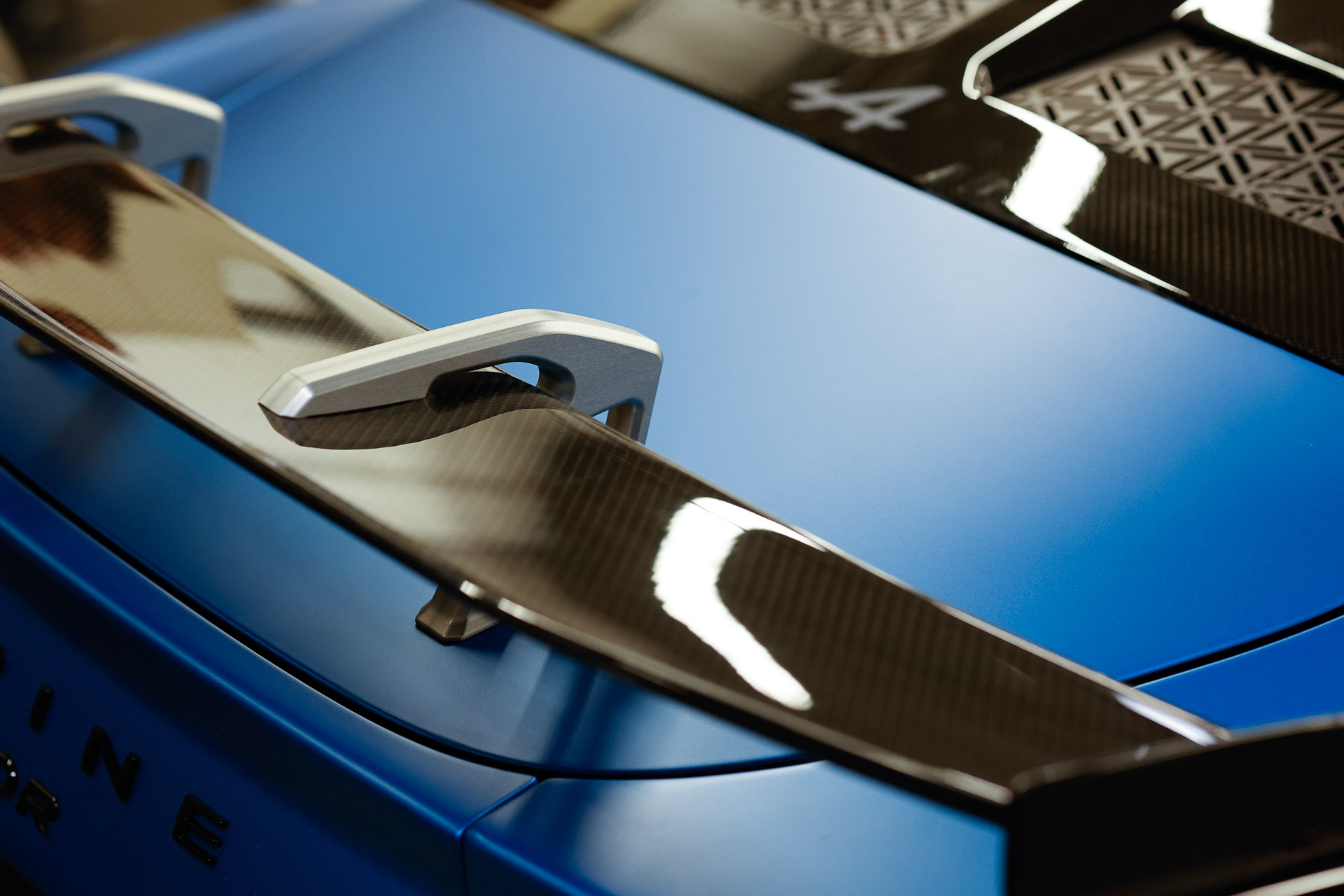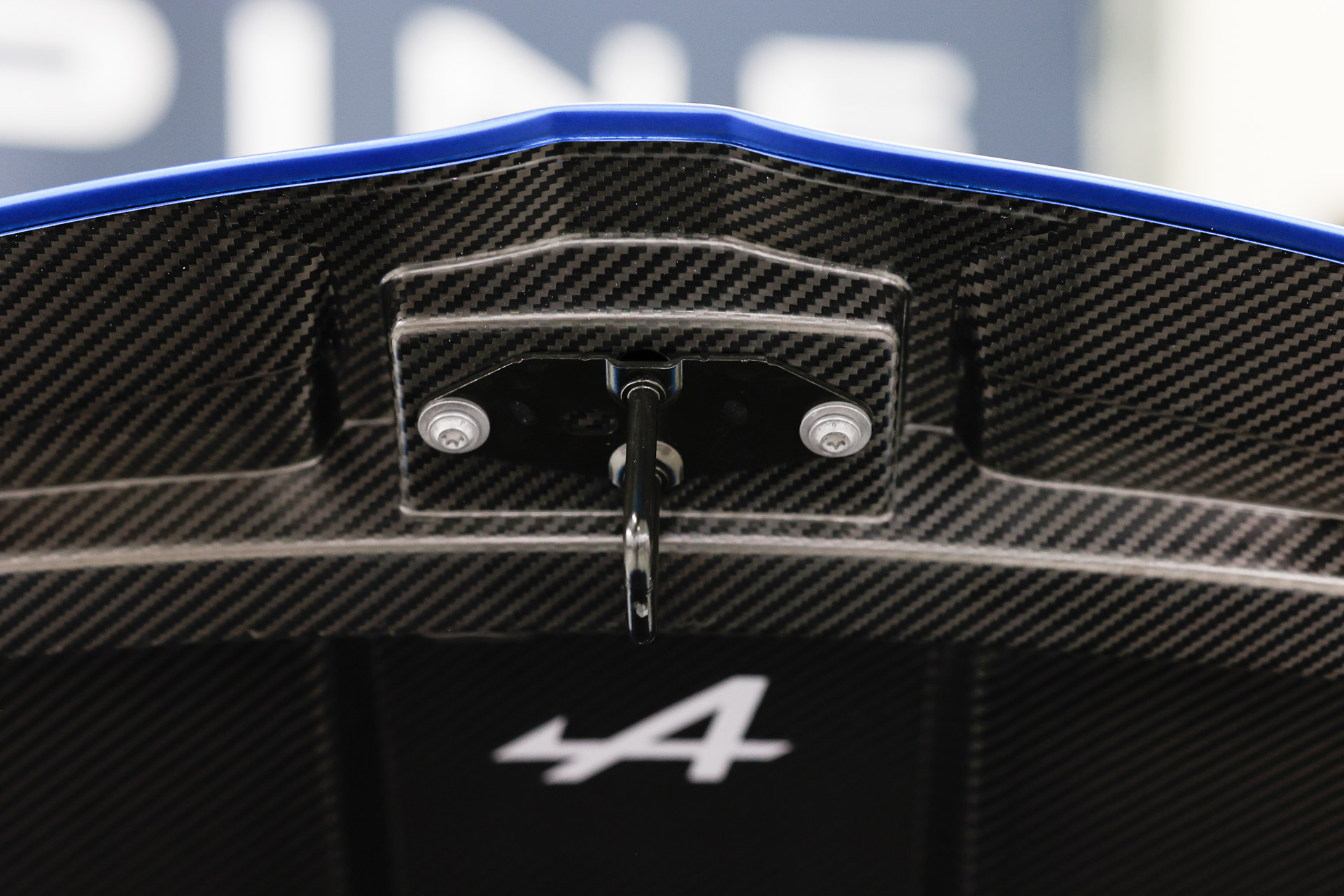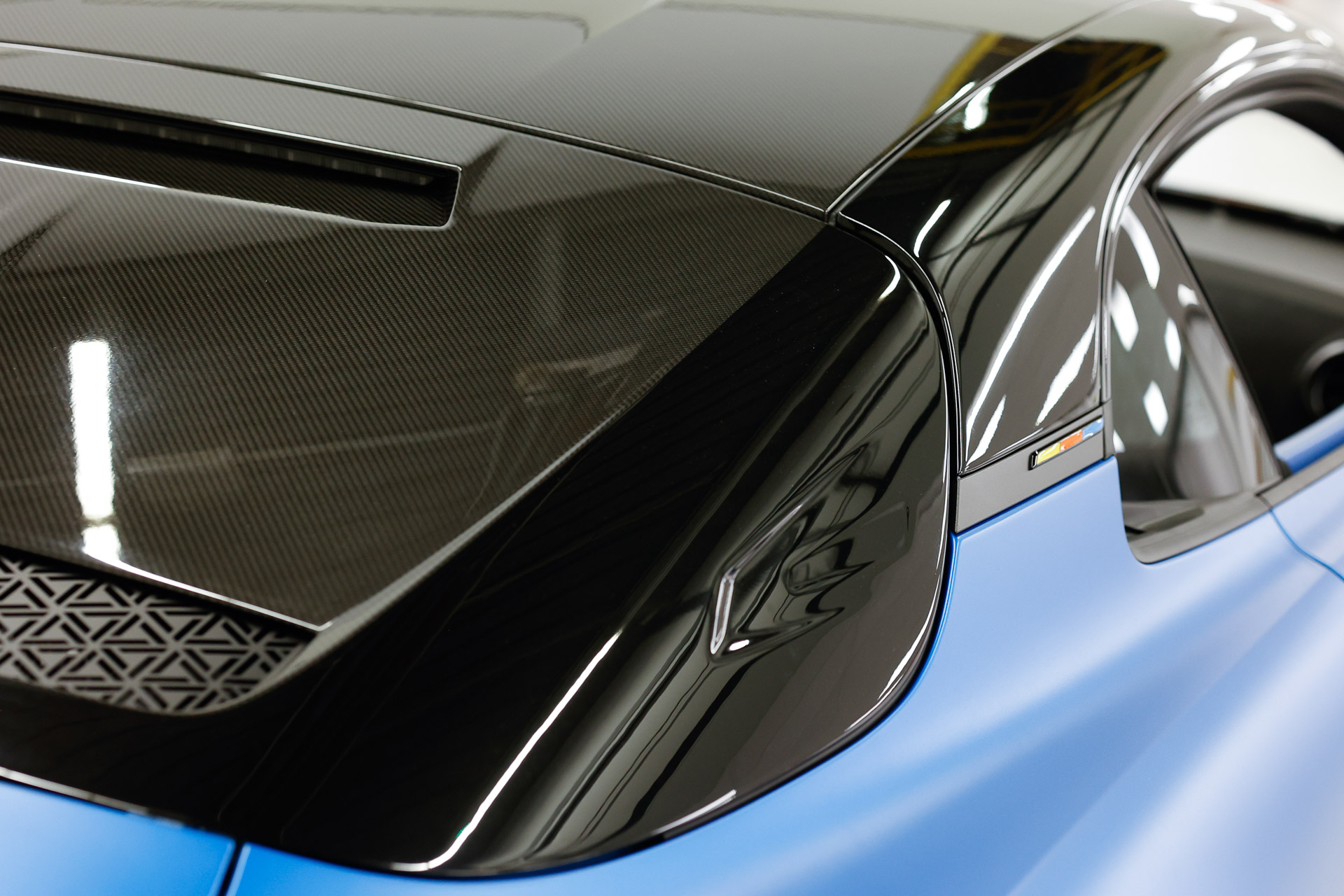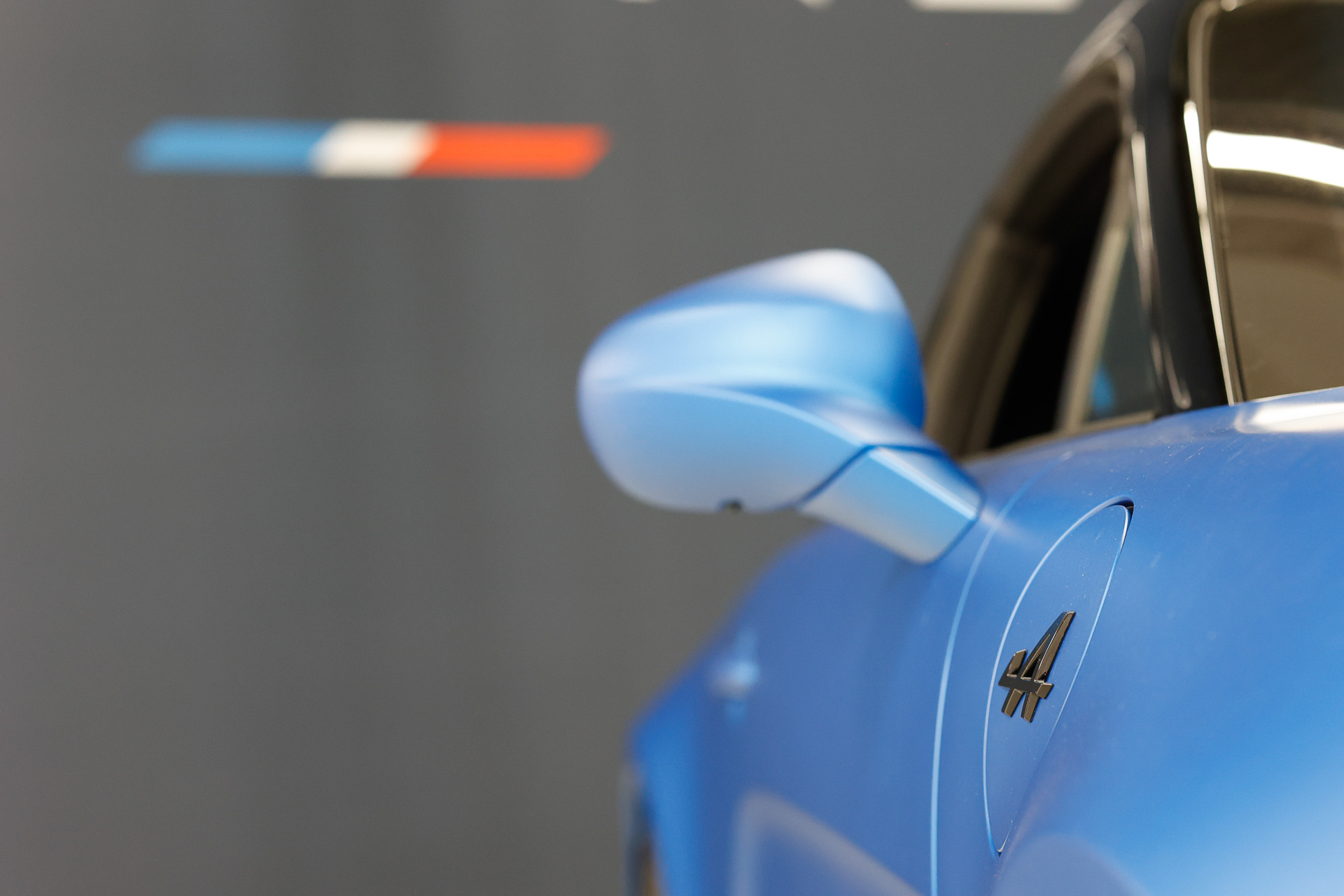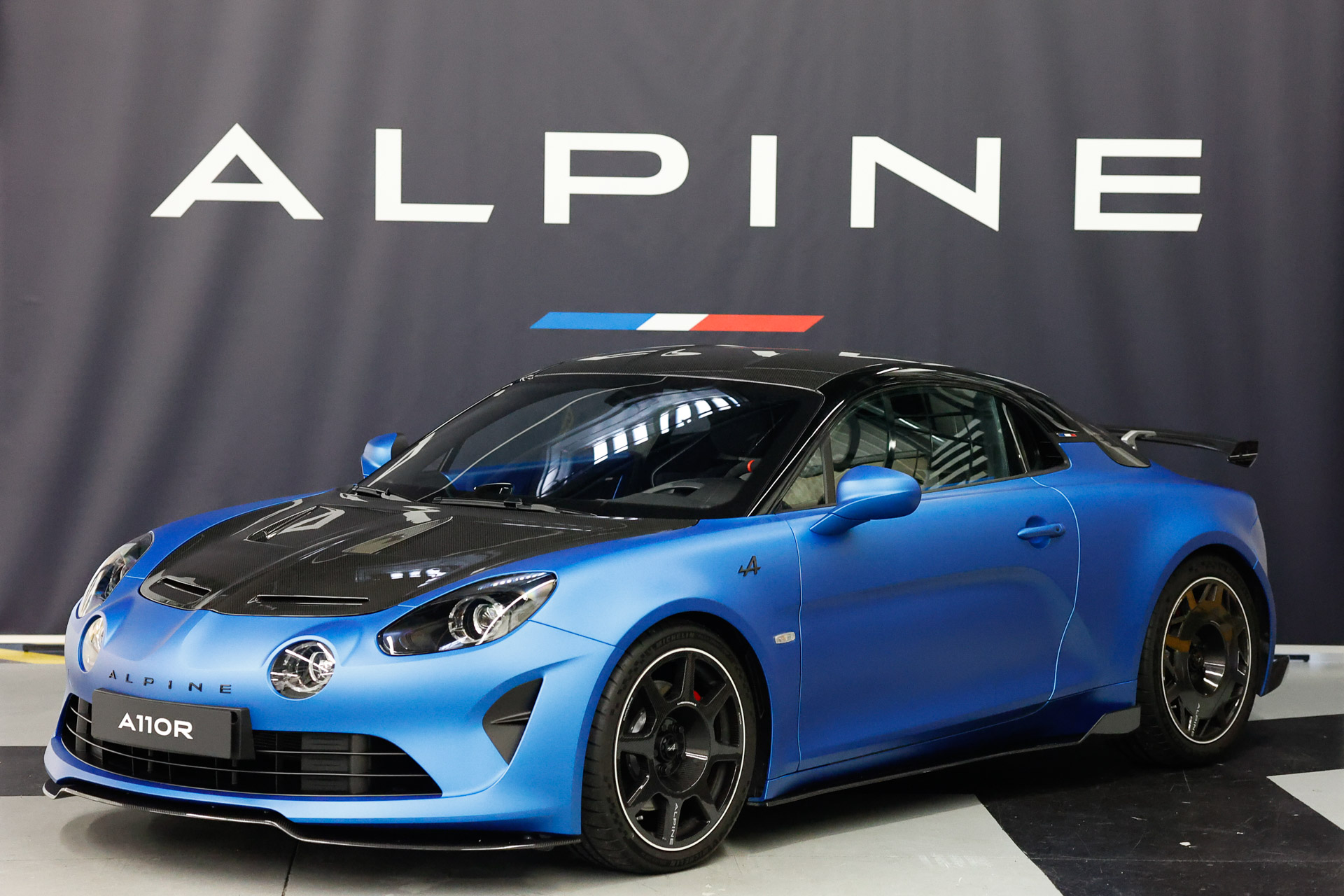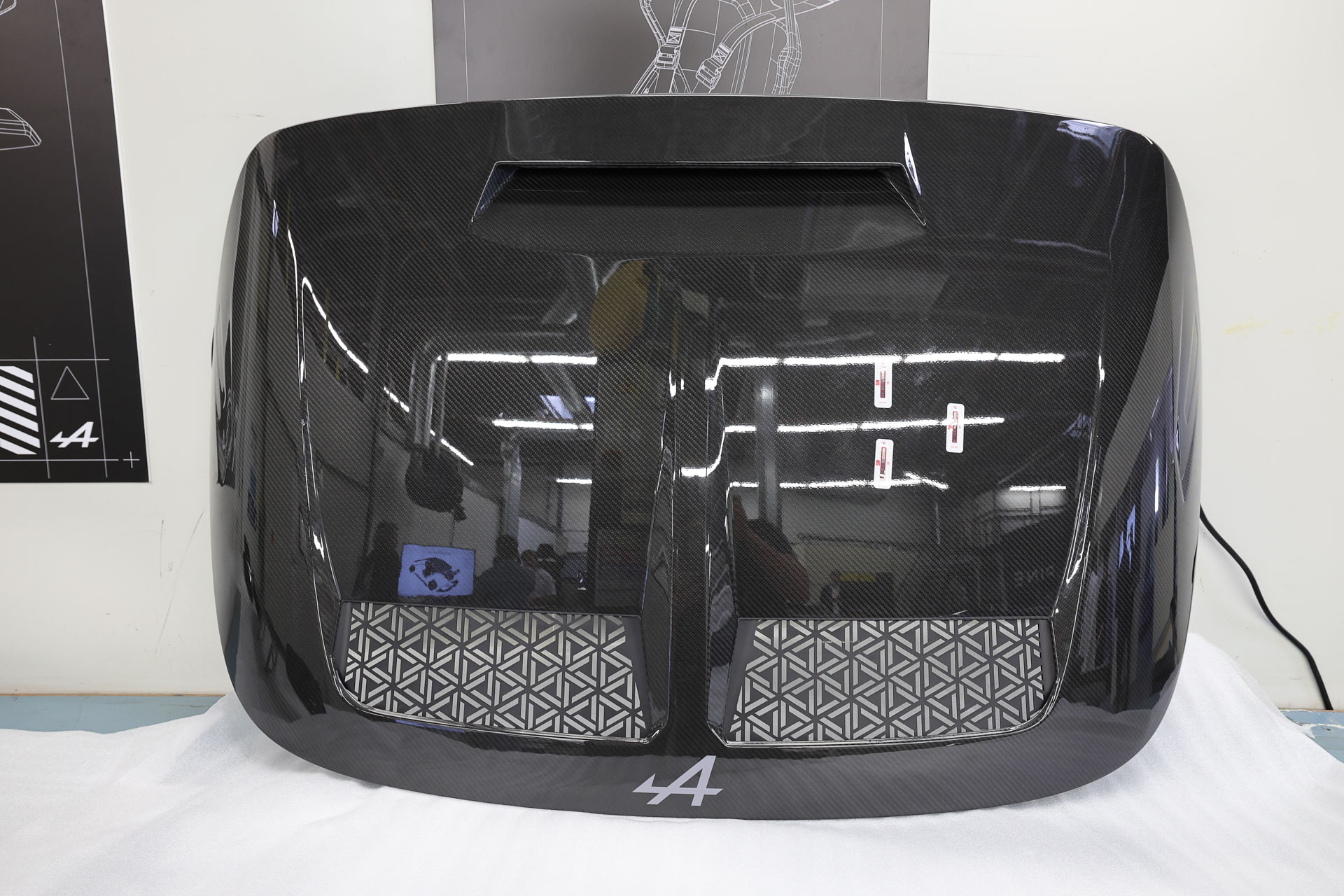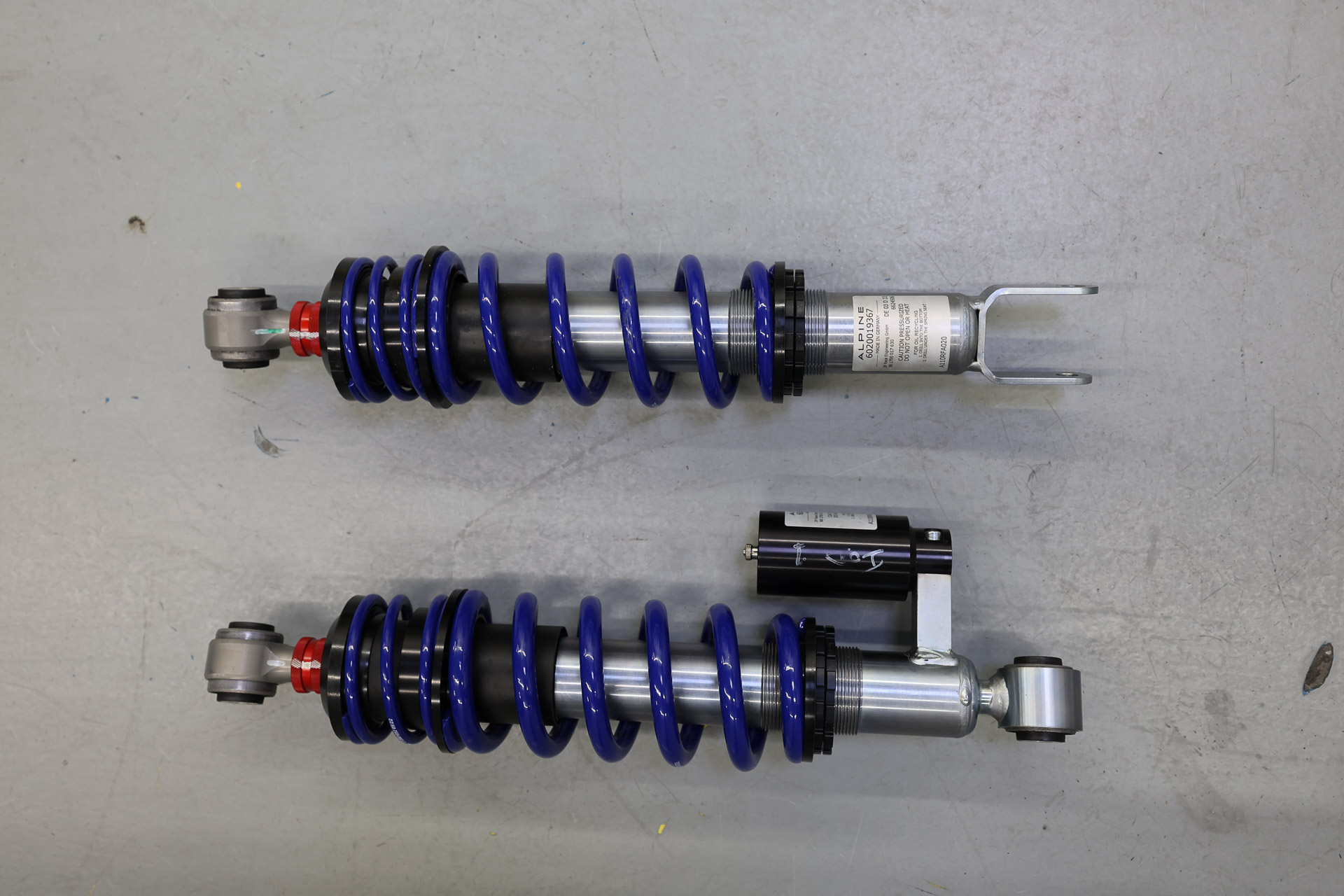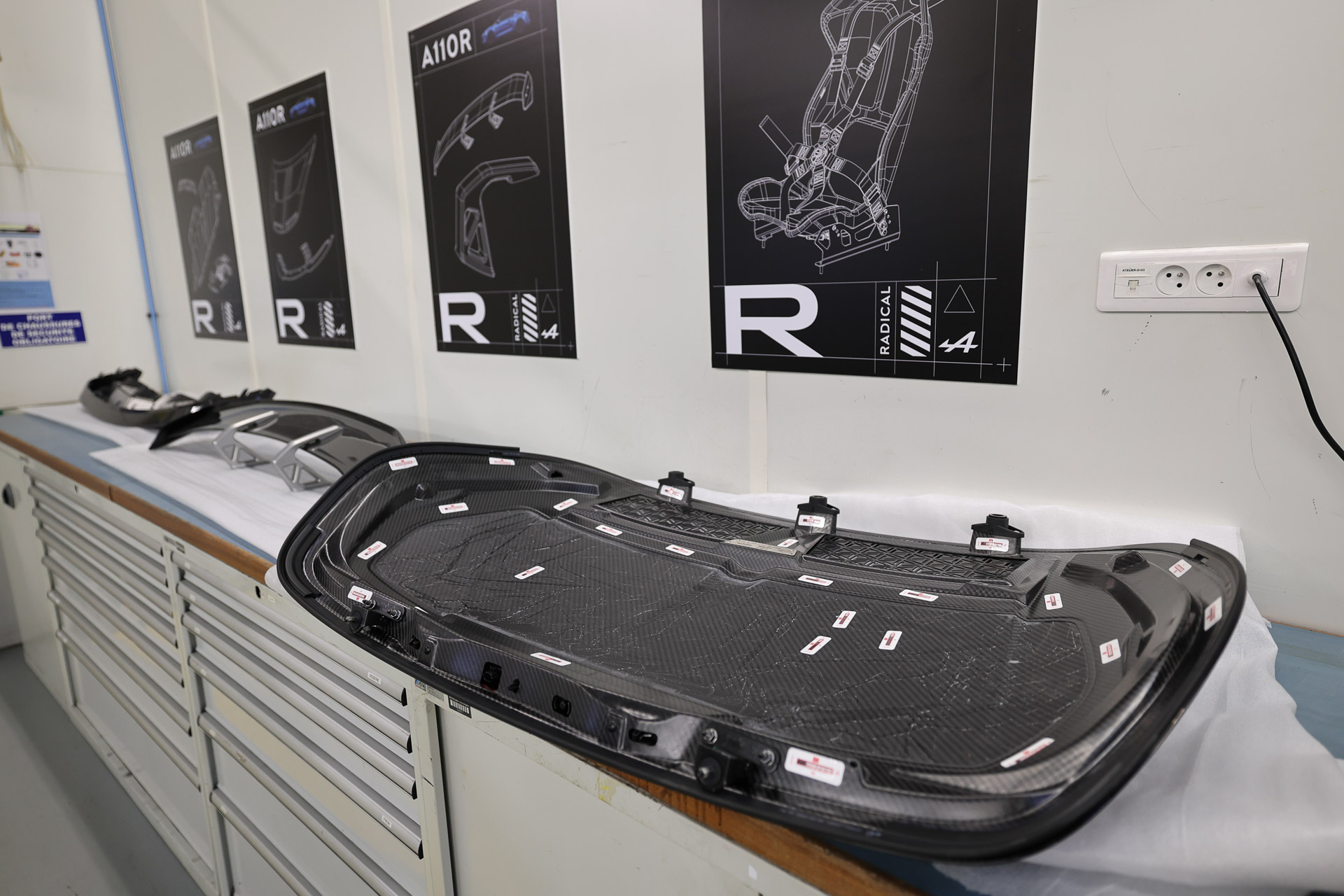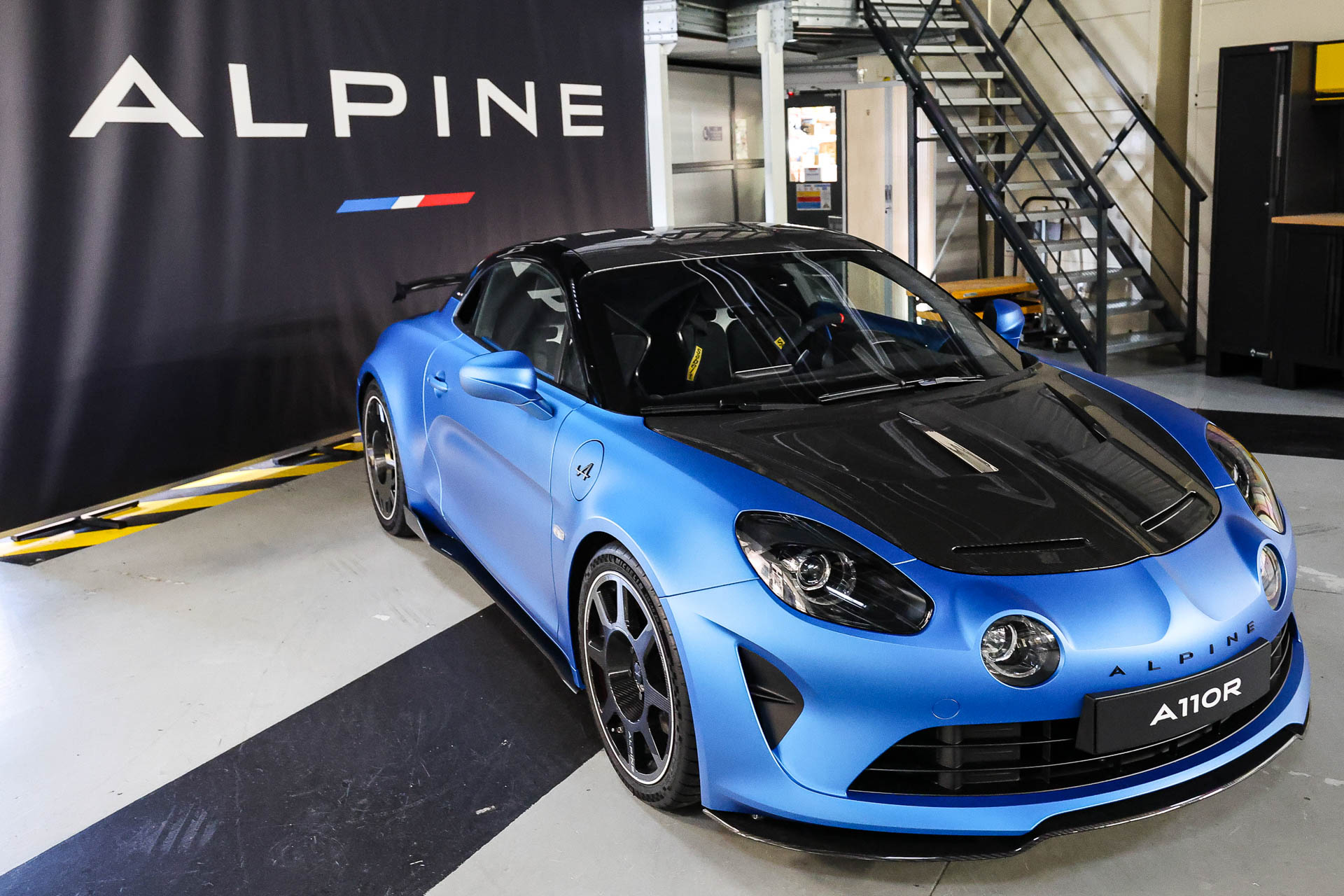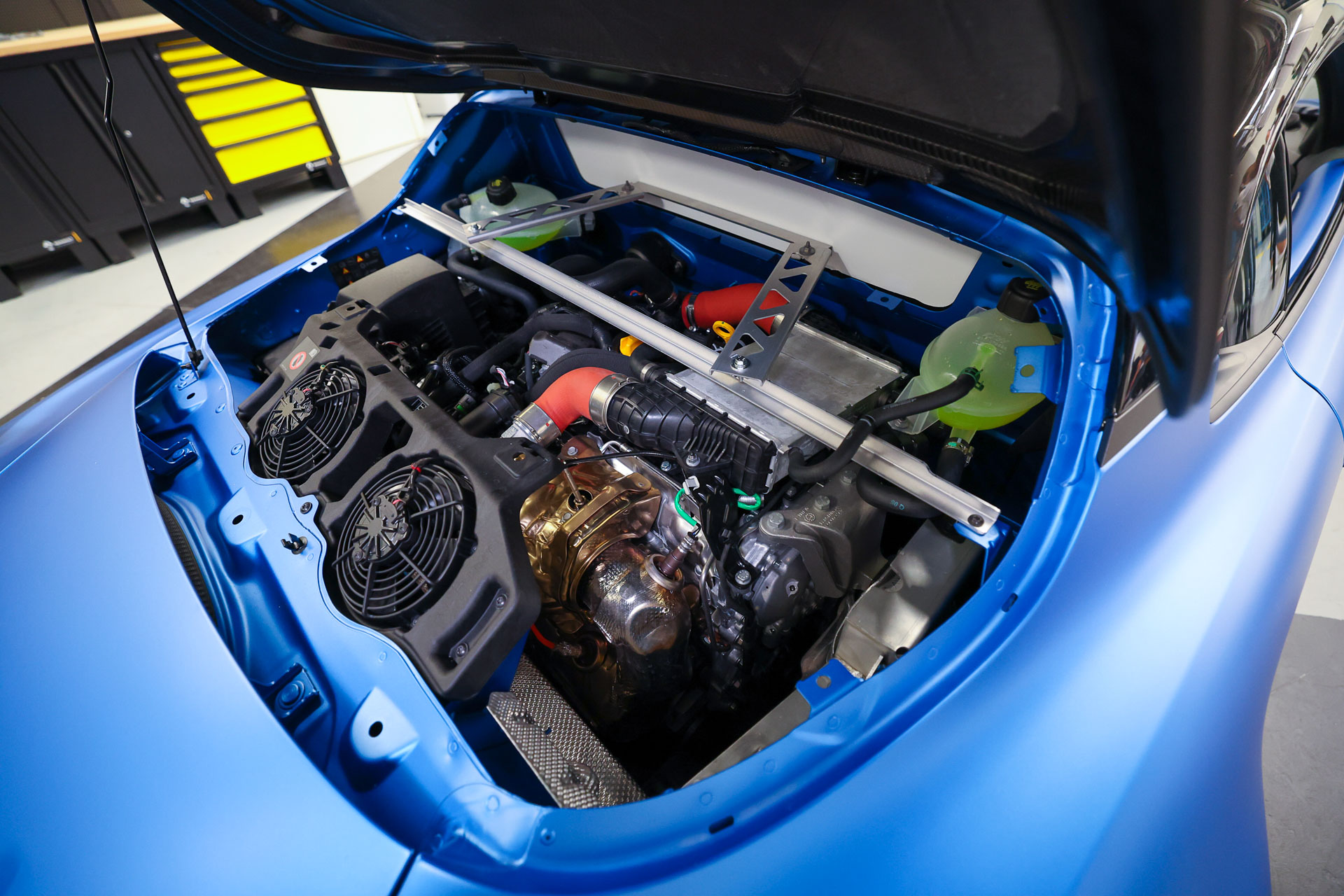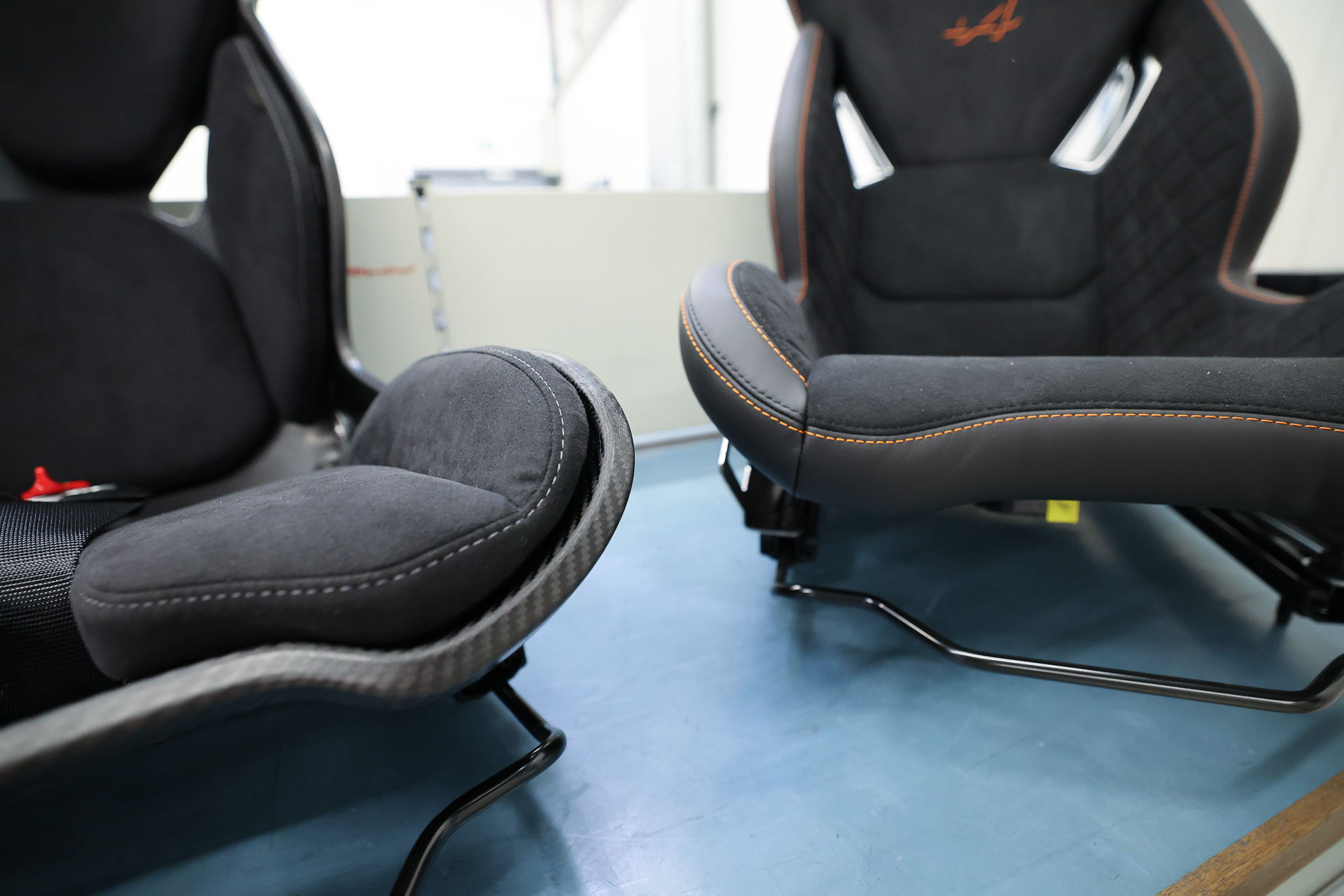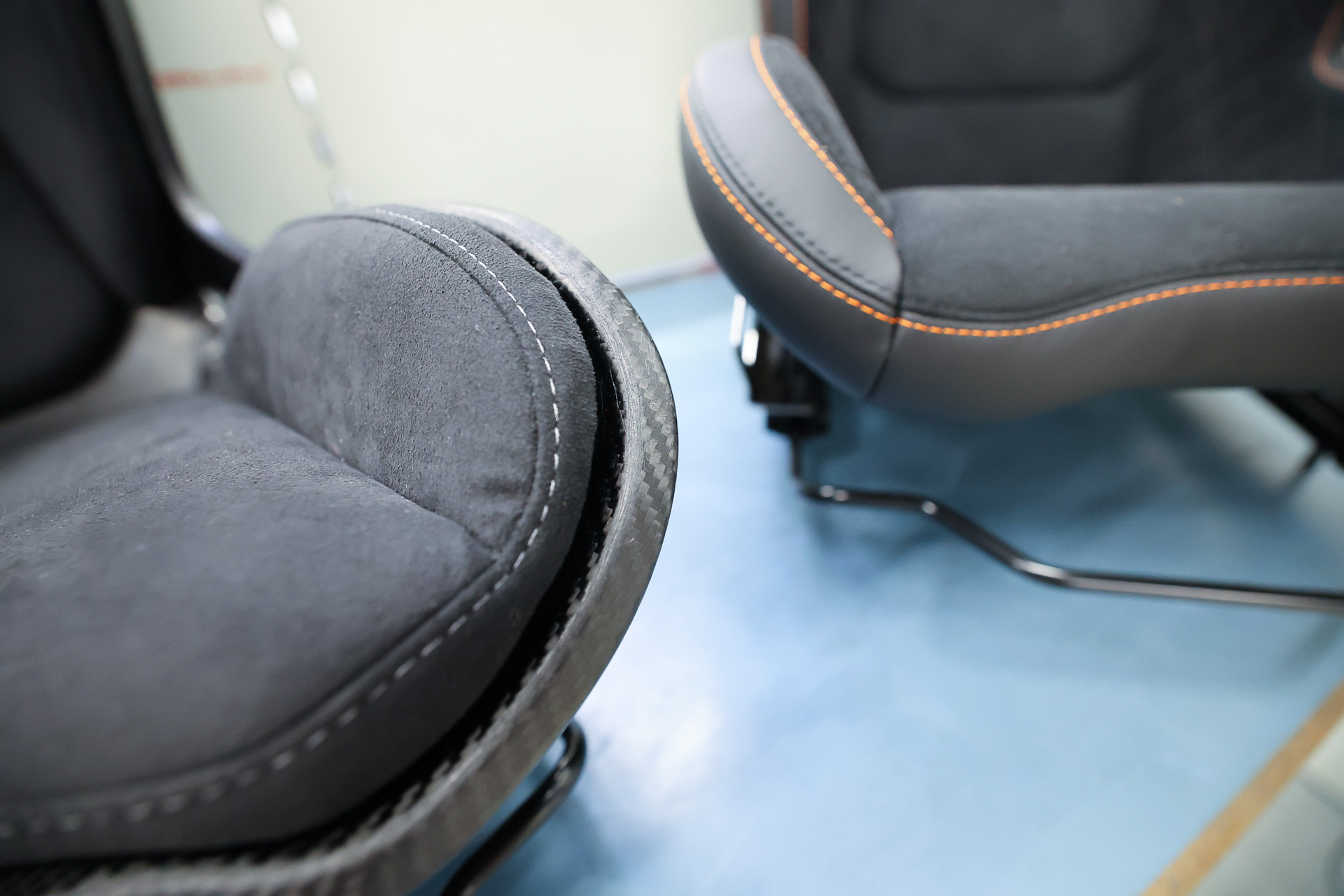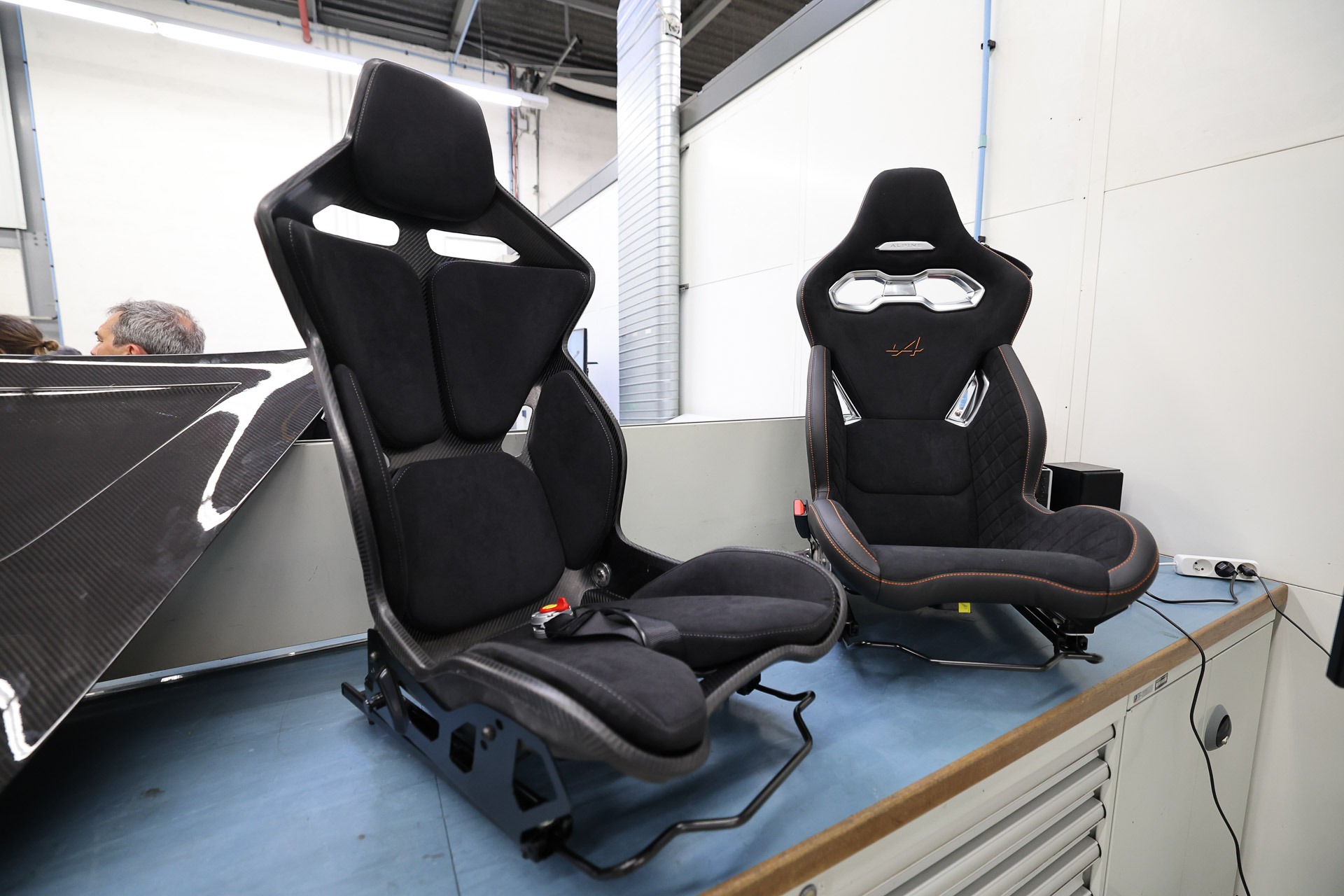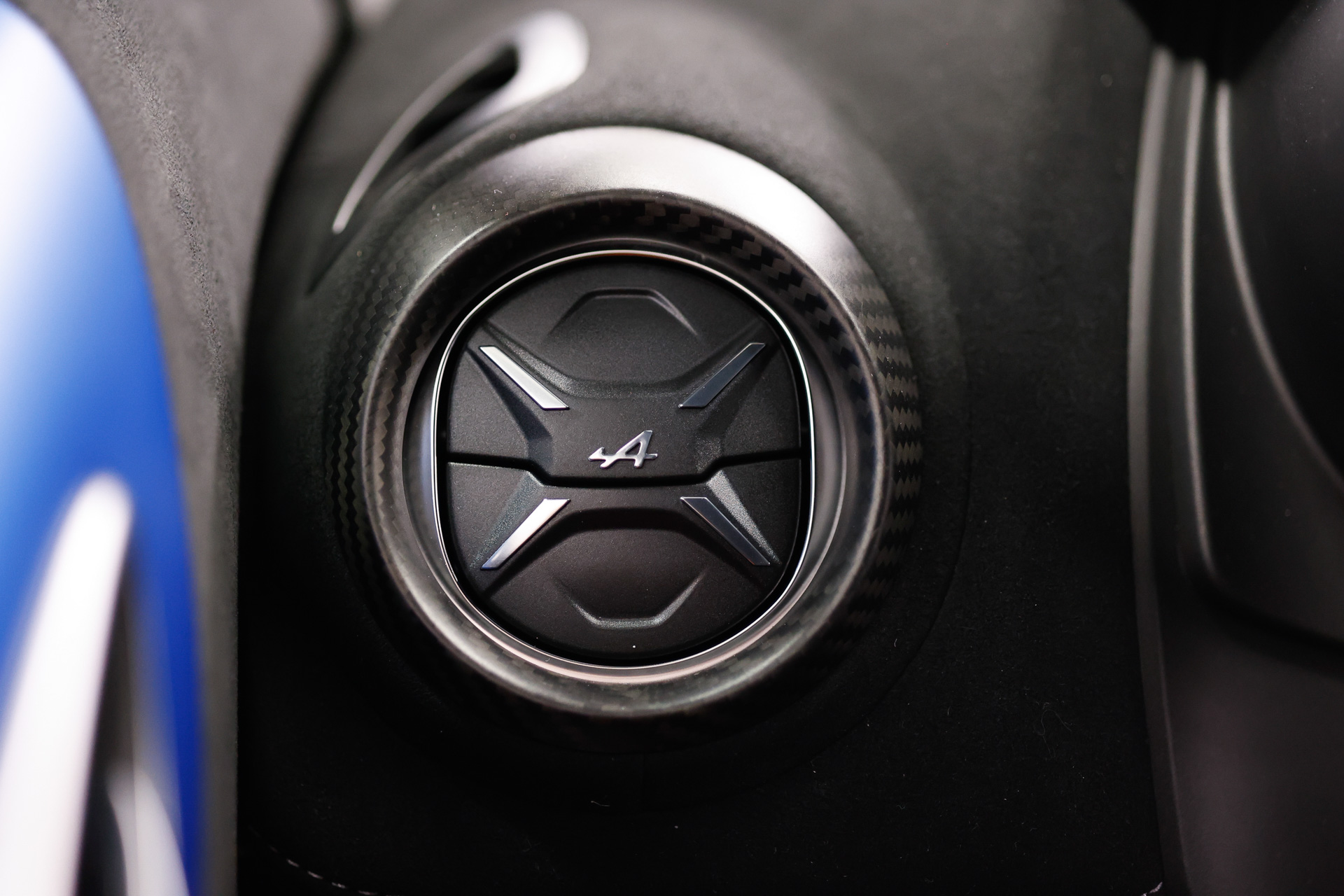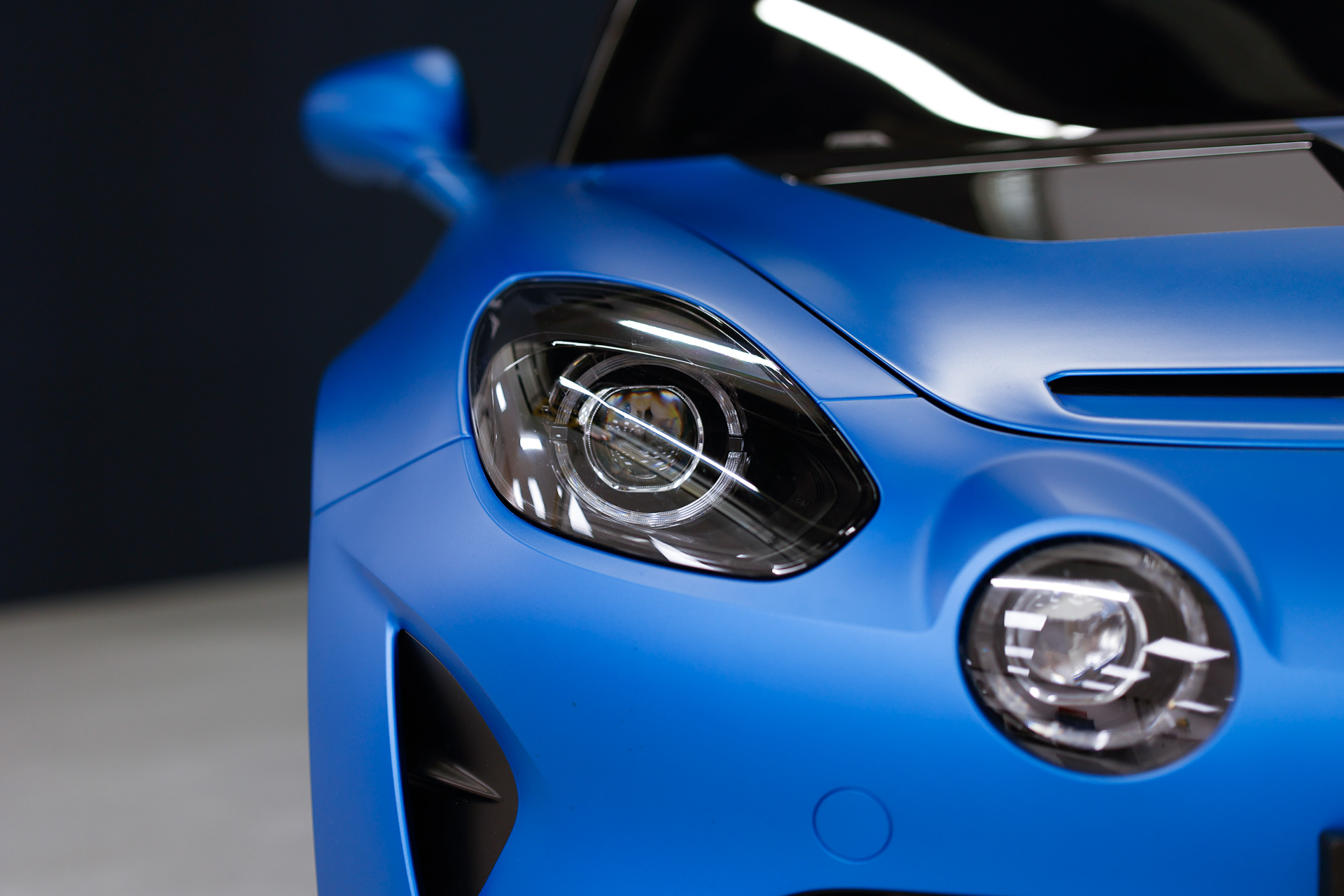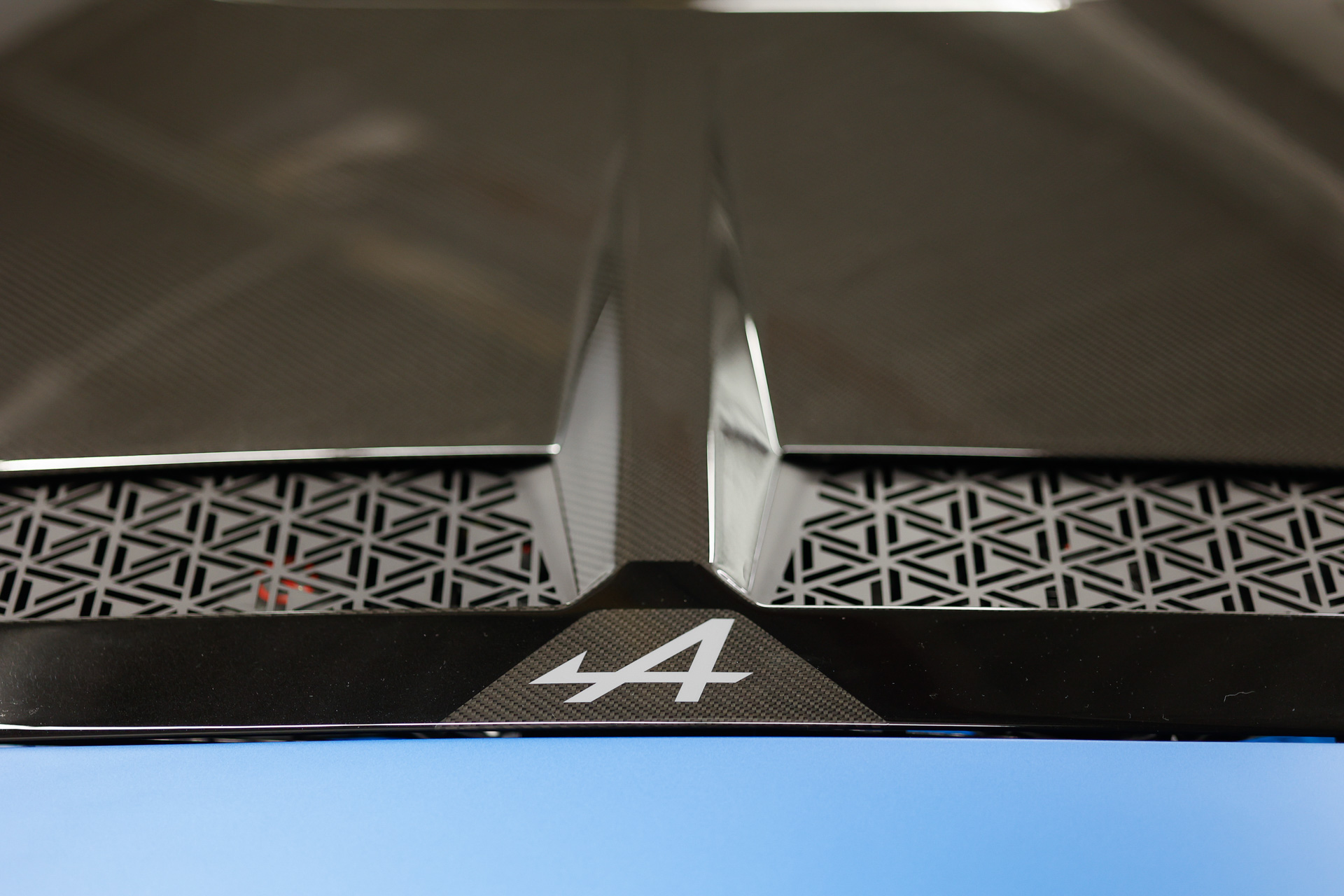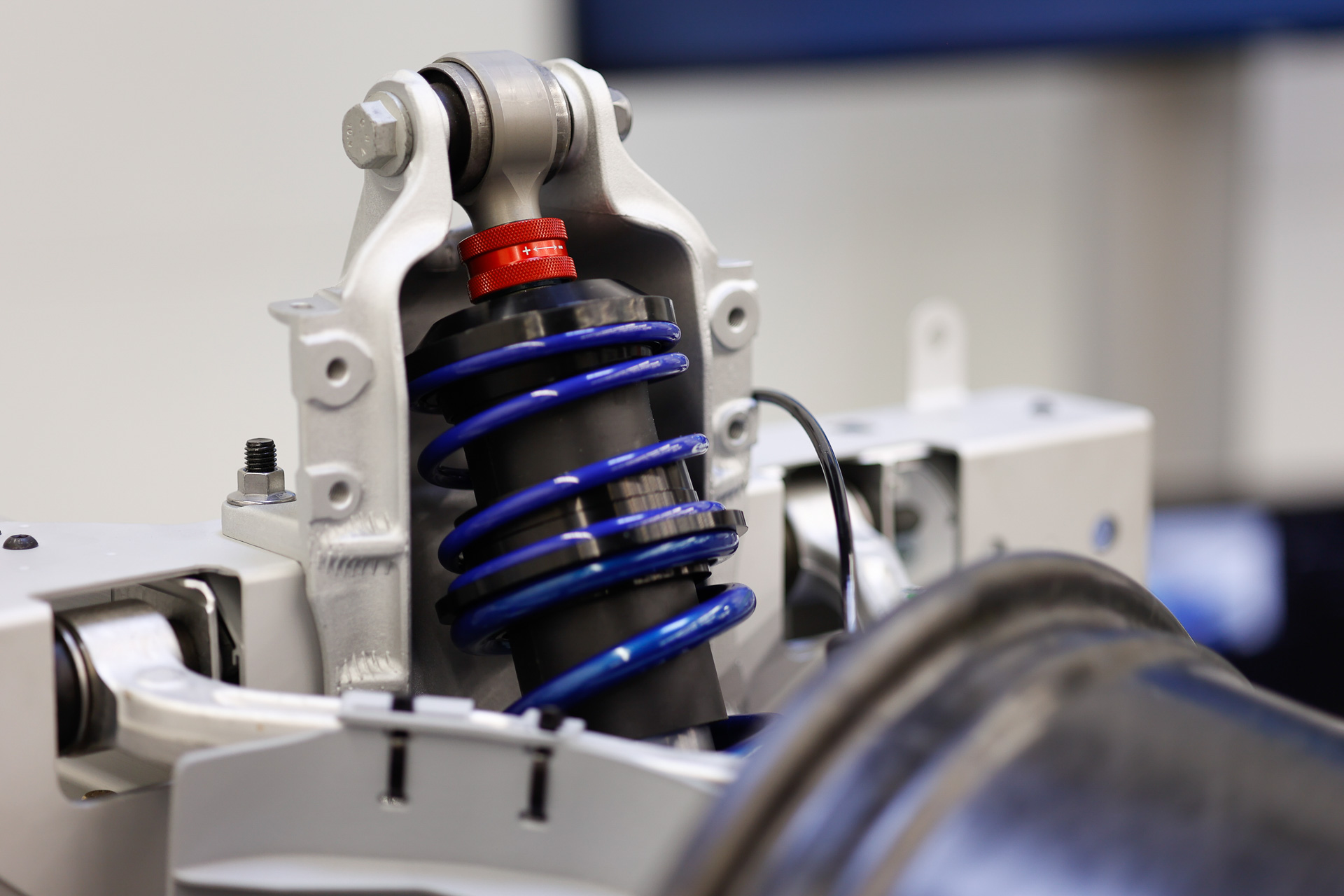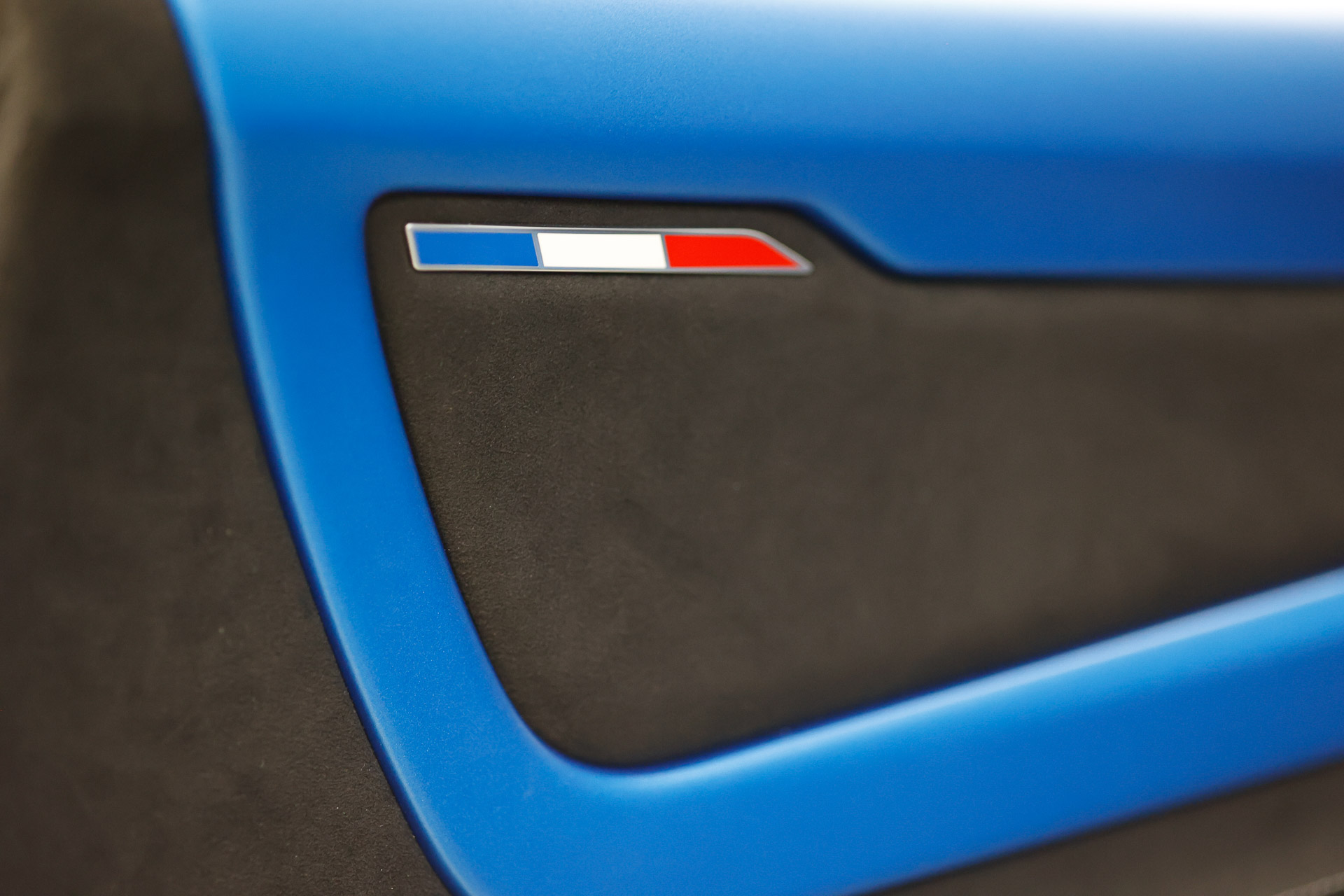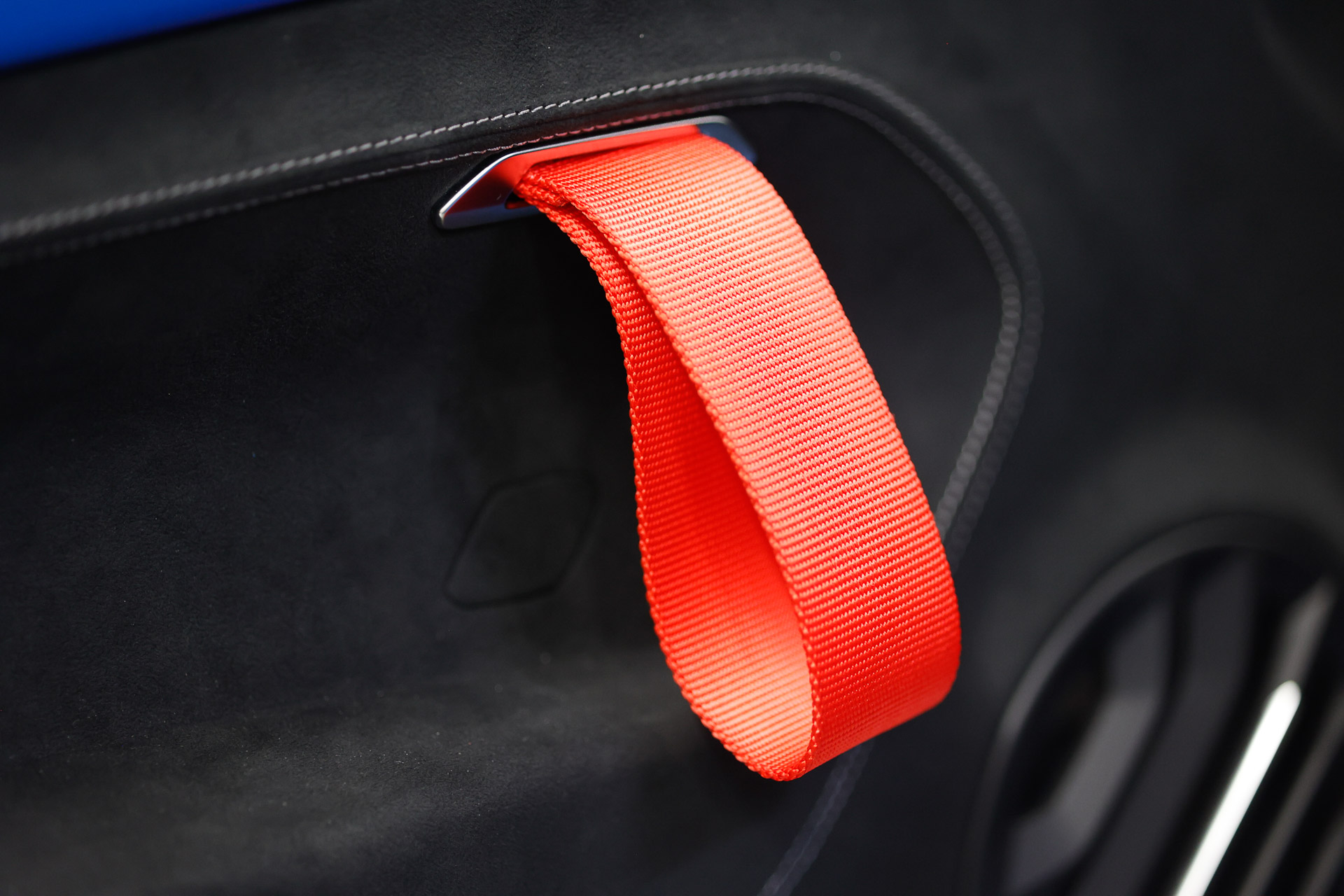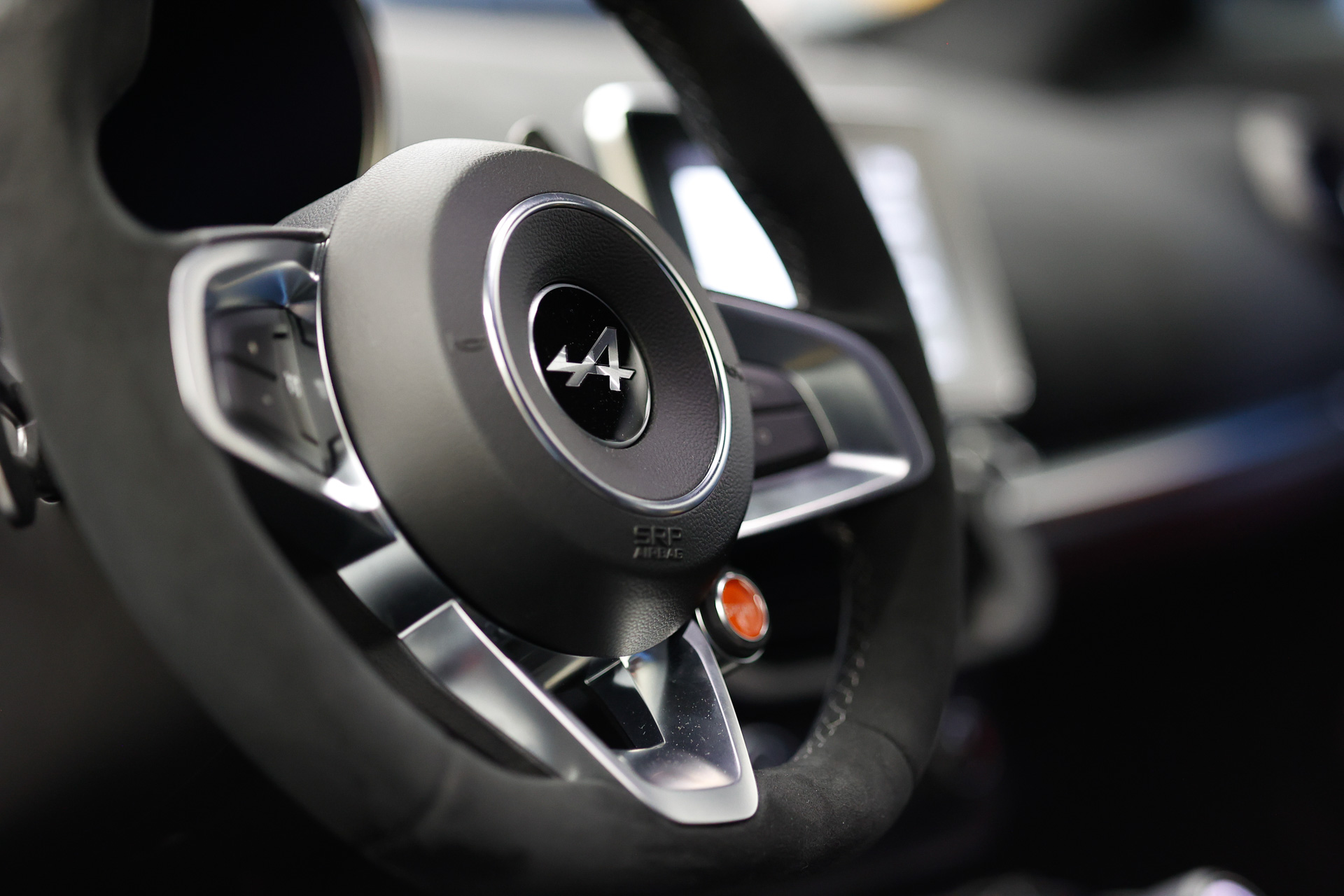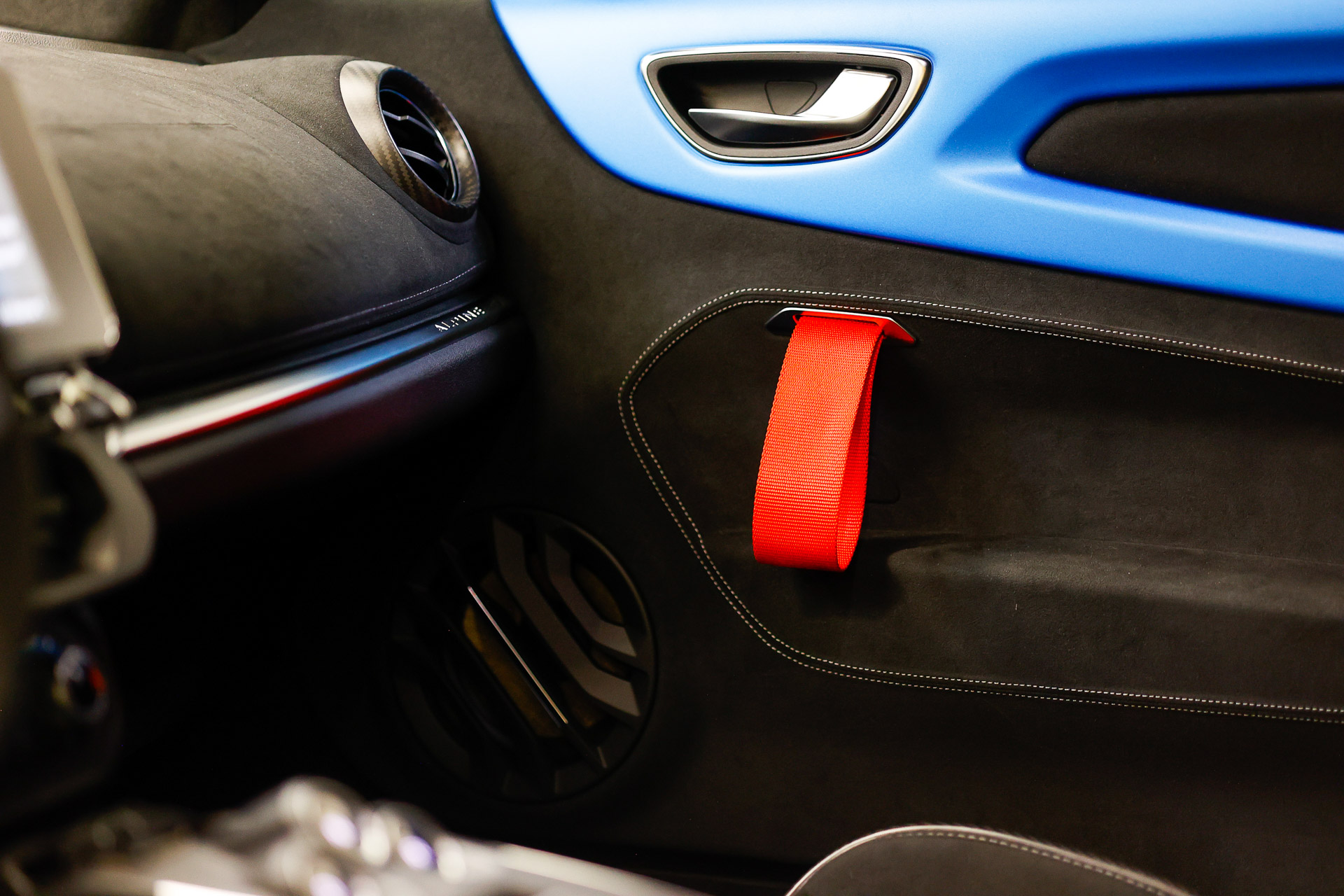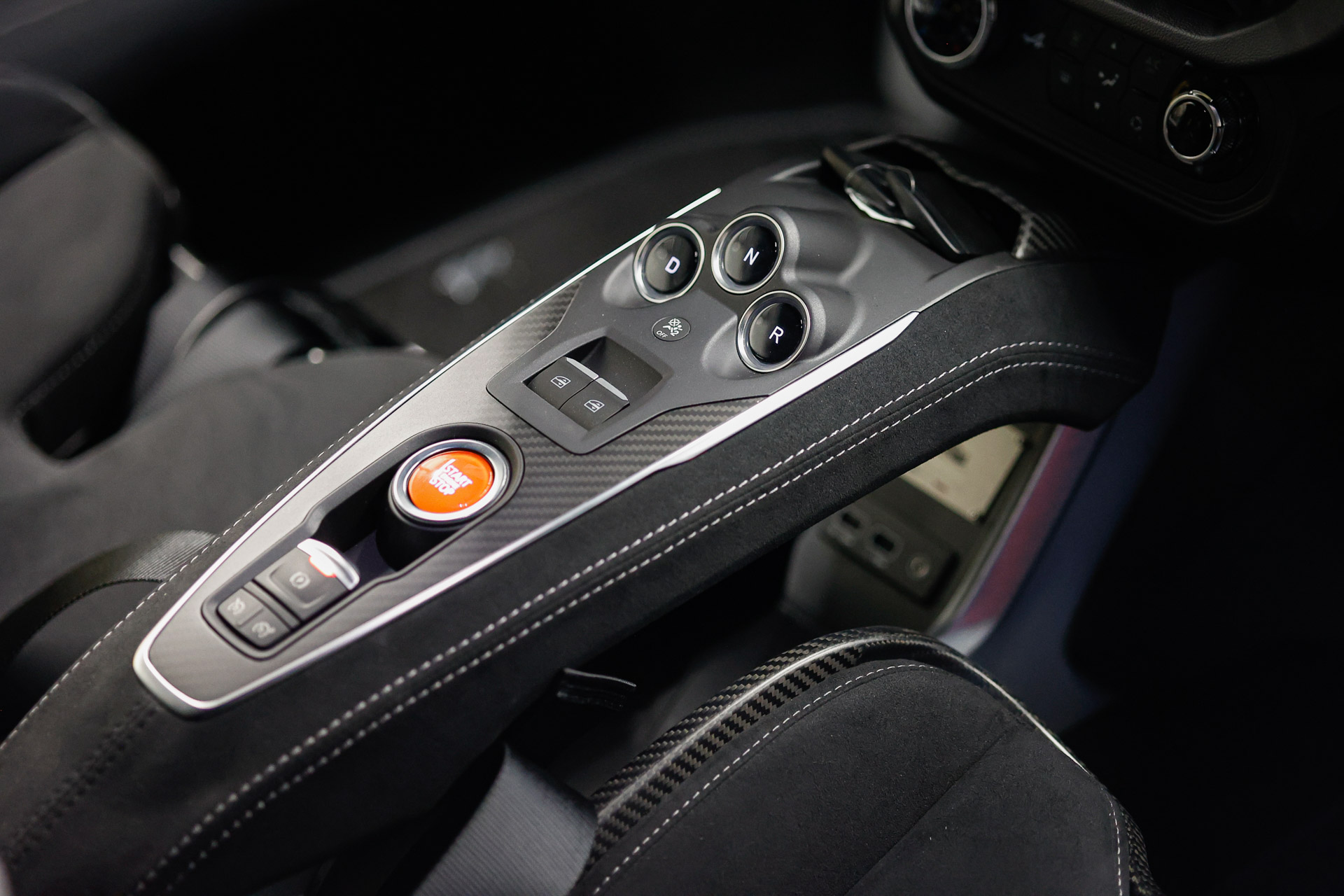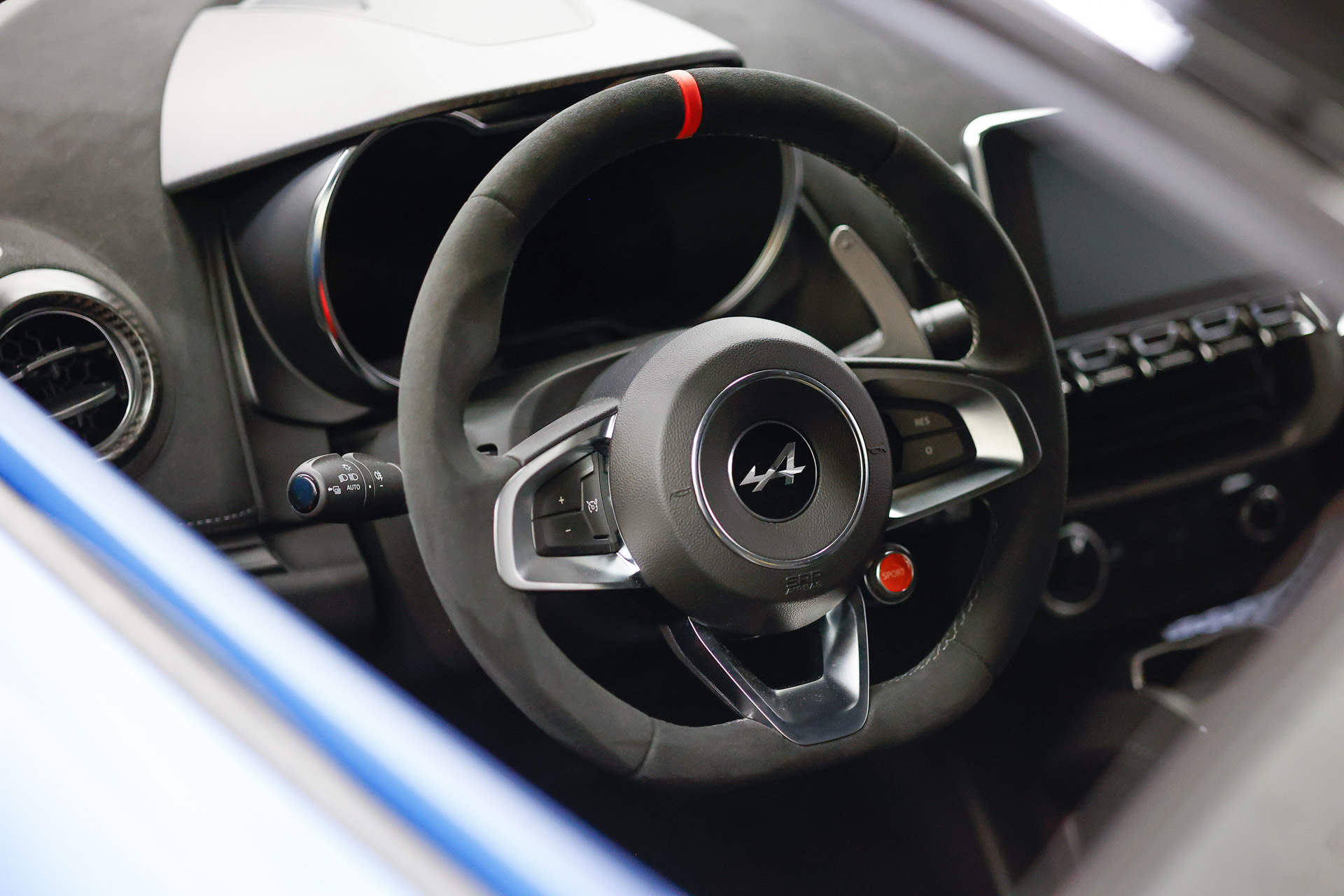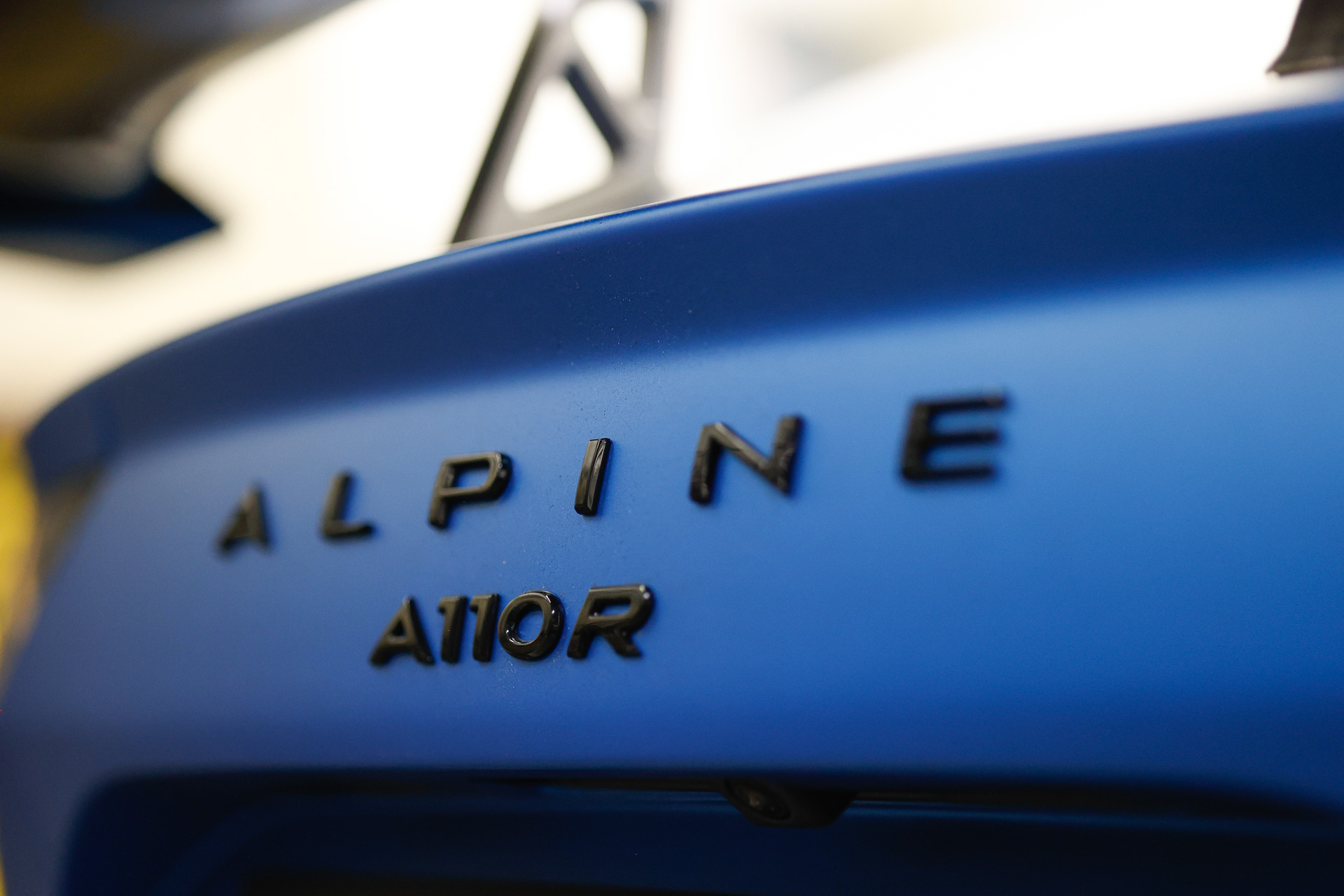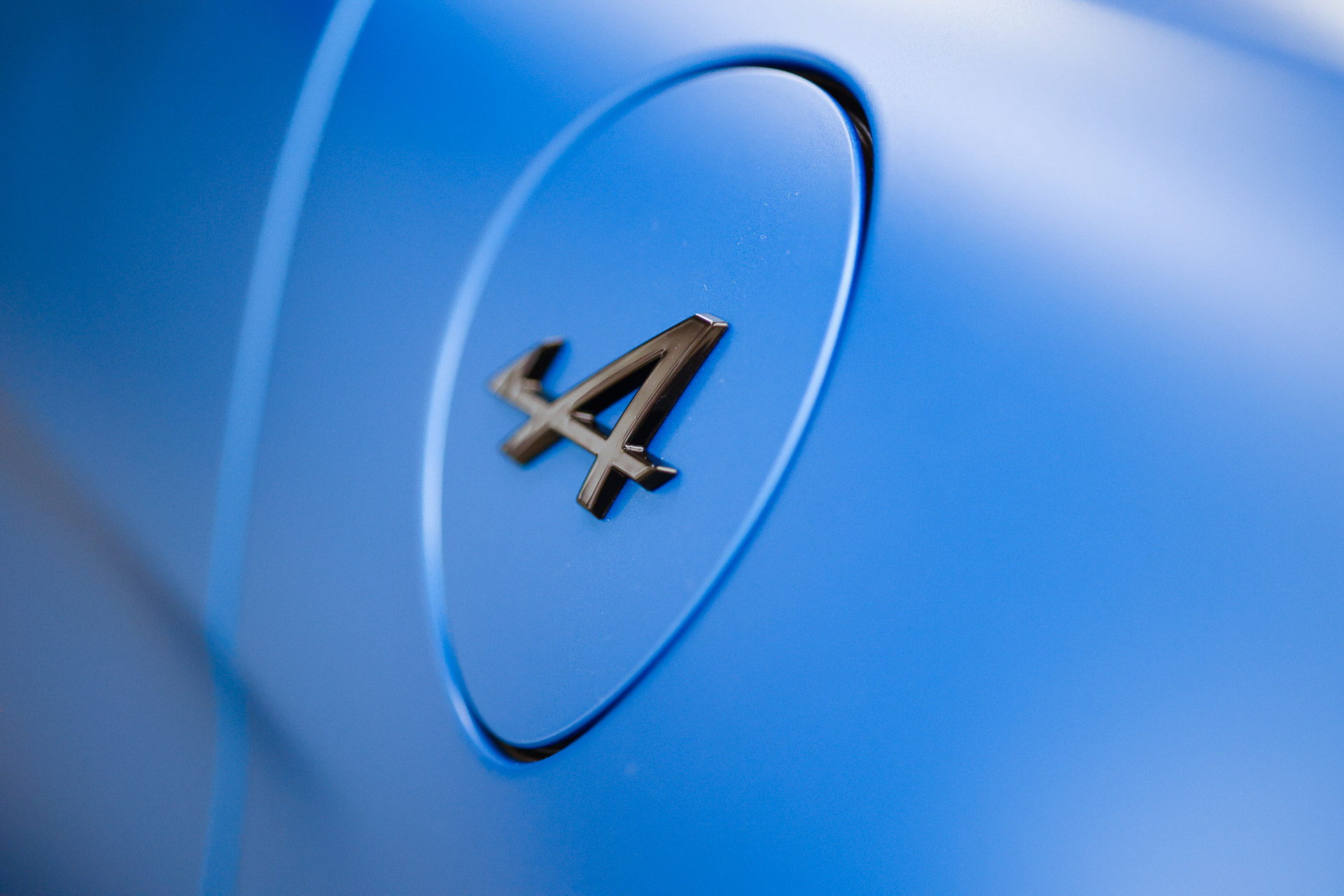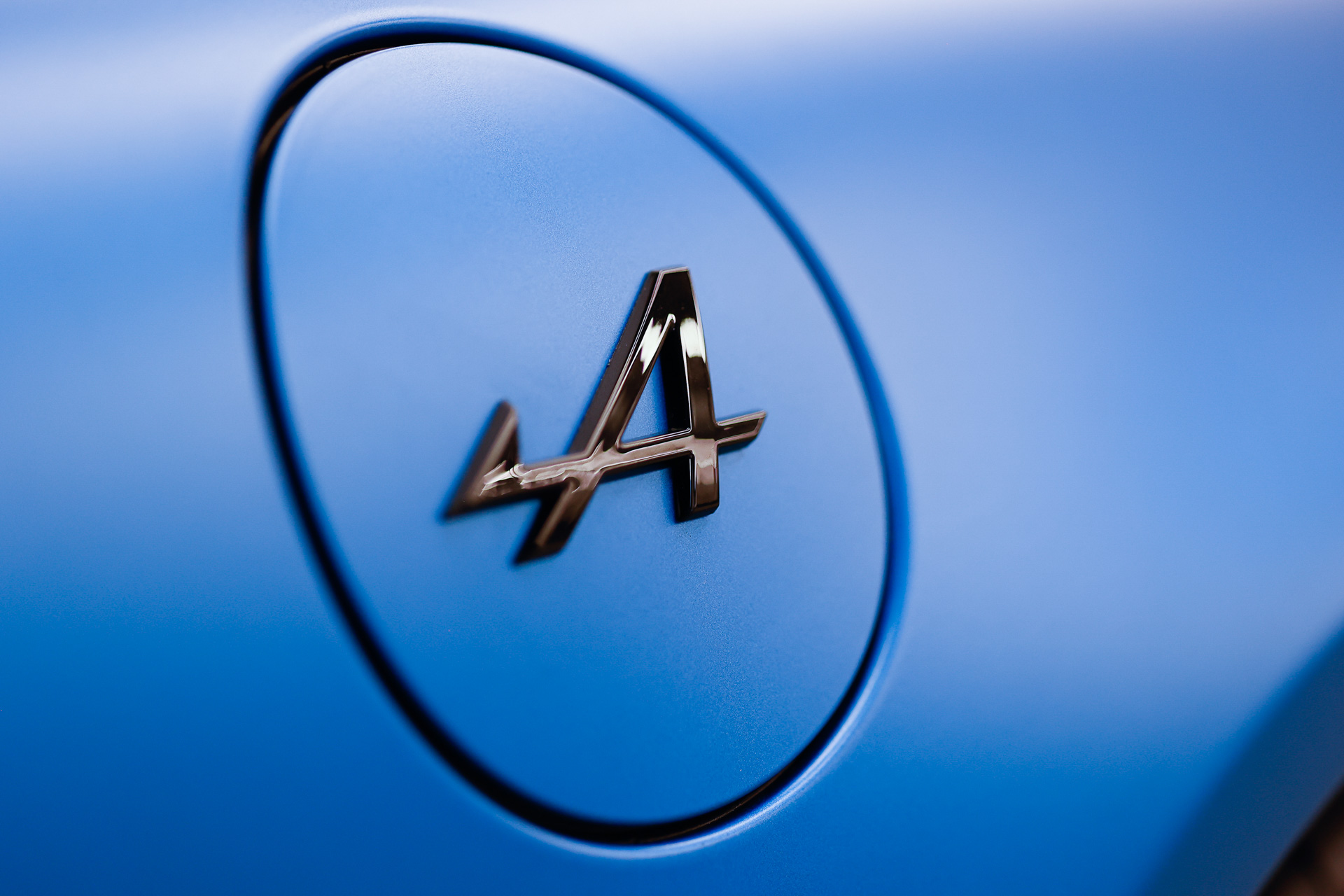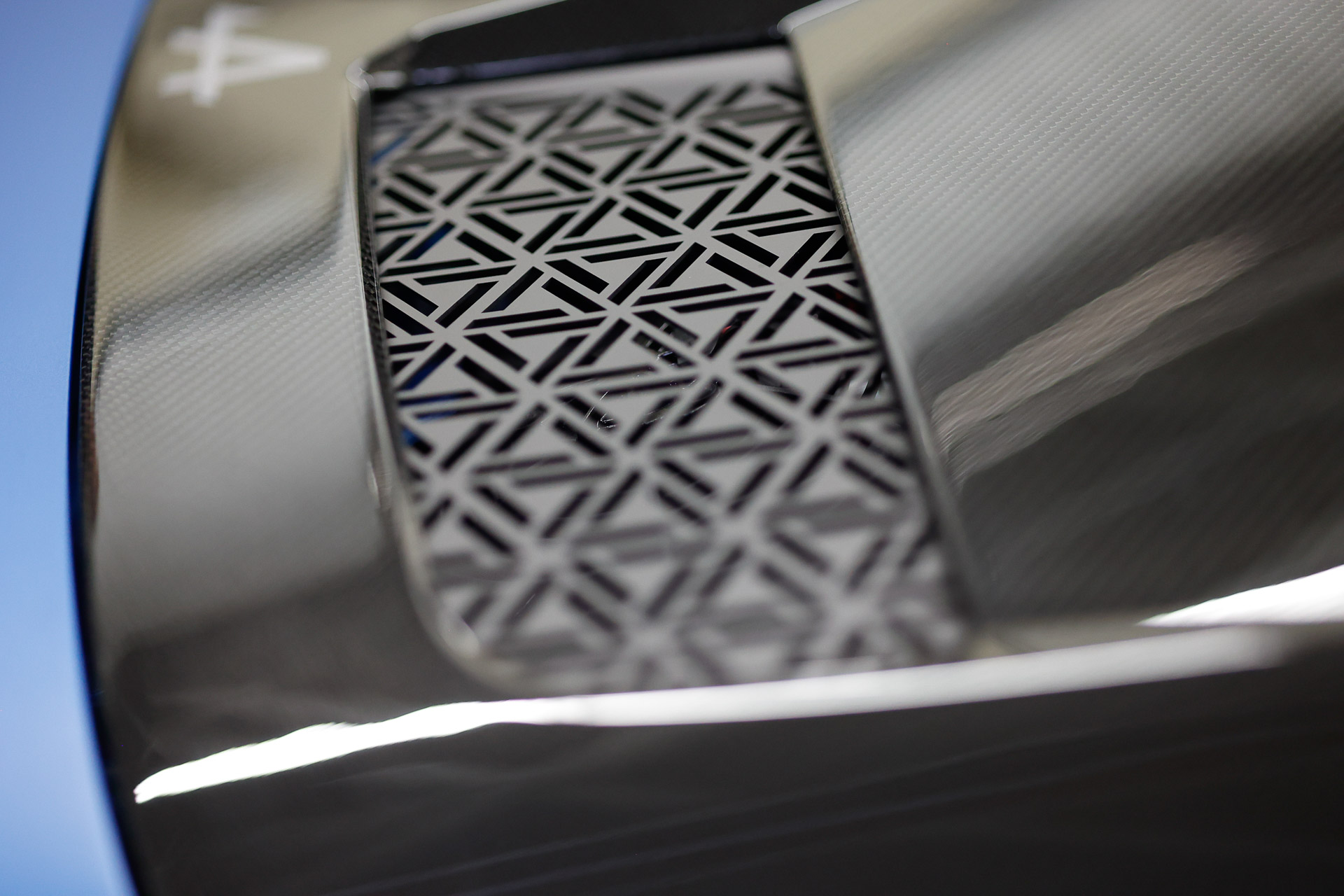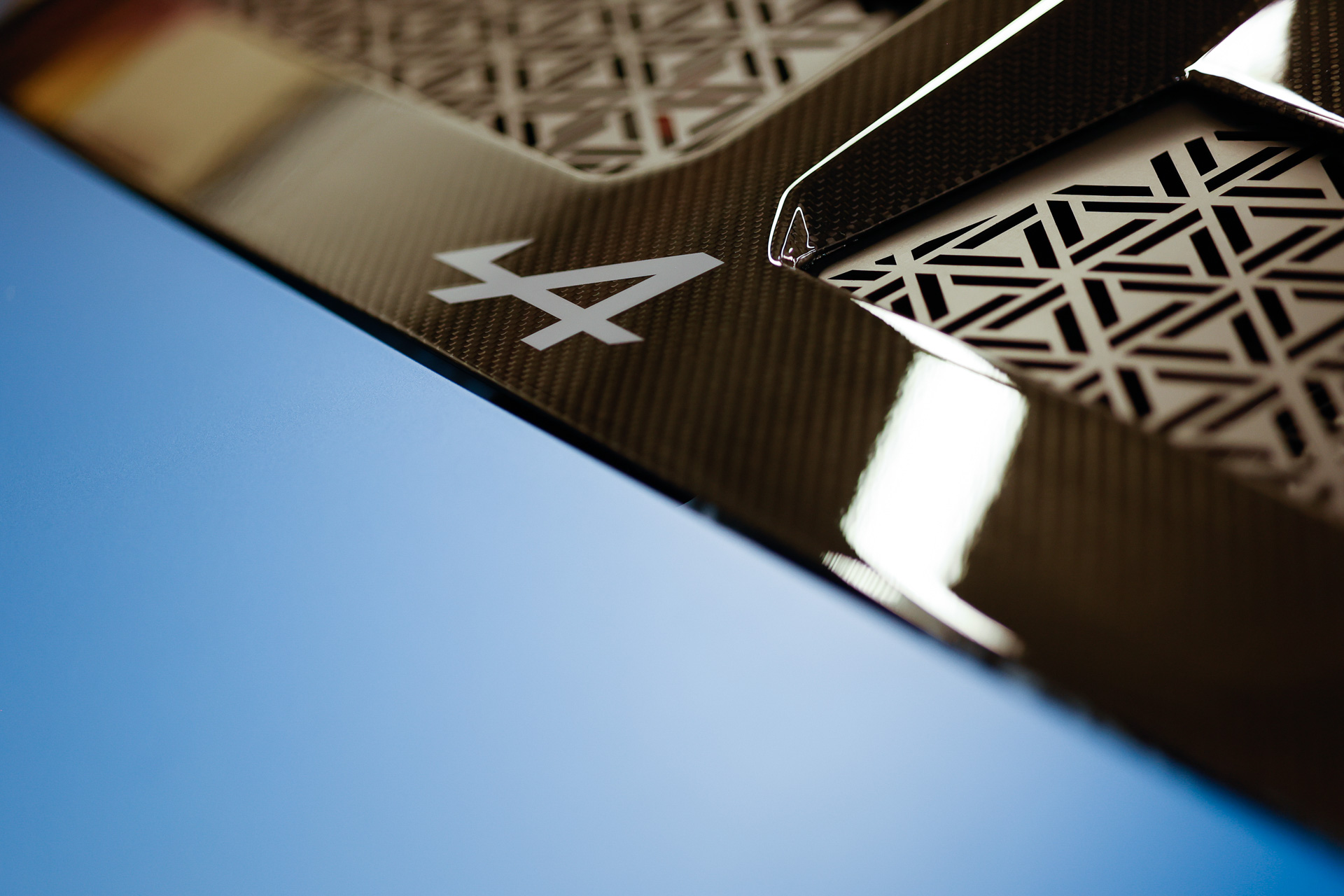We’ve updated this article with live images of the Alpine A110 R from its world premiere at the Paris Motor Show that runs Oct 17-23, 2022
The Alpine A110 already has a reputation as one of the most driver focused, daily-drivable sports cars around, but the new A110 R takes the art of the twisty road even more seriously.
Making its public debut today at the 2022 Paris Motor Show, the A110 R uses the same engine fitted to the A110 S, but is significantly faster both in a straight line and around the track thanks to a lower curb weight and additional downforce.
Let’s deal with the weight reduction first, because a Lotus-like obsession with low mass is part of the Alpine philosophy. The A110 S is already a feather on a breeze compared to a Porsche Cayman, weighing in at 2,460 lbs (1,116 kg), but Alpine has been able to to slice 75 lbs (34 kg) from that figure, bringing the weight down to only 2,385 lbs (1,082 kg).
That’s light. A Mazda MX-5 is only 66 lbs (30 kg) lighter and is outmuscled by 115 hp (116 PS). A Lotus Emira is 547 lbs (248 kg) heavier, though it does have a 99 hp (100 PS) advantage over the Alpine. The secret sauce that helps make an already light car lighter is, as you’ve probably guessed, carbon fiber, which is used extensively.
Related: Alpine A110 E-ternité Debuts As 239 HP Electric Prototype With A Removable Roof Panel
A carbon hood (re-styled to include two air intakes) saves 6.4 lbs (2.9 kg), and a set of carbon wheels, which intriguingly feature a more open design on the front axle to aid cooling, and a disc-like design at the rear to cut drag, are responsible for 27.6 lbs (12.5 kg) of the overall saving. Single-shell Sabelt seats made from carbon and fitted with six-point harnesses contribute 11 lbs (5 kg), and while Alpine doesn’t quote a weight figure for the unusual carbon rear window (which ceases to be a window as a result), it’s arguably the most arresting visual feature of the whole car.
Some of the carbon additions are specifically designed to improve high-speed downforce, including a wider diffuser that has bigger fins, incorporates vertical wide winglets to reduce aerodynamic turbulence and is helped out by cowlings on the rear suspension arms. Carbon side skirts extend the width of the floor, again reducing turbulence and also protecting the rear wheel from surrounding air, while a carbon spoiler with swan-neck mounts (effectively a repositioned, underslung version of the S’s spoiler) adds 64 lbs (29 kg) of downforce, and vents in the front contribute an additional 30.9 lbs (14 kg) of squeeze at the A110 R’s top speed.
As we learned from an earlier teaser, that top speed stands at 177 mph (285 km/h), up from 171 mph (275 km/h) for the A110 S that shares its engine and power output. Cutting a car’s weight doesn’t have huge implications for its top speed so that improvement can be chalked down not to more horsepower or less weight, but a 5 percent reduction in drag.
But cutting weight does improve acceleration. So while the R’s 1.8-liter turbo four produces the same 297 hp (300 PS) and 251 lb-ft (340 Nm) as it does in the A110 S and drives the rear wheels though the same seven-speed dual-clutch transmission, the lighter R can sprint to 62 mph (100 km/h) in 3.9 instead of 4.2 seconds.
And although the engine internals are the same, the sound it makes is quite different, promises Alpine, thanks to a new exhaust system that features double-wall pipes and which no longer contains an exhaust valve. It should also sound subjectively louder because Alpine has pared back some of the soundproofing and replaced the glass partition separating the cockpit from the engine bay with an aluminum divider.
Much of the A110 R’s on-track and cross-country performance advantage over the A110 S won’t come from weight and aerodynamic advantages, but from what Alpine has tweaked in the wheelhousings. Already 0.4-in (10 mm) lower than the S, the R can be dropped the same amount again for track work, the anti-roll bars are 10 and 25 percent stiffer front and rear respectively, and the springs are 10 percent stiffer at both ends. New dampers can be manually adjusted through 20 different bump and rebound settings and there are composite brake discs and semi-slick Michelin Pilot Sport Cup 2 tires at each corner.
Read Also: Should Alpine Give The A110 Successor A More Practical Hatchback Bodystyle?
The R gets its own launch color, Racing Mat Blue, which it shares with Alpine’s F1 car, while inside the big clues to the R’s identity besides the carbon buckets and total lack of rear visibility are the Porsche RS-style fabric door handles and yards of microfiber covering almost every surface. What Alpine hasn’t dropped any clues about is the price, but when orders open this month, buyers can expect to part with significantly more than the €72,500 (approx $70,000) that the S costs in France, or £60,040 in the UK. As with the regular A110 and A110 S though, this is another driver’s machine North American sports car fans will have to be content to admire from afar.




